

Art & Culture Travel Blog
History of travelling: how people started to travel.
- Tea Gudek Šnajdar
- Cultural Tourism

Although we often have a feeling like people are travelling for the last few decades only, the truth is – people are travelling for centuries. Old Romans were travelling to relax in their Mediterranean villas. At the same time, people in Eastern Asia wandered for cultural experiences. I’ve got so fascinated with the history of travelling, that I did my own little research on how people started to travel. And here is what I’ve learned.
History of travelling
I was always curious about the reason people started to travel. Was it for pure leisure? To relax? Or to learn about new cultures, and find themselves along the way?
I wanted to chaise the reason all the way to its source – to the first travellers. And hopped to find out what was the initial motivation for people to travel.
According to linguists, the word ‘travel’ was first used in the 14th century. However, people started to travel much earlier.
While looking at the history of travelling and the reasons people started to travel, I wanted to distinguish the difference between travellers and explorers. Most of the time, when thinking about travel in history, people like Marco Polo or Christopher Columbus are coming to mind. However, they weren’t really travellers in a modern sense. They were explorers and researchers. So, to really learn about how people started to travel, I wanted to focus on ordinary people. Travellers like you and me, if you wish.
Romans and their roads
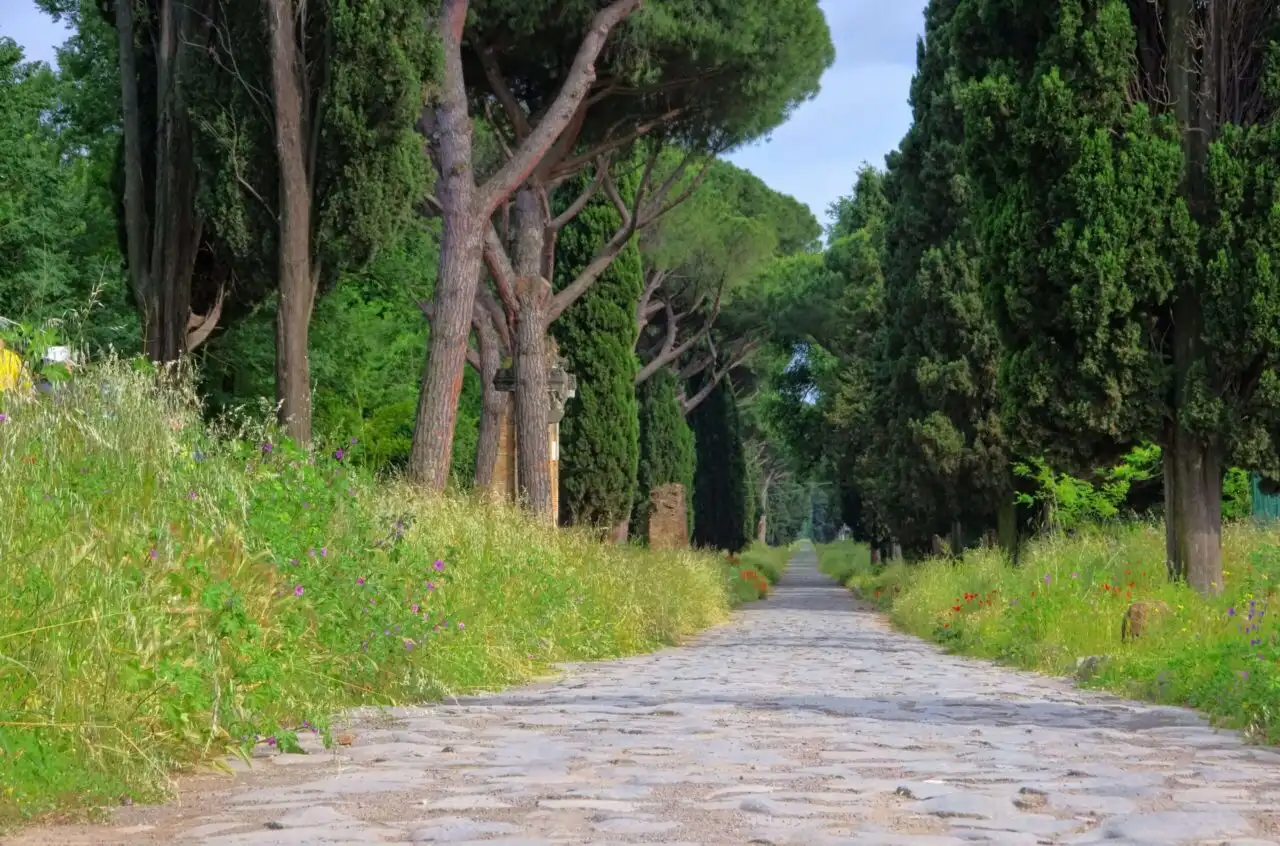
First people who started to travel for enjoyment only were, I’m sure you won’t be surprised, old Romans. Wealthy Romans would often go to their summer villas. And it was purely for leisure. They could, of course, start doing that because they invented something quite crucial for travelling – roads. Well developed network of roads was the reason they could travel safely and quickly.
However, there is another reason that motivated people in Antiquity to travel. And I was quite amazed when I learned about it.
It was a desire to learn. They believed travelling is an excellent way to learn about other cultures, by observing their art, architecture and listening to their languages.
Sounds familiar? It seems like Romans were the first culture tourists.
⤷ Read more : 20 Archaeological sites you have to visit in Europe
Travelling during the Middle Ages
It may come by surprise, but people started to wander more during the Middle Ages. And most of those journeys were pilgrimages.
Religion was the centre of life back in the Middle Ages. And the only things that connected this world with the saints people were worshipping, were the relics of saints. Pilgrims would often travel to another part of the country, or even Europe to visit some of the sacred places.
The most popular destinations for all those pilgrims was Santiago de Compostela, located in northwest Spain. People would travel for thousands of kilometres to reach it. To make a journey a bit easier for them, and to earn money from the newly developed tourism, many guest houses opened along the way. Pilgrims would often visit different towns and churches on their way, and while earning a ticket to heaven, do some sightseeing, as well.
Wealthy people were travelling in the caravans or by using the waterways. What’s changing in the Middle Ages was that travel wasn’t reserved only for the rich anymore. Lower classes are starting to travel, as well. They were travelling on foot, sleeping next to the roads or at some affordable accommodations. And were motivated by religious purposes.
⤷ TIP : You can still find many of those old pilgrim’s routes in Europe. When in old parts of the cities (especially in Belgium and the Netherlands ), look for the scallop shells on the roads. They will lead you to the local Saint-Jacob’s churches. Places dedicated to that saint were always linked to pilgrims and served as stops on their long journeys. In some cities, like in Antwerp , you can follow the scallop shell trails even today.
Below you can see one of the scallop shells on a street and Saint-Jacques Church in Tournai , Belgium.

Grand Tours of the 17th century
More impoverished people continued to travel for religious reasons during the following centuries. However, a new way of travelling appeared among wealthy people in Europe.
Grand tours are becoming quite fashionable among the young aristocrats at the beginning of the 17th century. As a part of their education (hmmm… culture tourists, again?) they would go on a long journey during which they were visiting famous European cities. Such as London , Paris , Rome or Venice, and were learning about their art, history and architecture.
Later on, those grand tours became more structured, and they were following precisely the same route. Often, young students would be accompanied by an educational tutor. And just to make the things easier for them, they were allowed to have their servants with them, too.
One of those young aristocrats was a young emperor, Peter the Great of Russia. He travelled around western Europe and has spent a significant amount of his time in the Netherlands. The architecture of Amsterdam and other Dutch cities definitely inspired a layout of the new city he has built – Saint Petersburg . So, travelling definitely remains an essential part of education since Roman times.
⤷ Read more : 15 Best museums in Europe you have to visit this year
The railway system and beginning of modern travel in the 19th century
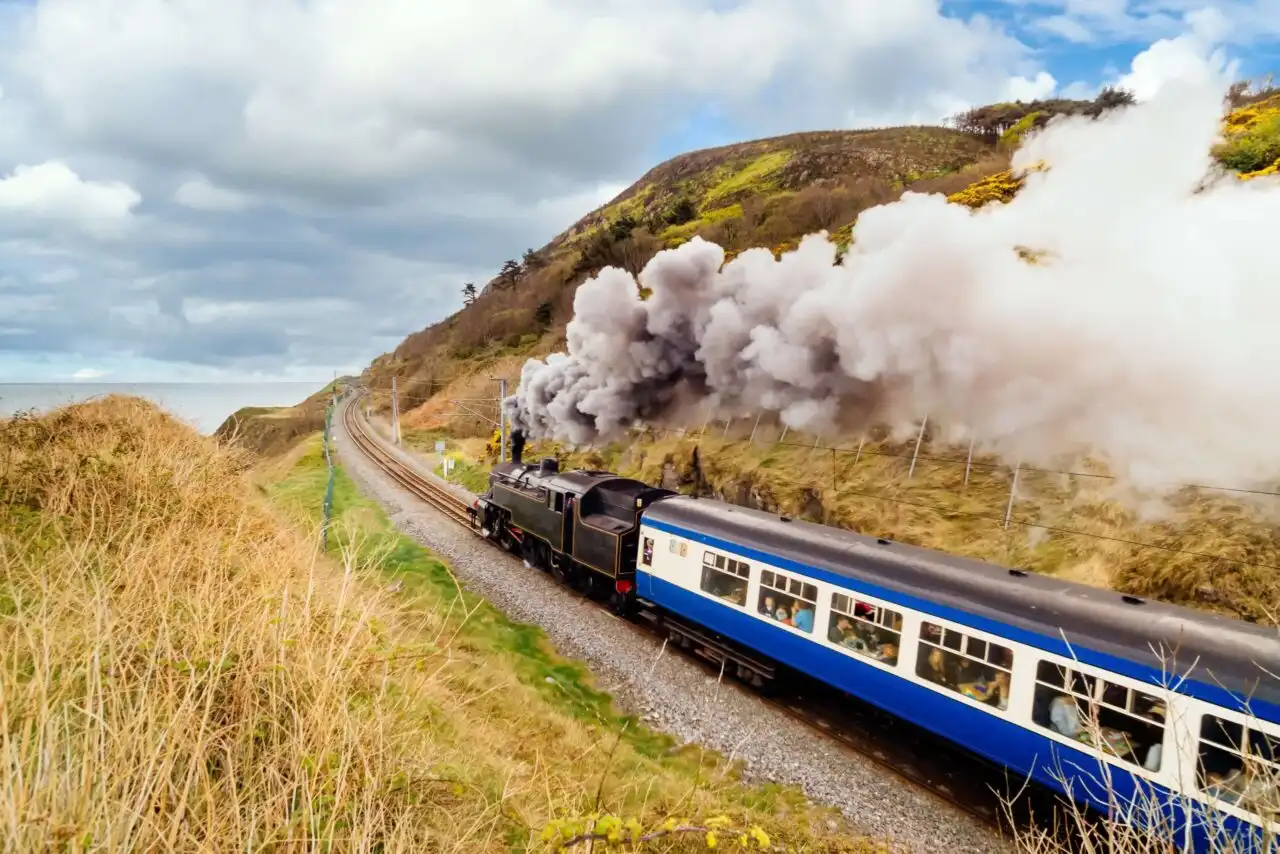
Before the railway system was invented, people mostly travelled on foot (budget travel) or by water (the first-class travel at that time). However, when in the 1840s, an extensive network of railways was built, people started to travel for fun.
Mid-19th century definitely marks a real beginning of modern tourism. It’s the time when the middle class started to grow. And they have found a way to travel easily around Europe.
It’s coming by no surprise that the first travel agency, founded by Thomas Cook in England, was established at that time, too. He was using recently developed trains together with a network of hotels to organise his first group trips.
⤷ Read more : The most interesting European myths and legends
History of travelling in the 20th century
Since then, things started to move quickly. With the development of transportation, travelling became much more accessible. Dutch ships would need around a year to travel from Amsterdam to Indonesia. Today, for the same trip, we need less than a day on a plane.
After the Second World War, with the rise of air travel, people started to travel more and more. And with the internet and all the cool apps we have on our smartphones, it’s easier than ever to move and navigate your way in a new country. Mass tourism developed in the 1960s. But, with the new millennium, we started to face the over-tourism.
We can be anywhere in the world in less than two days. And although it’s a great privilege of our time, it also bears some responsibilities. However, maybe the key is to learn from history again and do what old Romans did so well. Travel to learn, explore local history and art, and be true culture tourists.
History of Travelling , How people started to travel , Travel
Join Us On YouTube!
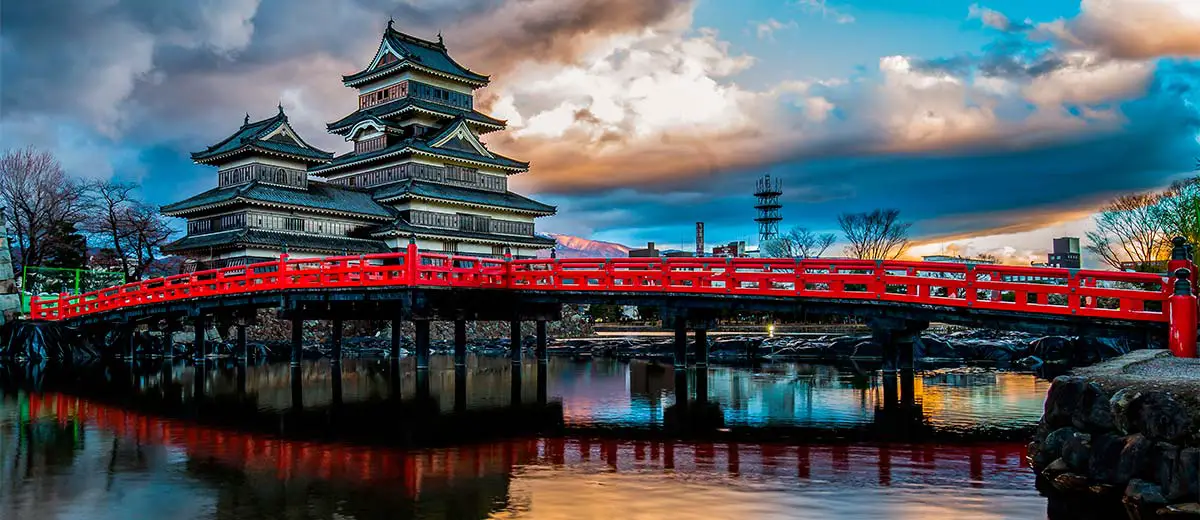
Matsumoto Castle, Nagano, Japan
A Brief History of Travel and Tourism
Utilizing the widest definition of the word, human beings have been travelling since the dawn of time. No matter one’s beliefs about the creation of humans, everyone can agree our species began in some single locale, likely Africa or the Middle East , and ‘travelled’ outwards, settling new lands. However, most of this ‘travel’ was done out of necessity and war, often without the intent of return. It wouldn’t be until Antiquity, or the glory days of the Greek and Roman empires, that tourism, or leisure travel, would be introduced.
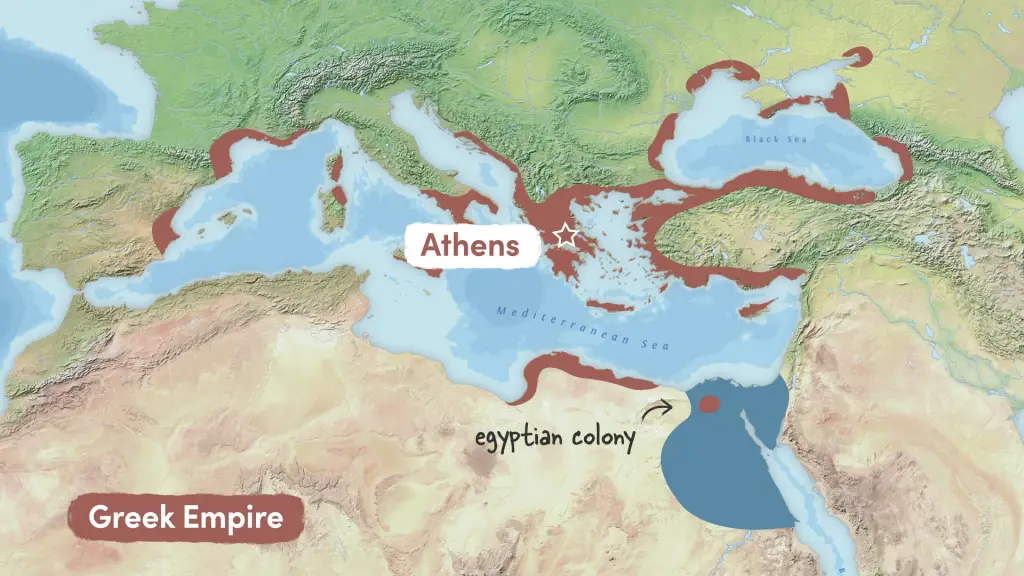
Aristocratic Tourism
In those days, tourism was a privilege almost entirely confined to the wealthy, who travelled largely for cultural exploration. One has to remember, the Greek and Roman upper classes were people who prided themselves on artistic, scientific, and philosophical pursuits. It follows, then, that these early travellers largely sought to learn the arts, languages, and cultures of their destinations.

Soon enough, travelling for leisure’s sake began to gain popularity; from the Roman Empire arises some of the earliest examples of travel resorts and spas in the world. Though they documented their experiences most thoroughly, the elite Europeans were not the only ones travelling in ancient times. In eastern Asia , it was popular for nobles to travel across the countryside for the religious and cultural experience it offered, oftentimes stopping at temples and sacred sites during their travels.
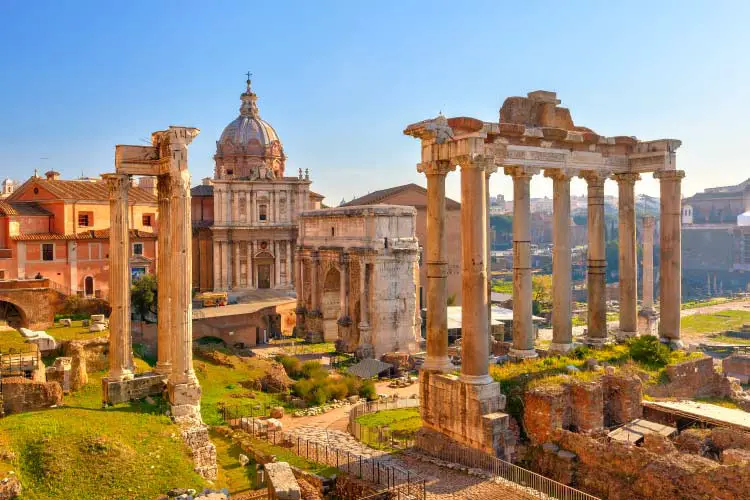
Religious Tourism
During the Middle Ages, travel took on a new meaning. Although leisurely travel was still reserved for the upper class, it became more and more common for members of the upper and even lower classes to embark on pilgrimages. Most of the major religions at the time, including the Islamic, Judaic, and Christian traditions, encouraged their practitioners to conduct pilgrimages.
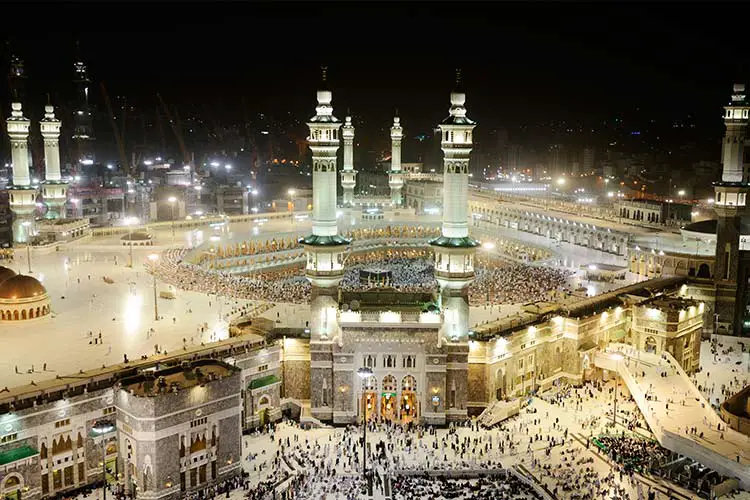
Largely unaided by technology, most of these journeys were done on foot, often occasionally with a beast of burden to carry supplies. The wealthy were able to afford other forms of travel including horseback and ship. Furthermore, the Middle Ages saw the emergence of connected shipping routes. As ports grew, travel opportunities increased, and the dock was typically the start of any long-distance travel during the Middle Ages.
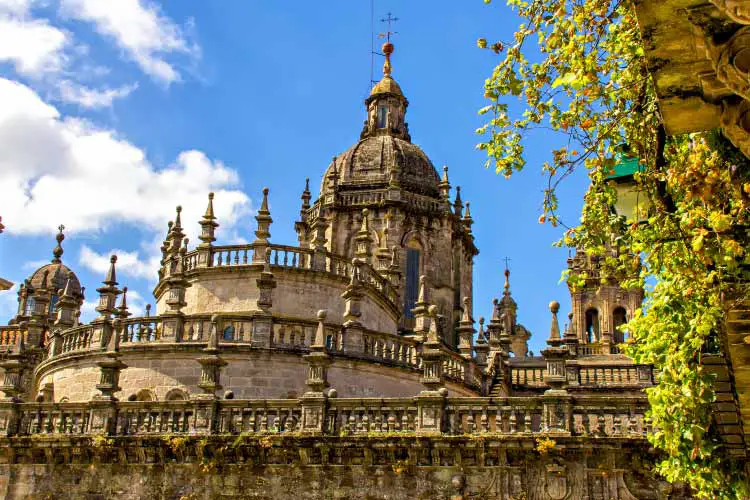
The Grand Tour
Travel continued to exist in this way for some time: the rich travelled primarily for cultural and leisure reasons, while the poor travelled largely for religious reasons, if at all. The next major development travel underwent was the establishment of the Grand Tour. Undertaken by the elite men of Western and Northern European countries , the Grand Tour took young travellers across Europe in a “rite of passage” meant to educate the wealthy after they finished their education but before adulthood. Historians cite this tradition as the origin of the modern tourism industry and indicate that the tradition had become well established in European culture by the 1660s.
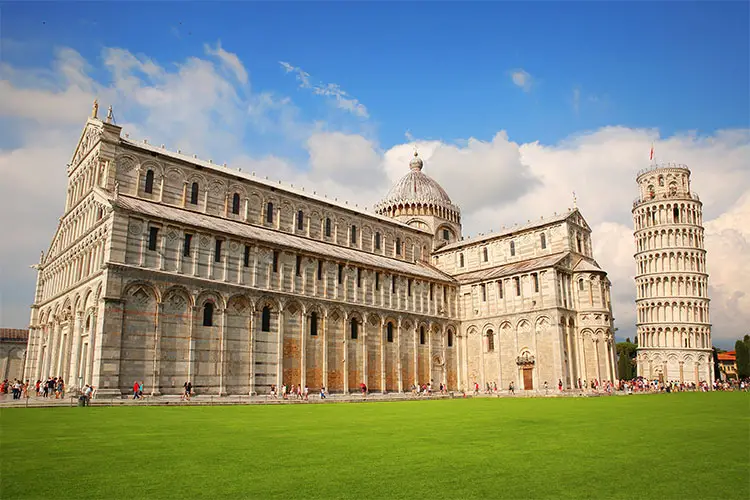
Like many traditions, the Grand Tour eventually developed a rigid structure. Tourists were expected to follow a set itinerary and travelled with a tutor. The Grand Tour typically began in England, moved south through France into Switzerland and Italy. After spending a few months in Italy, the traveller and his tutor moved upwards through Germany and into Holland before returning to England. These trips utilized the most advanced travel technology of the day, including ships and collapsable coaches, and it wasn’t entirely uncommon for the traveller and tutor to be waited on by a handful of servants.
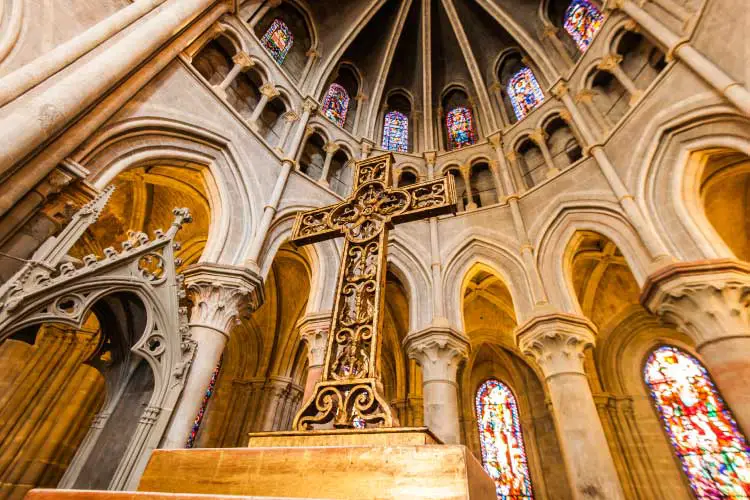
Tourism For The Masses
The Grand Tour remained a popular cultural phenomenon amongst the rich until the 1840s, which saw the advent of the first widespread railway system across system Europe. Immediately, this innovation opened the possibility of embarking on a Grand Tour to the middle classes, and soon it became more popular for middle and even working-class citizens to travel for leisure.
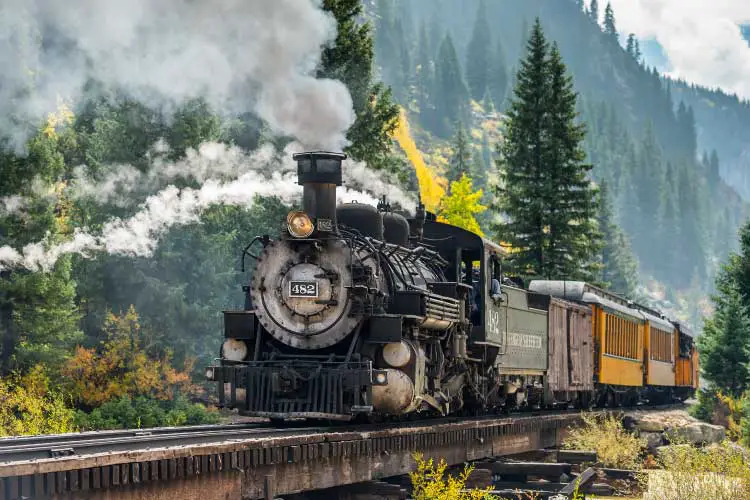
More importantly, the implementation of railway systems across Europe and the United States positioned the world for the Industrial Revolution. The United Kingdom is often cited as the first country to actively promote leisure time to its industrial class, and as a result, the country had a strong impact on the early development of the tourism industry. One hugely influential player in the history of travel and tourism was Englishmen Thomas Cook, who established the first-ever travel agency to provide ‘inclusive individual travel’ in the 1840s.
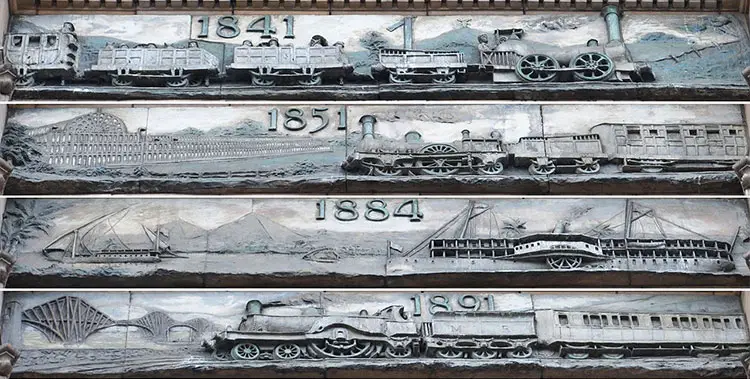
This means that travellers move independently in their travels, but all the food, lodging, and travel expenses were set at a fixed price for a predetermined length of time. This allowed travellers to take any route they fancied throughout Europe without having to ascertain food or lodging ahead of time. This fact, coupled with the falling ticket prices of railways, meant that long-distance travel was dramatically cheaper and faster than ever before. This not only further lowered the barriers to leisure travel but also drastically increased the incidences of business-related travel. As one can imagine, Cook’s Tours became massively popular, and the company remains successful today as the Thomas Cook Group.
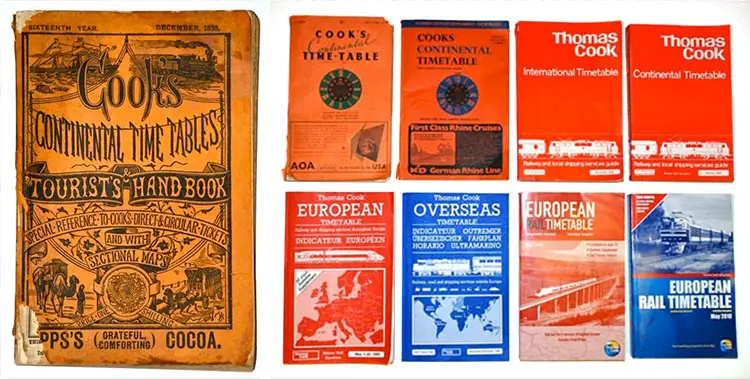
In short, the introduction of a widespread railway system gifted a massive boost to the tourism industry; this boon would largely reflect that the aeroplane would have in the early-20th century. More so than any other technological development, the aeroplane opened the floodgates of mass international tourism. Behemoth multinational airlines such as Pan Am, Delta, and American Airlines arose during the 1900s, and suddenly the physical boundaries between cities were rendered useless. It has become possible for a traveller to get nearly anywhere on the globe in less than 48 hours, for a price that most middle and working-class members can achieve.
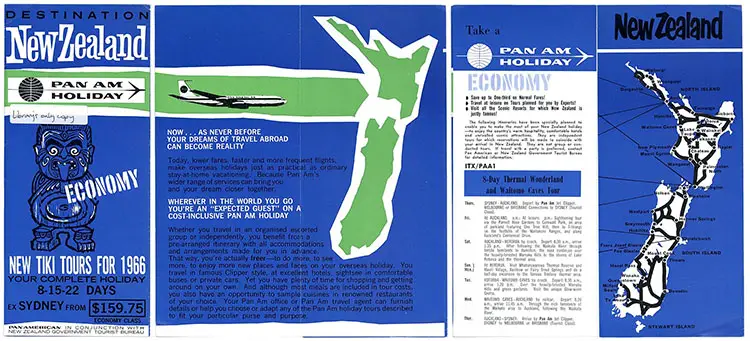
Today, travel stands as one of the most economically important leisure activities in the world. The tourism market is so large that it has split into an astounding number of niche markets, including ecotourism , backpacking, and historical tourism. As of the writing of this article, there have even been a handful of trips into orbit around Earth branded as “space tourism”, a new and exciting chapter in the history of travel and tourism. The story of tourism displays a remarkable connection to the technology that makes travel possible. Transportation innovations like the train and aeroplane have eliminated the difficulties and lowered the costs of long-distance travel, and planet Earth has truly become a smaller place because of it.
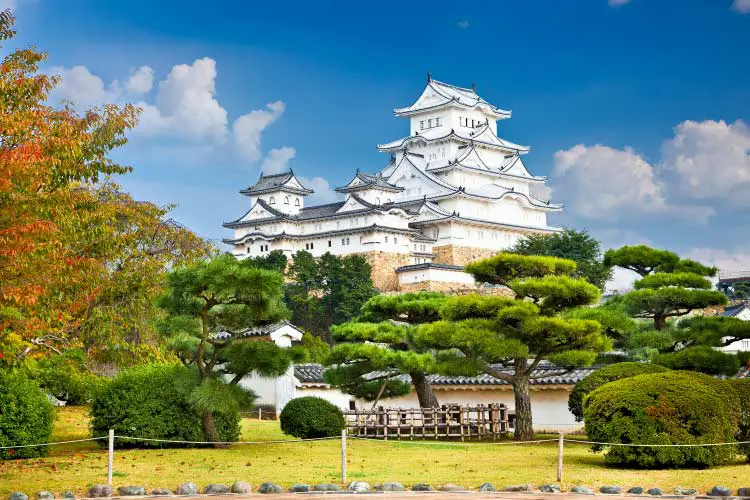
© Textbook Travel 2024 ⋅ View Privacy Policy
How and When Did Tourism Start?
Most of us love to travel and when we think about travelling, what we probably have in mind are the best two or three weeks of the year. Tourism has become a major industry and it creates around 100 million jobs worldwide.
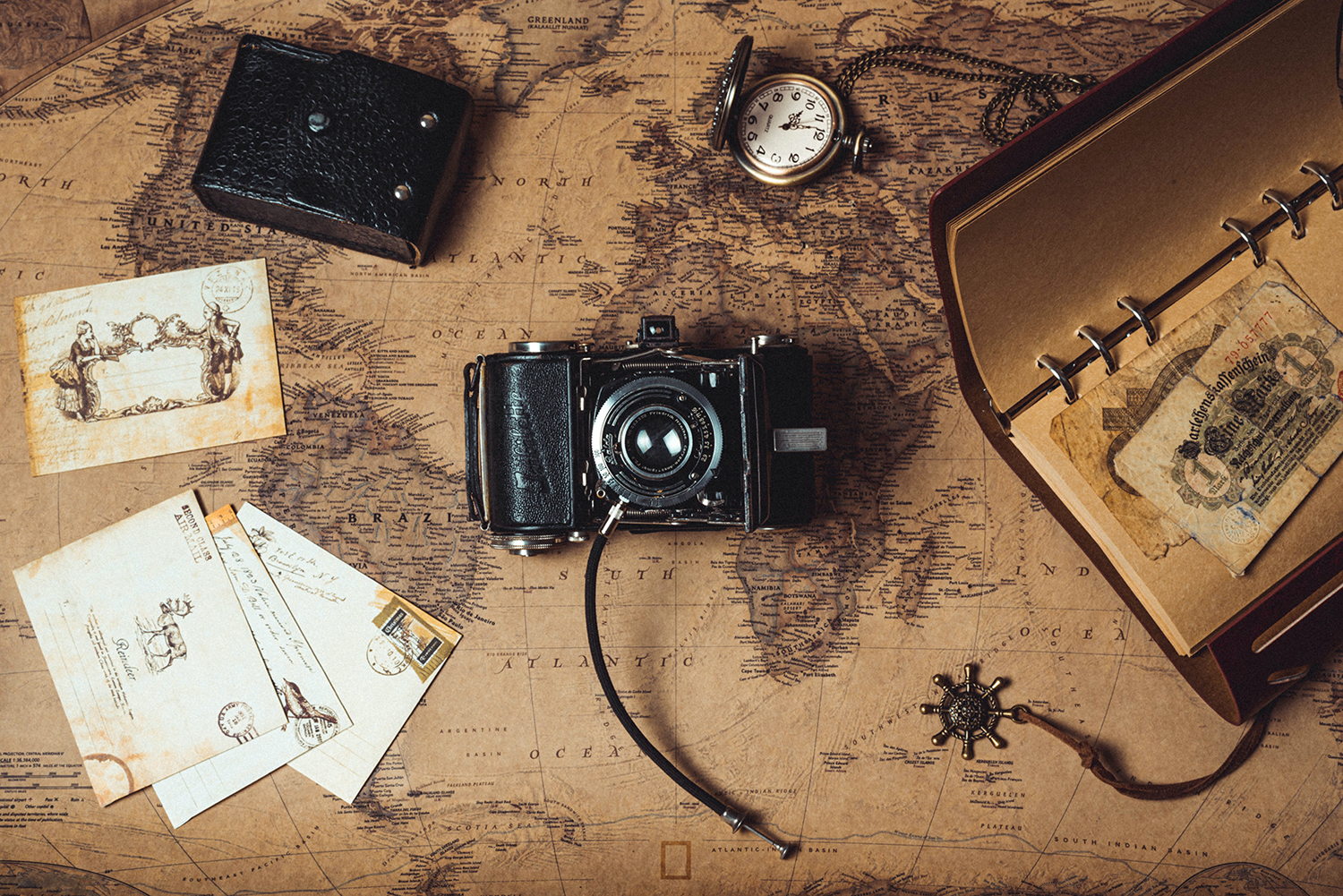
Achim Riemann
In 1854, the first travel agency opened. In 1869, one of the first group tours was launched. It included attendance at the opening of the Suez Canal in Egypt.
But how did it all start?
A long time ago, people initially moved around for practical reasons, such as looking for food or water, or fleeing natural disasters or enemies. But as early as ancient Egypt and in the other “high” cultures found throughout the continents at the time, people started to travel for religious reasons. They set out on pilgrimages, for example to Mecca, or on journeys to take a ritual bath in the Ganges River. That was the beginning of tourism.
What about modern tourism?
Modern tourism can be traced back to the so-called “Grand Tour”, which was an educational journey across Europe. One of the first who embarked on this journey was the King of Poland and Grand Duke of Lithuania, Wladyslaw IV Vasa, also known as Wladislaus Sigismundus, Prince of Poland and Sweden. And yes, the grand tour was just for the super-rich. In 1624, Wladyslaw travelled to Germany, Belgium, the Netherlands, France, Switzerland, Italy, Austria and the Czech Republic. (1)
Poor or even normal people had neither the money nor the time to go on a holiday. However, that started to change at the end of the 19th century. Around 1880, employees in Europe and North America were granted their first work-free days besides Sundays and the mostly Christian holidays, such as Easter or Christmas. These extra work-free days were usually unpaid in the beginning. Since most people couldn’t spare the money for travel, this led to excursions into the surroundings rather than travelling.

The founders of international “tourism” in Europe were the British
Thomas Cook is considered the founder of what is known as organized “package” holidays. In the last decades of the 19th century, the upper social classes in England were so wealthy due to the income from the British Empire that they were the first to be able to afford trips to far-flung areas. (1)
In 1854, the first travel agency opened. In 1869, one of the first group tours was launched. It included attendance at the opening of the Suez Canal in Egypt. From 1889, people took holiday cruises on steamships with musical performances. Seaside holidays became really popular around 1900 (and continue to be popular to this today). From the 1970s onwards, many in the industrialised countries could finally afford a holiday trip. The first criticism over this arose at the beginning of the 1970s: due to tourism, there were as many tourists in Spain in 1973 as there were inhabitants. (2)
In 2019, before the coronavirus pandemic, 1.5 billion tourist arrivals were recorded around the world, a 4% increase compared to 2018's figures. The most visited countries in 2019 were France with 89 million tourists, followed by Spain with 83 million tourists and the United States with 80 million tourists. China and Italy sit at fourth and fifth places, respectively, with 63 million tourists in China and 62 million tourists in Italy. (3)
And what are the most visited tourist attractions worldwide? According to a recent research from TripAdvisor, these are the top five: the Colosseum (Italy), the Louvre (France), the Vatican, the Statue of Liberty (USA), the Eiffel Tower (France) (4).
- Wikipedia: https://de.wikipedia.org/wiki/Tourismus , 12.03.2022
- Wikipedia: https://de.wikipedia.org/wiki/Massentourismus , 12.03.2022
- TravelBook: https://www.travelbook.de/ziele/laender/die-meistbereisten-laender-der-welt
- Travel Wanderlust: https://www.travelwanderlust.co/articles/most-visited-tourist-attractions-in-the-world/ 12.03.2022
Subscribe to newsletter

Tourism Through the Ages: The Human Desire to Explore
- Read Later
Although taking a summer vacation is now a standard aspect of modern-day civilization for many, it wasn’t always that way. Tourism was far less common in ancient times than it is today, but that certainly doesn’t mean it didn’t occur at all. Even in ancient times, people had a natural curiosity about the world around them and yearned to explore.
However, tourism didn’t necessarily look the same then as it does now. So what did tourism look like, and where did ancient peoples like to travel the most? What was the perception of tourists in ancient times versus today?
What was Ancient Tourism Like?
Tourism as we think of it has not always existed. In fact, travel was not possible for most people in ancient times. Travel was often difficult and full of dangers such as disease , starvation, dehydration, or death by wild animals. Because of this, travel was often seen as too risky unless absolutely necessary, such as for relocation, or religious, political, or medical purposes.
However, travel did still happen. Armies would travel to take over new lands or conquer new cities. Tradesmen would travel to popular trade spots throughout their countries to sell goods for profits, while others would travel there to buy utilitarian or luxury items for their homes. Others would travel for important religious ceremonies that they were required to attend. Travel of this nature was considered a need within society, rather than a want, so not tourism as such.
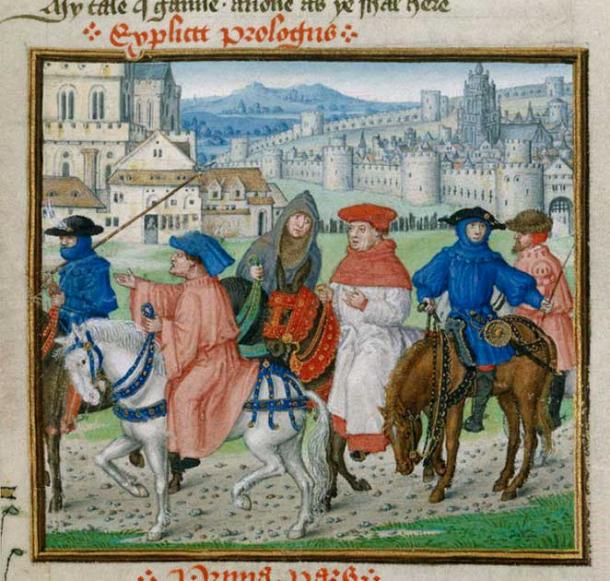
Lydgate and Pilgrims to Canterbury. Early ‘tourism’ was frequently for religious ceremonies and pilgrimages. (Jim Forest / CC BY NC ND 2.0 )
As time went on, technology advanced. With the expansion of roads and the development of more efficient travel using boats , chariots , and carriages, travel for leisure, or tourism, became an intriguing possibility. However, many individuals struggled with the same tourism questions we do today: if they could even afford to travel, and if they could, where they would go.
Early tourists tended to avoid cities with political or civil unrest as it could be dangerous in the event of an uprising. It’s unsurprising these would be eliminated as tourism destinations . They would also avoid cities their own regions had hostility towards, as that was also considered risky business. They would instead choose regions that were not known to be dangerous, just to see what was out there.
Although technological advancements made travel easier than walking or horseback, it was still perilous and time-consuming. Travelers would often bring small weapons for protection, along with any money they planned to spend. Travel would take from a few days to a few weeks (or even a few months!), depending on how far they planned to venture out. This also meant having to take preserved food with them to last the journey, or knowing where to stop along the way to find food when hungry. There were few to no establish tourism ‘rest stops’ in ancient times.
- Colosseum Will Have a Floor For The First Time in 1500 Years!
- Ancient Journeys: What was Travel Like for the Romans?
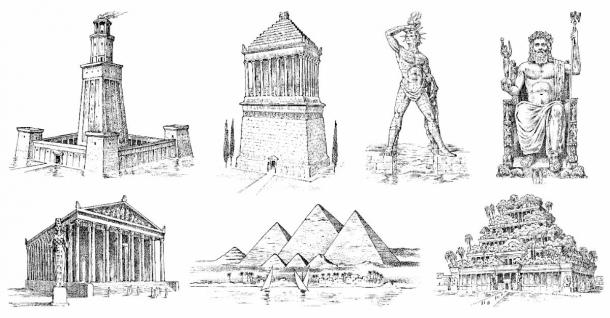
The Seven Wonders of the Ancient World ( artbalitskiy / Adobe Stock)
Tourism Destinations of the Ancient World
There were many tourism destinations available in ancient times, but some were more popular than others. Particularly, ancient tourists enjoyed tourism spots that served multiple purposes. This started as early as the times of the ancient Egyptians , who often traveled for government activities but would stay in foreign areas longer than necessary to enjoy the local shops, restaurants, games, and other forms of entertainment.
This desire to stay abroad for entertainment continued with the Roman Empire. The Romans developed a system of roads that covered approximately 50,000 miles, in order to make travel easier. At the time, traveling 30 miles would take about a day, and they used that information to establish an inn system. Through this system, an inn would be placed approximately every 30 miles, so that you always knew you had a place to rest in the evenings as you traveled out.
With more tourism establishments like inns along the roads , travel felt safer as well. There would be more people present in case of an emergency, and a lower chance of running out of food or water. The risk of natural predators would be lower as well, since travel would no longer take place through endless plains or overgrown wilderness. The Roman system became so well-established that people from surrounding areas would visit Rome, just to see the roads, inns, and other established infrastructure.
Language and currency were an important part of tourism at this time as well. If your destination used a different currency or spoke a different language, you would likely be a bit reserved about spending much time there (if any time at all!). As a result, common tourism areas did business in several common languages, so they could be more inclusive of visitors and receive more tourism.
Tourism in the Middle Ages: Risky Business
After the fall of the Roman Empire , tourism was not the same. In fact, tourism hardly happened at all anymore because there was too much risk involved. Nations were at war with one another, and traveling to a new place meant inevitable danger for the traveler and their family. Lots of the efficient transportation infrastructure were now destroyed, and languages were more separated than ever.
Travel returned to being a necessity rather than a vacation. Religious and political motives were the primary causes of any travel, as nations attempted to overtake one another. Trade routes had to be re-established, although many were still unwilling to risk the trek. It wasn’t until Marco Polo took the risk and began to write about his solo tourism in the 13th century that people began taking interest in exploration again.
By the Renaissance , trade began to take hold once more, and so merchants were willing to travel further than before. Additional trade and tourism businesses opened, and commercialism steadily increased, especially in Europe. People that would visit these trading posts to purchase new and luxury goods would wonder what the rest of the world was like, especially the sources of their favorite goods. This then ushered in the Grand Tour Era.
- Why Did Ancient People Travel Thousands of Kilometers for Incense?
- The Surprising and Iconic Bronze Age Egtved Girl: Teenage Remains Tell a Story of Trade and Travel

Exotic new products entering Renaissance markets fed a desire for tourism, Jan van Kessel the Elder 1650-1660 ( Public Domain )
The Grand Tour Era: Tourism for the Rich and Famous
The Grand Tour Era, as can be assumed by its name, was a major point in history for tourism. Between 1613 and 1785, the Grand Tour Era established tourism as a norm throughout many societies. However, it wasn’t always easy. Traveling at this time was mostly reserved for the upper classes, as travel and lodging had increased in price due to high demand. Rooms that could be provided for an average family were instead reserved for those able to pay the most.
Tourism was also held in high regard at this time because it was often used as a form of education. The children of the wealthy would travel abroad to gain an understanding of the world around them, making them more knowledgeable and well-rounded. Someone who’d had the opportunity to engage in tourism was seen as having a higher status than most, since they were perceived as more educated.
The most popular tourism regions at this time included Germany, Italy, France, and Switzerland. Europeans would often travel to these countries by carriage because it was more comfortable. Their carriage would be driven by an experienced chauffeur familiar with the routes, to make travel as efficient as possible. Tourists would frequently bring someone with them that would care for them, whether a servant or a more experienced traveler.
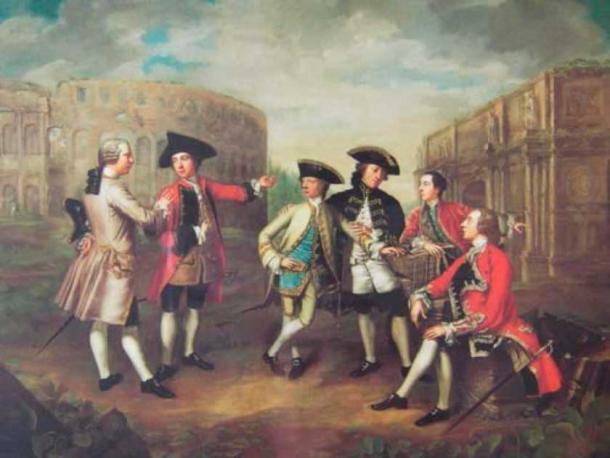
British Gentlemen in Rome, circa 1750 ( Public Domain )
Ushering in a New Era: The Industrial Revolution to Modern Times
Towards the end of the 18th century, tourism faced new challenges. The Industrial Revolution had changed tourism forever. Since people had more stable employment, they couldn’t take off for long periods of time to travel. Workers were stuck in their factories and businesses all week, unable to leave without jeopardizing the entire organization. Teamwork was essential and left no flexibility for vacationing.
However, the Industrial Revolution also helped people to travel more easily too. With new technology, travel became more efficient. Plus, for many workers, higher salaries contributed to their ability to go on a nice vacation. Additionally, business trips were increasing, to open more businesses and factories.
After several decades tied down to work and missing out on tourism experiences, workers began tiring of their overworked schedules. With more money came greater desire to expand one’s worldview. Planes, cars, and boats could be used to travel more quickly and comfortably than before. Office jobs also became more popular for their greater flexibility, and paychecks began to be used to see the world.
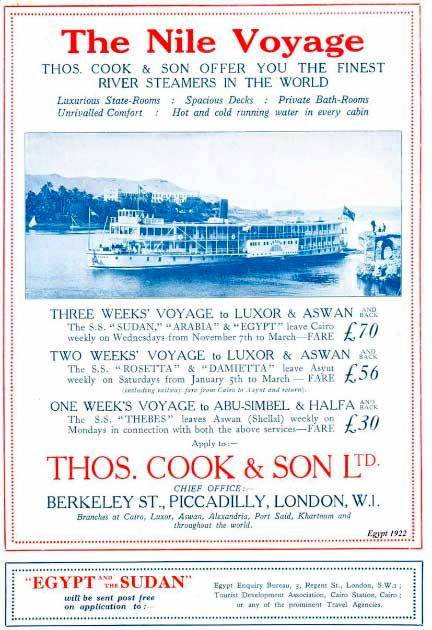
A 1922 Thomas Cook ad for a three-week trip on the Nile for £70 ($80) ( Public Domain )
At this point, tourism became an essential part of a fulfilling life. Countries such as France became hot spots for tourism because they had advanced technology and roads compared to other regions. Thomas Cook, an English businessman, inspired those without tourism experience to take a leap and go on an adventure. Later, paid work leave established for many in the 20th century ensured that more families could take the time to travel. It was the biggest increase in tourism since the Grand Tour Era.
Throughout the 20th century, hotels and motels became more common businesses worldwide, further fueling the tourism industry. Later, the development of credit cards helped lower-income families afford vacations more easily. Credit cards also helped universalize currency, so traveling between countries and buying necessities became more efficient. In the 21st century, traveling has become more accessible than ever.
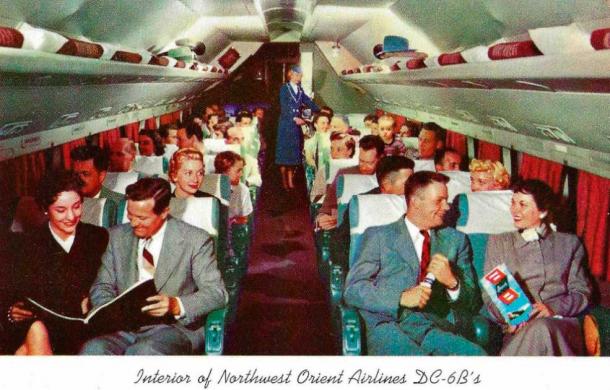
1957 postcard showing tourism airline interior (Joe Haupt / CC BY SA 2.0 )
Tourism Today: Roadside Attractions, Cruises, #VanLife, and more
Tourism in ancient times could be difficult, but those early tourists certainly made the most of it. Today, travel and tourism are certainly much simpler than they were back then. There is more available information about different countries that can be considered before taking a trip, and most frequent travelers are looking for more than just new scenery. Tourism agencies now seek to put together packages for those looking for adventure, romance, or knowledge.
The biggest difference between ancient and modern tourism is purpose. While ancient people traveled as a way to learn about the world around them, modern tourists seek to gather and savor experiences. Experiencing new places and cultures is more fulfilling than simply learning about the place online. If nothing else, travel nowadays is certainly much more efficient and luxurious than ever before. After all, aren’t you glad you don’t have to take a chariot everywhere?
Top image: Vintage postcard showing European tourism destinations. Source: Freesurf /Adobe Stock
By Lex Leigh
A Historical View of Tourism . Study.com. (n.d.). Available at: https://study.com/academy/lesson/a-historical-view-of-tourism.html
Gyr, U. (December 13, 2010). The History of Tourism: Structures on the Path to Modernity . EGO. Available at: http://ieg-ego.eu/en/threads/europe-on-the-road/the-history-of-tourism/ueli-gyr-the-history-of-tourism
Rodriguez, C. P. (June 16, 2020). Travelling for Pleasure: A Brief History of Tourism . Europeana. Available at: https://www.europeana.eu/en/blog/travelling-for-pleasure-a-brief-history-of-tourism
Stainton, H. (May 27, 2022). The Fascinating History of Tourism . Tourism Teacher. Available at: https://tourismteacher.com/history-of-tourism-2/
Tourism . (n.d.) Encyclopedia Britannica. Available at: https://www.britannica.com/topic/tourism

Lex Leigh is a former educator with several years of writing experience under her belt. She earned her BS in Microbiology with a minor in Psychology. Soon after this, she earned her MS in Education and worked as a secondary... Read More
Related Articles on Ancient-Origins
- Search Menu
- Sign in through your institution
- Advance articles
- Author Guidelines
- Open Access
- Why Publish with PQ?
- About The Philosophical Quarterly
- About the Scots Philosophical Association
- About the University of St. Andrews
- Editorial Board
- Advertising and Corporate Services
- Journals Career Network
- Self-Archiving Policy
- Dispatch Dates
- Journals on Oxford Academic
- Books on Oxford Academic

Article Contents
- < Previous
The Meaning of Travel
- Article contents
- Figures & tables
- Supplementary Data
Pilar Lopez-Cantero, The Meaning of Travel, The Philosophical Quarterly , Volume 71, Issue 3, July 2021, Pages 655–658, https://doi.org/10.1093/pq/pqaa065
- Permissions Icon Permissions
A philosopher's inquiry on travel may take different paths. Emily Thomas follows several in The Meaning of Travel , where she uncovers novel philosophical debates such as the ontology of maps or the ethics of ‘doom tourism’. Perhaps unexpectedly for the reader, Thomas also offers accessible and engaging discussions on—mostly Early—Modern philosophy by connecting travel-related topics to the work of some well-known authors (René Descartes and Francis Bacon), some unjustly neglected ones (Margaret Cavendish) and some known mostly to specialists (Henry More). The result of this bric-a-brac approach is mostly positive: Thomas's work stands out as an entertaining, insightful read, suitable for a wide readership, whilst also having the potential to be a foundational text in the philosophy of travel. And I agree with Thomas: philosophy of travel ‘isn’t a thing, but it should be’ (p. 3).
The book has twelve short, self-standing chapters that I divide here into two categories: chapters concerning the philosophy of travel and chapters attending to other philosophical themes that Thomas then connects with travel. Let us start with the first category. Chapter 1 convincingly states the case for the philosophical investigation of travel, and introduces the idea of travelling as the discovery of the unfamiliar, the exploration of ‘otherness’ (p. 3). In Chapter 2, on maps and cartography, Thomas impeccably combines a one-page, layperson-oriented definition of ontology with the launch of an intriguing question of concern to metaphysicians: Are maps things or processes? She believes they are the latter (p. 24), a point that is illustrated by the fact that we currently rely mostly on online maps—which, arguably, cannot be static things given their constant updating. This is an excellent chapter.
The following travel-focused discussion takes place in Chapter 5, on the origins of tourism. Tourism, says Thomas, was born when people started to travel by choice and for pleasure (p. 69). More recently, we travel to open up to the world by facing our fears (p. 84), to be able to brag to our friends (ibid.), and for ‘interior voyages’ of self-discovery (p. 85). This chapter contains a lot of historical trivia about the Grand Tour (the European adventure for young, wealthy British men in the eighteenth and nineteenth centuries). It is both interesting and amusing, particularly the birth of the continental trope of debauchery-prone Brits abroad (pp. 78–9), which still pervades in some parts of Europe (the examples of Magaluf or Amsterdam come to mind, although the parallel with the present seems to have escaped Thomas).
Chapter 10 reveals the other side of the Grand Tour's story by launching the question of whether travel is a male concept. Whereas men were encouraged to embark in leisure travelling from its origin, women had to disguise themselves as men or use travel as a pretext for ‘ladylike pursuits’ such as painting (pp. 170–1). Again, the chapter is mostly historical, although Thomas also offers an explanation of the concept of gender for non-philosophers and highlights that in many cultures maleness is connected to adventure and exploration, while femaleness is usually tied to ‘home’ (p. 175).
Finally, Chapter 11 explores the ethics of ‘doom tourism’, that is, travelling to places that are bound to disappear due to climate challenges. Thomas reveals a moral dilemma: while mass tourism may destroy these places faster, it may be that their precarious situation can only become known via the mouths of travellers (or ‘tourist ambassadors’, p. 183). This raises the question of what exactly it means to travel responsibly. Then, Chapter 12 delves on space tourism to reflect on the fact that travelling changes people, and specifically changes how they feel about their home places (pp. 190–1).
In the second group of chapters, Thomas connects travel to the work of several philosophers from the seventeenth to the nineteenth century. This is the time of the explorers and the birth of tourism, which shape the structure of the book, and Thomas's works showcase how the work of philosophers reached beyond the armchair in the shape of Bacon's philosophy of science (Chapter 3), Locke's metaethics (Chapter 4), or More's philosophy of space (Chapter 7). Cavendish's account of matter in her fantasy short story Blazing World , which Thomas considers both a travel book and a thought experiment, receives long-deserved limelight in Chapter 6. There is also a place for discussing the sublime as an aesthetic concept (Chapter 8) and Thoreau influence on environmental thought (Chapter 9).
It is no minor feat to make the history of philosophy interesting for the non-specialist while trying to explain complex philosophical concepts in plain words. There aren’t either many philosophy books where one lifts one's head from the book to tell whomever is in the room yet another interesting anecdote (and does so often). However, the connection between travel and these authors (and, in turn, with chunks of the author's own travel diary) is not always done as seamlessly at it could be. These links often require stretches of thought, which Thomas, I believe, is too quick to endorse (More's influence on our view on mountains and Thoreau's link to the popularity of ‘cabin porn’ are two examples of this tendency).
I believe that the main strength of The Meaning of Travel is the chapters on the philosophy of travel, to the point of deserving a foundational status in the branch. Thomas launches more questions than she answers, but we must remember that this is not a book ‘for academic eyes only’. The type of answers a certain kind of philosopher may demand would have resulted in a completely different work—one with a way narrower reach. This book's academic value lies in the formulation of travel-focused questions on ontology (maps), ethics (responsible tourism), and political and social philosophy (personal change, gender), which by themselves deserve a philosophical branch of their own.
These questions that Thomas puts forward are not only of interest to people shielding in philosophy departments, but have a direct link to current affairs. I am referring specifically to the distinction between traveller and tourist, and to the notion of responsible travel (or responsible tourism, since these questions are related but independent of each other). Several local authorities (like those of Amsterdam, Barcelona, or Venice) have long raised the alarm regarding the effect mass tourism has on their homes. This is directly related to Thomas's doom tourism (in fact, Venice is in the list of disappearing destinations she reproduces in p. 181), but is put in slightly different terms by leaders in these mass destinations. Whereas travelling to environmentally challenged locations may be put in terms of responsibility, as Thomas does, the mayors of Amsterdam or Barcelona have been calling for quality tourism. But what is quality tourism? Is this a matter of the experiences travellers are seeking, of being more like those who embark on an interior voyage than the party-prone Grand Tourists? Thomas's book is definitely the place to begin with to answer this question, which I think will benefit from the input of political philosophers. After all, the lowering of the ‘quality’ of tourism seems to have followed the lowering of the cost of travelling, and hence opens a sub-debate on fairness and travelling as a human capability—this is an example of how Thomas's work opens a number of new, fascinating questions, which will shape the discipline of philosophy of travel in the coming years. (A side note here: at the time of publication of this review, the global health crisis has decimated international travel, but I believe that does not do away with these issues; if anything, it offers some space to have these debates.)
Email alerts
Citing articles via.
- Contact the University of St. Andrews
- Contact the Scots Philosophical Association
- Recommend to your Library
Affiliations
- Online ISSN 1467-9213
- Print ISSN 0031-8094
- Copyright © 2024 Scots Philosophical Association and the University of St. Andrews
- About Oxford Academic
- Publish journals with us
- University press partners
- What we publish
- New features
- Open access
- Institutional account management
- Rights and permissions
- Get help with access
- Accessibility
- Advertising
- Media enquiries
- Oxford University Press
- Oxford Languages
- University of Oxford
Oxford University Press is a department of the University of Oxford. It furthers the University's objective of excellence in research, scholarship, and education by publishing worldwide
- Copyright © 2024 Oxford University Press
- Cookie settings
- Cookie policy
- Privacy policy
- Legal notice
This Feature Is Available To Subscribers Only
Sign In or Create an Account
This PDF is available to Subscribers Only
For full access to this pdf, sign in to an existing account, or purchase an annual subscription.
Matador Original Series
A history of why people travel.
Ever notice how when you sit still for a few hours without moving, you suddenly get up and find your legs are cramped, or asleep, or feel tense?
That’s because they’re not meant to be still…at least not for long. We’re meant to move. Our limbs have to be in motion almost constantly.
Humans have always been on the move. Our skeletons and muscle structures have evolved to facilitate gathering our food, escaping from predators, and to satisfy our animal curiosity.
As our brains grew larger, so did our inquisitiveness, and driven by different reasons, humans began to travel.
The Early Explorers
In the Neolithic age we saw the first sailing vessels and the invention of the wheel, both designed to move us around in different ways.
Nomadic hunters and gatherers moved in search of food following seasonally available wild plants and game.
Then Ancient man began to build roads to facilitate the movement of troops through empires, and eventually civilians began to travel in caravans. Travel for the purpose of commerce and trade took explorers to strange lands to meet other people, and bring back riches of unfathomable value.
Wealthy Greeks and Romans began to travel for leisure to their summer homes and villas by the sea in cities like Pompeii and Baiae.
The freedom of travel in the Roman Empire brought many Jews to flourishing cities of the ancient world, and Jesus himself is thought to have traveled a great deal with his disciples.
We know that Vikings had a particular skill for sailing and a keen interest in exploring. Through perilous voyages they conquered areas such as Iceland and Greenland, and were even the first to accidentally discover America in 985 A.D, when a ship was blown off course on the way to Greenland.
In 1001, Leif Eriksson sailed back to explore it further and called it Vinland, or ‘land of pastures’.
Enter the Dark Ages
In Medieval times, the most notorious travelers were pilgrims and missionaries. Driven by their religious convictions, pilgrims made dangerous journeys to places like Santiago de Compostela, Canterbury, and Jerusalem while missionaries traveled to heathen areas to evangelize the people, such as the Celts in Ireland.
In the late 16th century it became fashionable for young aristocrats and wealthy upper class men to travel to important European cities as a crowning touch to their education in the arts and literature, designed to enlighten Europe’s young elite.
This was knows as the Grand Tour . London, Paris, Venice, Florence and Rome were visited by these grand tourists to expose themselves to the great masterpieces.
The French revolution marked the end of the Grand Tour as was known, and with the coming of rail transit in the early 19th century, travel was revolutionized.
Travel was no longer limited only to the privileged as it became cheaper, easier, and safer to travel. Young ladies began to travel too, chaperoned by an old spinster as was appropriate, as part of their education.
Steam and Steel
The Industrial Revolution brought leisure travel to Europe.
The new middle class, comprised of factory owners and managers, now had the time to travel thanks to industrialized production with efficient and faster machinery. They had more money and more time to relax and take part in recreational activities.
For the first time ever, traveling was done for the sole pleasure of it.
This was how Thomas Cook , in 1841, put together the first package holiday in history. He started off with tours in Britain but with his rapid success soon moved unto other European cities, where Paris and the Alps were the most popular destinations.
Thomas Cook pioneered all the common services that travel agencies undertake for the passenger today: accommodation, travel tickets, timetables, attractions, currency exchanges, travel guides and tours.
Air travel began after World War II, when a surplus of aeronautical technology and ex-military pilots who were more than ready to fly. Only the rich could afford holidays with air fare, whereby an all-inclusive two week holiday in Corsica cost around £32 in those days.
The Modern Age
Affordable air travel soon contributed to international mass tourism, pretty much as we know it today.
Over the years different developments in tourism have changed the way we travel, such as technology, safety and security, costs, social changes, etc.
The Grand Tourists of the 17th and 18th centuries echo today of the hoards of backpackers and gap-year students who, not content with traveling through one continent, do so throughout the entire world.
Much like the young European aristocrats of the time, we today also consider traveling as a rite of passage, an initiation, a transition, an opportunity for soul searching.
With tourism currents like Eco-travel, Ethical Travel, Volunteering, Mystical tourism, Dark Tourism, Pop-Culture tourism, Cosmetic Surgery tourism, and Independent traveling, the travel industry has reached an apogee never before seen.
So when we wonder why we travel, and where it all started, it might be comforting to think about our predecessors, and how they moved first out of necessity, then for religion, migration, emigration, commerce, enlightenment and finally for pleasure.
Today each of our personal reasons may vary, but one thing is certain: there will never be rest for a species that can only move, move and keep moving.
Trending Now
The most epic treehouses you can actually rent on airbnb, 21 of the coolest airbnbs near disney world, orlando, stay at these 13 haunted airbnbs for a truly terrifying halloween night, the top luxury forest getaways in the us, 13 la condesa airbnbs to settle into mexico city’s coolest neighborhood, discover matador, adventure travel, train travel, national parks, beaches and islands, ski and snow.
We use cookies for analytics tracking and advertising from our partners.
For more information read our privacy policy .
Matador's Newsletter
Subscribe for exclusive city guides, travel videos, trip giveaways and more!
You've been signed up!
Follow us on social media.

Want to create or adapt books like this? Learn more about how Pressbooks supports open publishing practices.
Chapter 1. History and Overview
Learning Objectives
- Specify the commonly understood definitions of tourism and tourist
- Classify tourism into distinct industry groups using North American Industry Classification Standards (NAICS)
- Define hospitality
- Gain knowledge about the origins of the tourism industry
- Provide an overview of the economic, social, and environmental impacts of tourism worldwide
- Understand the history of tourism development in Canada and British Columbia
- Analyze the value of tourism in Canada and British Columbia
- Identify key industry associations and understand their mandates
What Is Tourism?
Before engaging in a study of tourism , let’s have a closer look at what this term means.
Definition of Tourism
There are a number of ways tourism can be defined, and for this reason, the United Nations World Tourism Organization (UNWTO) embarked on a project from 2005 to 2007 to create a common glossary of terms for tourism. It defines tourism as follows:
Tourism is a social, cultural and economic phenomenon which entails the movement of people to countries or places outside their usual environment for personal or business/professional purposes. These people are called visitors (which may be either tourists or excursionists; residents or non-residents) and tourism has to do with their activities, some of which imply tourism expenditure ( United Nations World Tourism Organization , 2008).
Using this definition, we can see that tourism is the movement of people for a number of purposes (whether business or pleasure).
Definition of Tourist
Building on the definition of tourism, a commonly accepted description of a tourist is “someone who travels at least 80 km from his or her home for at least 24 hours, for business or leisure or other reasons” (LinkBC, 2008, p.8). The United Nations World Tourism Organization (1995) helps us break down this definition further by stating tourists can be:
- Domestic (residents of a given country travelling only within that country)
- Inbound (non-residents travelling in a given country)
- Outbound (residents of one country travelling in another country)
The scope of tourism, therefore, is broad and encompasses a number of activities.
Spotlight On: United Nations World Tourism Organization (UNWTO)
UNWTO is the United Nations agency responsible “for the promotion of responsible, sustainable and universally accessible tourism” (UNWTO, 2014b). Its membership includes 156 countries and over 400 affiliates such as private companies and non-governmental organizations. It promotes tourism as a way of developing communities while encouraging ethical behaviour to mitigate negative impacts. For more information, visit the UNWTO website : http://www2.unwto.org/.
NAICS: The North American Industry Classification System
Given the sheer size of the tourism industry, it can be helpful to break it down into broad industry groups using a common classification system. The North American Industry Classification System (NAICS) was jointly created by the Canadian, US, and Mexican governments to ensure common analysis across all three countries (British Columbia Ministry of Jobs, Tourism and Skills Training, 2013a). The tourism-related groupings created using NAICS are (in alphabetical order):
- Accommodation
- Food and beverage services (commonly known as “F & B”)
- Recreation and entertainment
- Transportation
- Travel services
These industry groups are based on the similarity of the “labour processes and inputs” used for each (Government of Canada, 2013). For instance, the types of employees and resources required to run an accommodation business — whether it be a hotel, motel, or even a campground — are quite similar. All these businesses need staff to check in guests, provide housekeeping, employ maintenance workers, and provide a place for people to sleep. As such, they can be grouped together under the heading of accommodation. The same is true of the other four groupings, and the rest of this text explores these industry groups, and other aspects of tourism, in more detail.
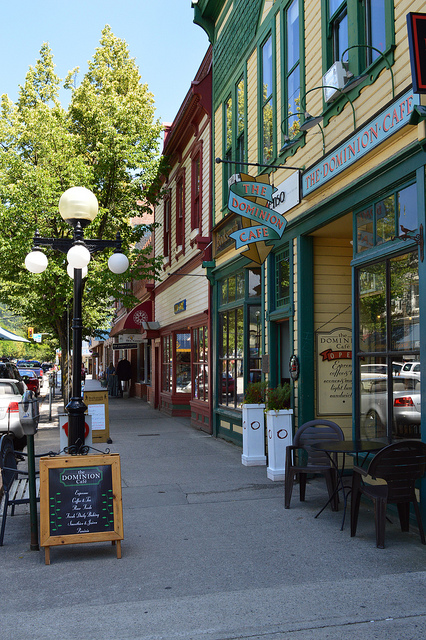
The Hospitality Industry
When looking at tourism it’s important to consider the term hospitality . Some define hospitality as “t he business of helping people to feel welcome and relaxed and to enjoy themselves” (Discover Hospitality, 2015, ¶ 3). Simply put, the hospitality industry is the combination of the accommodation and food and beverage groupings, collectively making up the largest segment of the industry. You’ll learn more about accommodations and F & B in Chapter 3 and Chapter 4, respectively.
Before we seek to understand the five industry groupings in more detail, it’s important to have an overview of the history and impacts of tourism to date.
Global Overview
Origins of tourism.
Travel for leisure purposes has evolved from an experience reserved for very few people into something enjoyed by many. Historically, the ability to travel was reserved for royalty and the upper classes. From ancient Roman times through to the 17th century, young men of high standing were encouraged to travel through Europe on a “grand tour” (Chaney, 2000). Through the Middle Ages, many societies encouraged the practice of religious pilgrimage, as reflected in Chaucer’s Canterbury Tales and other literature.
The word hospitality predates the use of the word tourism , and first appeared in the 14th century. It is derived from the Latin hospes , which encompasses the words guest, host , and foreigner (Latdict, 2014). The word tourist appeared in print much later, in 1772 (Griffiths and Griffiths, 1772). William Theobald suggests that the word tour comes from Greek and Latin words for circle and turn, and that tourism and tourist represent the activities of circling away from home, and then returning (Theobald, 1998).
Tourism Becomes Business
Cox & Kings, the first known travel agency, was founded in 1758 when Richard Cox became official travel agent of the British Royal Armed Forces (Cox & Kings, 2014). Almost 100 years later, in June 1841, Thomas Cook opened the first leisure travel agency, designed to help Britons improve their lives by seeing the world and participating in the temperance movement. In 1845, he ran his first commercial packaged tour, complete with cost-effective railway tickets and a printed guide (Thomas Cook, 2014).
The continued popularity of rail travel and the emergence of the automobile presented additional milestones in the development of tourism. In fact, a long journey taken by Karl Benz’s wife in 1886 served to kick off interest in auto travel and helped to publicize his budding car company, which would one day become Mercedes Benz (Auer, 2006). We take a closer look at the importance of car travel later this chapter, and of transportation to the tourism industry in Chapter 2.
Fast forward to 1952 with the first commercial air flights from London, England, to Johannesburg, South Africa, and Colombo, Sri Lanka (Flightglobal, 2002) and the dawn of the jet age, which many herald as the start of the modern tourism industry. The 1950s also saw the creation of Club Méditérannée (Gyr, 2010) and similar club holiday destinations, the precursor of today’s all-inclusive resorts.
The decade that followed is considered to have been a significant period in tourism development, as more travel companies came onto the scene, increasing competition for customers and moving toward “mass tourism, introducing new destinations and modes of holidaying” (Gyr, 2010, p. 32).
Industry growth has been interrupted at several key points in history, including World War I, the Great Depression, and World War II. At the start of this century, global events thrust international travel into decline including the September 11, 2001, attack on the World Trade Center in New York City (known as 9/11), the war in Iraq, perceived threat of future terrorist attacks, and health scares including SARS, BSE (bovine spongiform encephalopathy), and West Nile virus (Government of Canada, 2006).
At the same time, the industry began a massive technological shift as increased internet use revolutionized travel services. Through the 2000s, online travel bookings grew exponentially, and by 2014 global leader Expedia had expanded to include brands such as Hotels.com, the Hotwire Group, trivago, and Expedia CruiseShip Centers, earning revenues of over $4.7 million (Expedia Inc., 2013).
A more in-depth exploration of the impact of the online marketplace, and other trends in global tourism, is provided in Chapter 14. But as you can already see, the impacts of the global tourism industry today are impressive and far reaching. Let’s have a closer look at some of these outcomes.
Tourism Impacts
Tourism impacts can be grouped into three main categories: economic, social, and environmental. These impacts are analyzed using data gathered by businesses, governments, and industry organizations.
Economic Impacts
According to a UNWTO report, in 2011, “international tourism receipts exceeded US$1 trillion for the first time” (UNWTO, 2012). UNWTO Secretary-General Taleb Rifai stated this excess of $1 trillion was especially important news given the global economic crisis of 2008, as tourism could help rebuild still-struggling economies, because it is a key export and labour intensive (UNWTO, 2012).
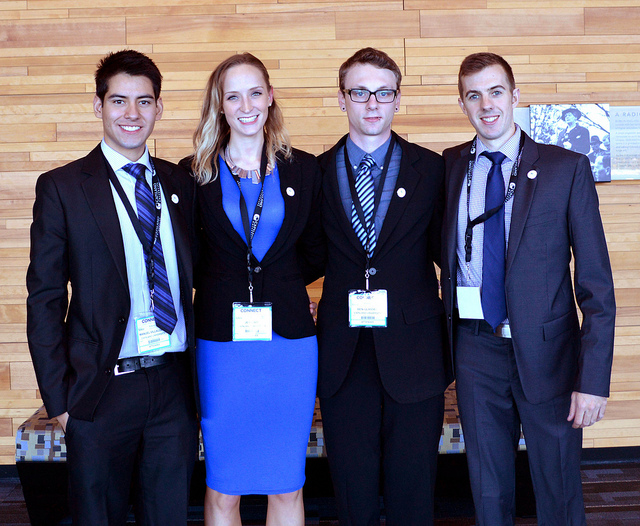
Tourism around the world is now worth over $1 trillion annually, and it’s a growing industry almost everywhere. Regions with the highest growth in terms of tourism dollars earned are the Americas, Europe, Asia and the Pacific, and Africa. Only the Middle East posted negative growth at the time of the report (UNWTO, 2012).
While North and South America are growing the fastest, Europe continues to lead the way in terms of overall percentage of dollars earned (UNWTO, 2012):
- Europe (45%)
- Asia and the Pacific (28%)
- North and South America (19%)
- Middle East (4%)
Global industry growth and high receipts are expected to continue. In its August 2014 expenditure barometer, the UNWTO found worldwide visitation had increased by 22 million people in the first half of the year over the previous year, to reach 517 million visits (UNWTO, 2014a). As well, the UNWTO’s Tourism 2020 Vision predicts that international arrivals will reach nearly 1.6 billion by 2020 . Read more about the Tourism 2020 Vision : http://www.e-unwto.org/doi/abs/10.18111/9789284403394
Social Impacts
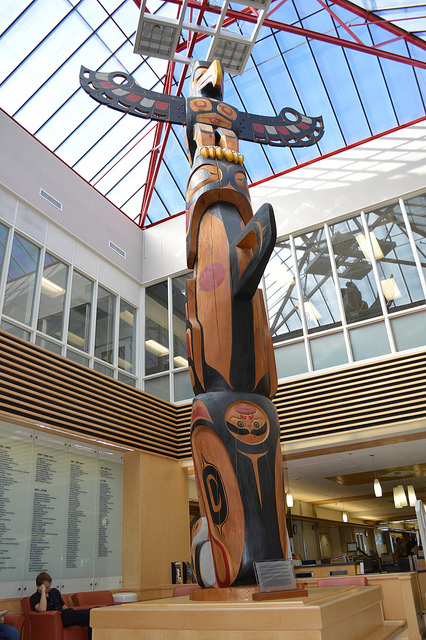
In addition to the economic benefits of tourism development, positive social impacts include an increase in amenities (e.g., parks, recreation facilities), investment in arts and culture, celebration of First Nations people, and community pride. When developed conscientiously, tourism can, and does, contribute to a positive quality of life for residents.
However, as identified by the United Nations Environment Programme (UNEP, 2003a), negative social impacts of tourism can include:
- Change or loss of indigenous identity and values
- Culture clashes
- Physical causes of social stress (increased demand for resources)
- Ethical issues (such as an increase in sex tourism or the exploitation of child workers)
Some of these issues are explored in further detail in Chapter 12, which examines the development of Aboriginal tourism in British Columbia.
Environmental Impacts
Tourism relies on, and greatly impacts, the natural environment in which it operates. Even though many areas of the world are conserved in the form of parks and protected areas, tourism development can have severe negative impacts. According to UNEP (2003b), these can include:
- Depletion of natural resources (water, forests, etc.)
- Pollution (air pollution, noise, sewage, waste and littering)
- Physical impacts (construction activities, marina development, trampling, loss of biodiversity)
The environmental impacts of tourism can reach outside local areas and have an effect on the global ecosystem. One example is increased air travel, which is a major contributor to climate change. Chapter 10 looks at the environmental impacts of tourism in more detail.
Whether positive or negative, tourism is a force for change around the world, and the industry is transforming at a staggering rate. But before we delve deeper into our understanding of tourism, let’s take a look at the development of the sector in our own backyard.
Canada Overview
Origins of tourism in canada.
Tourism has long been a source of economic development for our country. Some argue that as early as 1534 the explorers of the day, such as Jacques Cartier, were Canada’s first tourists (Dawson, 2004), but most agree the major developments in Canada’s tourism industry followed milestones in the transportation sector: by rail, by car, and eventually, in the skies.
Railway Travel: The Ties That Bind

The dawn of the railway age in Canada came midway through the 19th century. The first railway was launched in 1836 (Library and Archives Canada, n.d.), and by the onset of World War I in 1914, four railways dominated the Canadian landscape: Canadian Pacific Railway (CPR), Canadian Northern Railway (CNOR), the Grand Trunk Railway (GTR), and the Grand Trunk Pacific (GTP). Unfortunately, their rapid expansion soon brought the last three into near bankruptcy (Library and Archives Canada, n.d.).
In 1923, these three rail companies were amalgamated into the Canadian National Railway (CNR), and together with the CPR, these trans-continentals dominated the Canadian travel landscape until other forms of transportation became more popular. In 1978, with declining interest in rail travel, the CPR and CNR were forced to combine their passenger services to form VIA Rail (Library and Archives Canada, n.d.).
The Rise of the Automobile
The rising popularity of car travel was partially to blame for the decline in rail travel, although it took time to develop. When the first cross-country road trip took place in 1912, there were only 16 kilometres of paved road across Canada (MacEachern, 2012). Cars were initially considered a nuisance, and the National Parks Branch banned entry to automobiles, but later slowly began to embrace them. By the 1930s, some parks, such as Cape Breton Highlands National Park, were actually created to provide visitors with scenic drives (MacEachern, 2012).
It would take decades before a coast-to-coast highway was created, with the Trans-Canada Highway officially opening in Revelstoke in 1962. When it was fully completed in 1970, it was the longest national highway in the world, spanning one-fifth of the globe (MacEachern, 2012).
Early Tourism Promotion
As early as 1892, enterprising Canadians like the Brewsters became the country’s first tour operators, leading guests through areas such as Banff National Park (Brewster Travel Canada, 2014). Communities across Canada developed their own marketing strategies as transportation development took hold. For instance, the town of Maisonneuve in Quebec launched a campaign from 1907 to 1915 calling itself “Le Pittsburg du Canada.” And by 1935 Quebec was spending $250,000 promoting tourism, with Ontario, New Brunswick, and Nova Scotia also enjoying established provincial tourism bureaus (Dawson, 2004).
National Airlines
Our national airline, Air Canada, was formed in 1937 as Trans-Canada Air Lines. In many ways, Air Canada was a world leader in passenger aviation, introducing the world’s first computerized reservations system in 1963 ( Globe and Mail , 2014). Through the 1950s and 1960s, reduced airfares saw increased mass travel. Competitors including Canadian Pacific (which became Canadian Airlines in 1987) began to launch international flights during this time to Australia, Japan, and South America ( Canadian Geographic, 2000). By 2000, Air Canada was facing financial peril and forced to restructure. A numbered company, owned in part by Air Canada, purchased 82% of Canadian Airline’s shares, with the result of Air Canada becoming the country’s only national airline ( Canadian Geographic, 2000).
Parks and Protected Areas
A look at the evolution of tourism in Canada would be incomplete without a quick study of our national parks and protected areas. The official conserving of our natural spaces began around the same time as the railway boom, and in 1885 Banff was established as Canada’s first national park. By 1911, the Dominion Forest Reserves and Parks Act created the Dominion Parks Branch, the first of its kind in the world (Shoalts, 2011).
The systemic conservation and celebration of Canada’s parks over the next century would help shape Canada’s identity, both at home and abroad. Through the 1930s, conservation officers and interpreters were hired to enhance visitor experiences. By 1970, the National Park System Plan divided Canada into 39 regions, with the goal of preserving each distinct ecosystem for future generations. In 1987, the country’s first national marine park was established in Ontario, and in the 20 years that followed, 10 new national parks and marine conservation areas were created (Shoalts, 2011).
The role of parks and protected areas in tourism is explored in greater detail in Chapter 5 (recreation) and Chapter 10 (environmental stewardship).
Global Shock and Industry Decline
As with the global industry, Canada’s tourism industry was impacted by world events such as the Great Depression and the World Wars.
More recently, global events such as 9/11, the SARS outbreak, and the war in Iraq took their toll on tourism receipts. Worldwide arrivals to Canada dropped 1% to 694 million in 2003, after three years of stagnant growth. In 2005, spending reached $61.4 billion with domestic travel accounting for 71% (Government of Canada, 2006).
Tourism in Canada Today
In 2011, tourism created $78.8 billion in total economic activity and 603,400 jobs. Tourism accounted for more of Canada’s gross domestic product (GDP) than agriculture, forestry, and fisheries combined (Tourism Industry Association of Canada, 2014).
Spotlight On: The Tourism Industry Association of Canada (TIAC)
Founded in 1930 and based in Ottawa, the Tourism Industry Association of Canada (TIAC) is the national private-sector advocate for the industry. Its goal is to support policies and programs that help the industry grow, while representing over 400 members including airports, concert halls, festivals and events, travel services providers, and businesses of all sizes. For more information, visit the Tourism Industry Association of Canada’s website : http://tiac.travel/About.html
Unfortunately, while overall receipts from tourism appear healthy, and globally the industry is growing, according to a recent report, Canada’s historic reliance on the US market (which traditionally accounts for 75% of our market) is troubling. Because three out of every four international visitors to Canada originates in the United States, the 55% decline in that market since 2000 is being very strongly felt here. Many feel the decline in American visitors to Canada can be attributed to tighter passport and border regulations, the economic downturn (including the 2008 global economic crisis), and a stronger Canadian dollar (TIAC, 2014).
Despite disappointing numbers from the United States, Canada continues to see strong visitation from the United Kingdom, France, Germany, Australia, and China. In 2011, we welcomed 3,180,262 tourists from our top 15 inbound countries (excluding the United States). Canadians travelling domestically accounted for 80% of tourism revenues in the country, and TIAC suggested that a focus on rebounding US visitation would help grow the industry (TIAC, 2014).
Spotlight On: The Canadian Tourism Commission
Housed in Vancouver, Destination Canada , previously the Canadian Tourism Commission (CTC), is responsible for promoting Canada in several foreign markets: Australia, Brazil, China, France, Germany, India, Japan, Mexico, South Korea, the United Kingdom, and the United States. It works with private companies, travel services providers, meeting professionals, and government organizations to help leverage Canada’s tourism brand, Canada. Keep Exploring . It also conducts research and has a significant image library (Canadian Tourism Commission, 2014). For more information, visit Destination Canada website : http://en.destinationcanada.com/about-ctc.
As organizations like TIAC work to confront barriers to travel, the Canadian Tourism Commission (CTC) is active abroad, encouraging more visitors to explore our country. In Chapter 8, we’ll delve more into the challenges and triumphs of selling tourism at home and abroad.
The great news for British Columbia is that once in Canada, most international visitors tend to remain in the province they landed in, and BC is one of three provinces that receives the bulk of this traffic (TIAC, 2012). In fact, BC’s tourism industry is one of the healthiest in Canada today. Let’s have a look at how our provincial industry was established and where it stands now.
British Columbia Overview
Origins of tourism in bc.
As with the history of tourism in Canada, it’s often stated that the first tourists to BC were explorers. In 1778, Captain James Cook touched down on Vancouver Island, followed by James Douglas in 1842, a British agent who had been sent to find new headquarters for the Hudson’s Bay Company, ultimately choosing Victoria. Through the 1860s, BC’s gold rush attracted prospectors from around the world, with towns and economies springing up along the trail (PricewaterhouseCoopers, 2009).
Railway Travel: Full Steam Ahead!
The development of BC’s tourism industry began in earnest in the late 1800s when the CPR built accommodation properties along itsnewly completed trans-Canada route, capturing revenues from overnight stays to help alleviate their increasing corporate debt. Following the 1886 construction of small lodges at stops in Field, Rogers Pass, and Fraser Canyon, the CPR opened the Hotel Vancouver in May 1887 (Dawson, 2004).
As opposed to Atlantic Canada, where tourism promotion centred around attracting hunters and fishermen for a temporary infusion of cash, in British Columbia tourism was seen as a way to lure farmers and settlers to stay in the new province. Industry associations began to form quickly: the Tourist Association of Victoria (TAV) in February 1902, and the Vancouver Tourist Association in June of the same year (Dawson, 2004).
Many of the campaigns struck by these and other organizations between 1890 and 1930 centred on the province’s natural assets, as people sought to escape modern convenience and enjoy the environment. A collaborative group called the Pacific Northwest Travel Association (BC, Washington, and Oregon) promoted “The Pacific Northwest: The World’s Greatest Out of Doors,” calling BC “The Switzerland of North America.” Promotions like these seemed to have had an effect: in 1928, over 370,000 tourists visited Victoria, spending over $3.5 million (Dawson, 2004).
The Great Depression and World War II
As the world’s economy was sent into peril during the Great Depression in the 1930s, tourism was seen as an economic solution. A newly renamed Greater Victoria Publicity Bureau touted a “100 for 1” multiplier effect of tourism spending, with visitor revenues accounting for around 13.5% of BC’s income in 1930. By 1935, an organization known as the TTDA (Tourist Trade Development Association of Victoria and Vancouver Island) looked to create a more stable industry through strategies to increase visitors’ length of stay (Dawson, 2004).
In 1937, the provincial Bureau of Industrial and Tourist Development (BITD) was formed through special legislation with a goal of increasing tourist traffic. By 1938, the organization changed its name to the British Columbia Government Travel Bureau (BCGTB) and was granted a budget increase to $105,000. This was soon followed by an expansion of the BC Tourist Council designed to solicit input from across the province. And in 1939, Vancouver welcomed the King and Queen of England and celebrated the opening of the Lions Gate Bridge, activities that reportedly bolstered tourism numbers (Dawson, 2004).
The December 1941 Japanese attack on Pearl Harbor in Hawaii had negative repercussions for tourism on the Pacific Rim and was responsible for an era of decreased visitation to British Columbia, despite attempts by some to market the region as exciting. From 1939 to 1943, US visits to Vancouver (measured at the border) dropped from over 307,000 to approximately 183,600. Just two years later, however, that number jumped to 369,250, the result of campaigns like the 1943 initiative aimed at Americans that marketed BC as “comrades in war” (Dawson, 2004).
Post-War Rebound
We, with all due modesty, cannot help but claim that we are entering British Columbia’s half-century, and cannot help but observe that B.C. also stands for BOOM COUNTRY. – Phil Gagliardi, BC Minister of Highways, 1955 (Dawson, 2004, p.190)
A burst of post-war spending began in 1946, and although short-lived, was supported by steady government investment in marketing throughout the 1950s. As tourism grew in BC, however, so did competition for US dollars from Mexico, the Caribbean, and Europe. The decade that followed saw an emphasis on promoting BC’s history, its “Britishness,” and a commodification of Aboriginal culture. The BCGTB began marketing efforts to extend the travel season, encouraging travel in September, prime fishing season. It also tried to push visitors to specific areas, including the Lower Fraser Valley, the Okanagan-Fraser Canyon Loop, and the Kamloops-Cariboo region (Dawson, 2004).
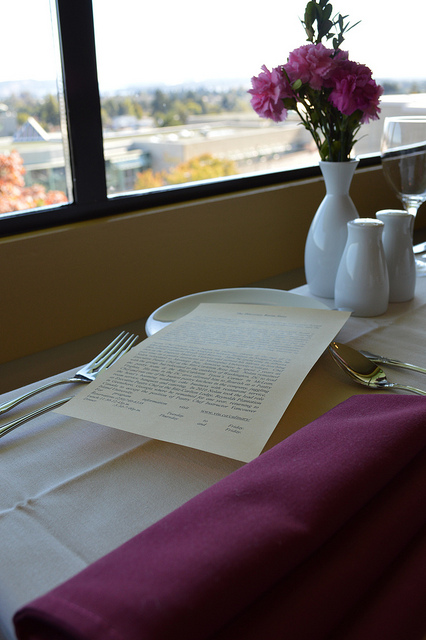
In 1954, Vancouver hosted the British Empire Games, investing in the construction of Empire Stadium. A few years later, an increased emphasis on events and convention business saw the Greater Vancouver Tourist Association change its name in 1962 to the Greater Vancouver Visitors and Convention Bureau (PricewaterhouseCoopers, 2009).
The ski industry was also on the rise: in 1961, the lodge and chairlift on Tod Mountain (now Sun Peaks) opened, and Whistler followed suit five years later (PricewaterhouseCoopers, 2009). Ski partners became pioneers of collaborative marketing in the province with the foundation of the Ski Marketing Advisory Committee (SMAC) supported by Tod Mountain and Big White, evolving into today’s Canada’s West Ski Area Association (Magnes, 2010). This pioneer spirit was evident across the ski sector: the entire sport of heliskiing was invented by Hans Gosmer of BC’s Canadian Mountain Holidays, and today the province holds 90% of the world’s heliskiing market share (McLeish, 2014).
The concept of collaboration extended throughout the province as innovative funding structures saw the cost of marketing programs shared between government and industry in BC. These programs were distributed through regional channels (originally eight regions in the province), and considered “the most constructive and forward looking plan of its kind in Canada” (Dawson 2004, p.194).
Tourism in BC continued to grow through the 1970s. In 1971, the Hotel Room Tax Act was introduced, allowing for a 5% tax to be collected on room nights with the funds collected to be put toward marketing and development. By 1978, construction had begun on Whistler Village, with Blackcomb Mountain opening two years later (PricewaterhouseCoopers, 2009). Funding programs in the late 1970s and early 1980s such as the Canada BC Tourism Agreement (CBCTA) and Travel Industry Development Subsidiary Agreement (TIDSA) allowed communities to invest in projects that would make them more attractive tourism destinations. In the mountain community of Kimberley, for instance, the following improvements were implemented through a $3.1 million forgivable loan: a new road to the ski resort, a covered tennis court, a mountain lodge, an alpine slide, and nine more holes for the golf course (e-Know, 2011).
Around the same time, the “Super, Natural British Columbia” brand was introduced, and a formal bid was approved for Vancouver to host a fair then known as Transpo 86 (later Expo 86). Tourism in the province was about to truly take off.
Expo 86 and Beyond
By the time the world fair Expo 86 came to a close in October 1986, it had played host to 20,111,578 guests. Infrastructure developments, including rapid rail, airport improvements, a new trade and convention centre at Canada Place (with a cruise ship terminal), and hotel construction, had positioned the city and the province for further growth (PricewaterhouseCooopers, 2009). The construction and opening of the Coquihalla Highway through to 1990 enhanced the travel experience and reduced travel times to vast sections of the province (Magnes, 2010).
Take a Closer Look: The Value of Tourism
Tourism Vancouver Island, with the support of many partners, has created a website that directly addresses the value of tourism in the region. The site looks at the economics of tourism, social benefits of tourism, and a “what’s your role?” feature that helps users understand where they fit in. Explore the Tourism Vancouver Island website : http://valueoftourism.ca/.
By 2000, Vancouver International Airport (YVR) was named number one in the world by the International Air Transport Association’s survey of international passengers. Five years later, the airport welcomed a record 16.4 million passengers (PricewaterhouseCoopers, 2009).
Going for Gold

In 2003, the International Olympic Committee named Vancouver/Whistler as the host city for the 2010 Olympic and Paralympic Winter Games. Infrastructure development followed, including the expansion of the Sea-to-Sky Highway, the creation of Vancouver Convention Centre West, and the construction of the Canada Line, a rapid transport line connecting the airport with the city’s downtown.
As BC prepared to host the Games, its international reputation continued to grow. Vancouver was voted “Best City in the Americas” by Condé Nast Traveller magazine three years in a row. Kelowna was named “Best Canadian Golf City” by Canada’s largest golf magazine, and BC was named the “Best Golf Destination in North America” by the International Association of Golf Tour Operators. Kamloops, known as Canada’s Tournament City, hosted over 100 sports tournaments that same year, and nearby Sun Peaks Resort was named the “Best Family Resort in North America” by the Great Skiing and Snowboarding Guide in 2008 (PricewaterhouseCoopers, 2009).
By the time the Vancouver 2010 Olympic and Paralympic Games took place, over 80 participating countries, 6,000 athletes, and 3 billion viewers put British Columbia on centre stage.
Spotlight On: Destination British Columbia
Destination BC is a Crown corporation founded in November 2012 by the Government of British Columbia. Its mandate includes marketing the province as a tourist destination (at home and around the world), promoting the development and growth of the industry, providing advice and recommendations to the tourism minister on related matters, and enhancing public awareness of tourism and its economic value to British Columbia (Province of British Columbia, 2013b).
Tourism in BC Today
Building on the momentum generated by hosting the 2010 Winter Olympic Games, tourism in BC remains big business. In 2012, the industry generated $13.5 billion in revenue.
The provincial industry is made up of over 18,000 businesses, the majority of which are SMEs (small to medium enterprises), and together they employ approximately 127,300 people (Tourism Industry Association of BC, 2014). It may surprise you to learn that in British Columbia, tourism provides more jobs than high tech, oil and gas, mining, and forestry (Porges, 2014).
Spotlight On: The Tourism Industry Association of BC
Founded in 1993 as the Council of Tourism Associations, today the Tourism Industry Association of BC (TIABC) is a not-for-profit trade association comprising members from private sector tourism businesses, industry associations, and destination marketing organizations (DMOs). Its goal is to ensure the best working environment for a competitive tourism industry. It hosts industry networking events and engages in advocacy efforts as “the voice of the BC tourism industry.” Students are encouraged to join TIABC to take advantage of their connections and receive a discount at numerous industry events. For more information, visit the Tourism Industry Association of BC’s website : http://www.tiabc.ca/student-membership
One of the challenges for BC’s tourism industry, it has long been argued, is fragmentation. Back in September 1933, an article in the Victoria Daily Times argued for more coordination across organizations in order to capitalize on what they saw as Canada’s “largest dividend payer” (Dawson, 2004). Today, more than 80 years later, you will often hear BC tourism professionals say the same thing.
On the other hand, some experts believe that the industry is simply a model of diversity, acknowledging that tourism is a compilation of a multitude of businesses, services, organizations, and communities. They see the ways in which these components are working together toward success, rather than focusing on friction between the groups.
Many communities are placing a renewed focus on educating the general public and other businesses about the value of tourism and the ways in which stakeholders work together. The following case study highlights this in more detail:
Take a Closer Look: Tourism Pays in Richmond, BC
The community of Richmond, BC, brings to life the far-reaching positive economic effects of tourism in action. Watch the short video called “Tourism Pays” to see what we mean!: http://vimeo.com/31624689
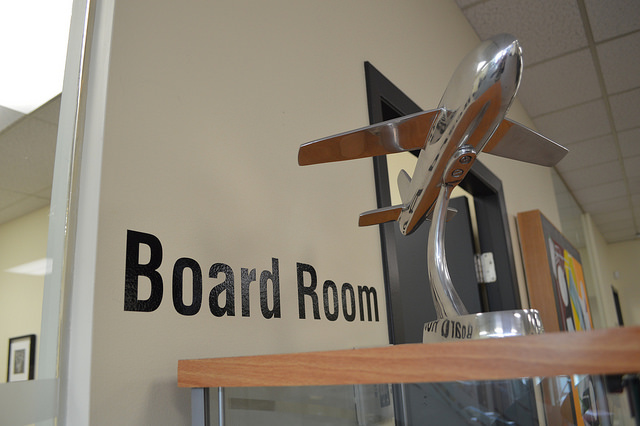
Throughout the rest of this textbook, you’ll have a chance to learn more about the history and current outlook for tourism in BC, with in-depth coverage of some of the triumphs and challenges we’ve faced as an industry. You will also learn about the Canadian and global contexts of the tourism industry’s development.
As we’ve seen in this chapter, tourism is a complex set of industries including accommodation, recreation and entertainment, food and beverage services, transportation, and travel services. It encompasses domestic, inbound, and outbound travel for business, leisure, or other purposes. And because of this large scope, tourism development requires participation from all walks of life, including private business, governmental agencies, educational institutions, communities, and citizens.
Recognizing the diverse nature of the industry and the significant contributions tourism makes toward economic and social value for British Columbians is important. There remains a great deal of work to better educate members of the tourism industry, other sectors, and the public about the ways tourism contributes to our province.
Given this opportunity for greater awareness, it is hoped that students like you will help share this information as you learn more about the sector. So let’s begin our exploration in Chapter 2 with a closer look at a critical sector: transportation.
- British Columbia Government Travel Bureau ( BCGTB) : the first recognized provincial government organization responsible for the tourism marketing of British Columbia
- Canadian Pacific Railway (CPR) : a national railway company widely regarded as establishing tourism in Canada and BC in the late 1800s and early 1900s
- Destination BC: the provincial destination marketing organization (DMO) responsible for tourism marketing and development in BC, formerly known as Tourism BC
- Destination Canada: the national government Crown corporation responsible for marketing Canada abroad, formerly known as the Canadian Tourism Commission (CTC)
- Destination marketing organization (DMO): also known as a destination management organization; includes national tourism boards, state/provincial tourism offices, and community convention and visitor bureaus
- Diversity: a term used by some in the industry to describe the makeup of the industry in a positive way; acknowledging that tourism is a diverse compilation of a multitude of businesses, services, organizations, and communities
- Fragmentation: a phenomenon observed by some industry insiders whereby the tourism industry is unable to work together toward common marketing and lobbying (policy-setting) objectives
- Hospitality: the accommodations and food and beverage industry groupings
- North American Industry Classification System (NAICS) : a way to group tourism activities based on similarities in business practices, primarily used for statistical analysis
- Tourism: the business of attracting and serving the needs of people travelling and staying outside their home communities for business and pleasure
- Tourism Industry Association of BC ( TIABC) : a membership-based advocacy group formerly known as the Council of Tourism Associations of BC (COTA)
- Tourism Industry Association of Canada (TIAC): the national industry advocacy group
- Tourist: someone who travels at least 80 kilometres from his or her home for at least 24 hours, for business or pleasure or other reasons; can be further classified as domestic, inbound, or outbound
- United Nations World Tourism Organization (UNWTO) : UN agency responsible for promoting responsible, sustainable, and universally accessible tourism worldwide
- List the three types of tourist and provide an example of each.
- What is the UNWTO? Visit its website, and name one recent project or study the organization has undertaken.
- List the five industry groups according to the North American Industry Classification System (NAICS). Using your understanding of tourism as an industry, create your own definition and classification of tourism. What did you add? What did you take out? Why?
- In 2011, how much money was generated by tourism worldwide? What percentage of this money was collected in Europe? Where was the least amount of money collected?
- According to UNEP, what are the four types of negative environmental tourism impact? For each of these, list an example in your own community.
- What major transportation developments gave rise to the tourism industry in Canada?
- Historically, what percentage of international visitors to Canada are from the United States? Why is this an important issue today?
- Name three key events in the history of BC tourism that resonate with you. Why do you find these events of interest?
- Watch the video in the “Take a Closer Look” feature on Richmond. Now think about the value of tourism in your community. How might this be communicated to local residents? List two ways you will contribute to communicating the value of tourism this semester.
- Choose one article or document from the reference list below and read it in detail. Report back to the class about what you’ve learned.
Case Study: Tourism – Canada’s Surprise Blind Spot
In a 2014 episode of the Voice of Canadian Business , the Canadian Chamber of Commerce’s podcast, host Mary Anne Carter sat down with Greg Klassen, the CTC’s president and CEO, and Michele Saran, executive director of Business Events Canada. Their discussion highlighted the reasons Canada is struggling to remain competitive within the sector, and underscores the role and impact Canada’s tourism industry has on the economy.Listen to the 14-minute podcast on tourism in Canada and answer the following questions: www.chamber.ca/media/pictures-videos/140407-podcast-tourism/
- Why are governments around the world starting to invest in tourism infrastructure? What does this mean for the competitive environment for Canada’s tourism product?
- How do we compare to the United States as a destination for business travel?
- According to Greg, why is the $200 million investment in Brand USA a “double-edged sword” for tourism in Canada? What is beneficial about this? Why does it make things more difficult?
- What is the relationship between tourism and people’s understanding of a country’s image?
- What ranking is Canada’s brand? What other industries are affected by this brand?
- Describe one activity the CTC participates in to sell Canadian tourism product abroad.
- Name two “sectors of excellence” for Canada. Why is the CTC focussing their business events sales strategies on these industries?
- What does the CTC consider to be the benefits of Vancouver hosting the 2014 and 2015 TED conferences?
Brewster Travel Canada. (2014). About Us – Brewster History . Retrieved from http://www.brewster.ca/corporate/about-brewster/brewster-history/
British Columbia Ministry of Jobs, Tourism and Skills Training . (2013a). BC Stats: Industry Classification . Retrieved from http://www.bcstats.gov.bc.ca/StatisticsBySubject/BusinessIndustry/IndustryClassification.aspx
British Columbia Ministry of Jobs, Tourism and Skills Training. (2013b). Bill 3 – 2013: Destination BC Corp Act . Retrieved from https://www.leg.bc.ca/39th5th/1st_read/gov03-1.htm
Canadian Geographic . (2000, September). Flying through time: Canadian aviation history . Retrieved from http://www.canadiangeographic.ca/magazine/so00/aviation_history.asp
Canadian Tourism Commission. (2014). About the CTC. Retrieved from http://en-corporate.canada.travel/about-ctc
Chaney, Edward. (2000). The evolution of the grand tour: Anglo-Italian cultural relations since the Renaissance . Portland OR: Routledge.
Cox & Kings. (2014). About us – History. Retrieved from http://www.coxandkings.co.uk/aboutus-history
Dawson, Michael. (2004). Selling British Columbia: Tourism and consumer culture, 1890-1970 . Vancouver, BC: UBC Press.
Discover Hospitality. (2015). What is hospitality? Retrieved from http://discoverhospitality.com.au/what-is-hospitality/
e-Know. (2011, November). Ogilvie’s past in lock step with last 50 years of Kimberley’s history. Retrieved from www.e-know.ca/news/ogilvie’s-past-in-lock-step-with-last-50-years-of-kimberley’s-history/
Expedia, Inc. (2013). Expedia: Annual report 2013. [PDF] Retrieved from http://files.shareholder.com/downloads/EXPE/3546131959x0x750253/48AF365A-F894-4E9C-8F4A-8AB11FEE8D2A/EXPE_2013_Annual_Report.PDF
Flightglobal. (2002). Sixty years of the jet age. Retrieved from http://www.flightglobal.com/features/jet-age/
Globe and Mail, The. (2014, March 28). Ten things you don’t know about Air Canada. Retrieved from http://www.theglobeandmail.com/life/travel/travel-news/10-things-you-likely-dont-know-about-air-canada/article17725796/?page=all
Government of Canada. (2006). Building a national tourism strategy. [PDF] Retrieved from https://www.ic.gc.ca/eic/site/034.nsf/vwapj/tourism_e.pdf/$FILE/tourism_e.pdf
Government of Canada. (2013, July 5). Appendix E: Tourism industries in the human resource module . Retrieved from http://www.statcan.gc.ca/pub/13-604-m/2013072/appe-anne-eng.htm
Griffiths, Ralph, Griffiths, G. E. (1772). Pennant’s tour in Scotland in 1769. The Monthly Review; or, Literary Journal XLVI : 150 . Retrieved from Google Books .
Gyr, Ueli. (2010, December 3). The history of tourism: Structures on the path to modernity. European History Online (EHO). Retrieved from http://ieg-ego.eu/en/threads/europe-on-the-road/the-history-of-tourism
Latin definition for hospes, hospitis. (2014).In Latdict – Latin Dictionary and Grammar Resources . Retrieved from http://www.latin-dictionary.net/definition/22344/hospes-hospitis
Library and Archives Canada. (n.d.). Ties that bind: Essay. A brief history of railways in Canada. Retrieved from http://www.collectionscanada.gc.ca/trains/021006-1000-e.html
LinkBC. (2008). Transforming communities through tourism: A handbook for community tourism champions. [PDF] Retrieved from http://linkbc.ca/siteFiles/85/files/TCTT.pdf
MacEachern, A. (2012, August 17). Goin’ down the road: The story of the first cross-Canada car trip. The Globe and Mail . Retrieved from http://www.theglobeandmail.com/news/national/goin-down-the-road-the-story-of-the-first-cross-canada-car-trip/article4487425/
McLeish. (2014, July 23). History of heliskiing in Canada. Retrieved from www.lastfrontierheli.com/news/1607/history-of-heliskiing-in-canada/
Magnes, W. (2010, May 26). The evolution of British Columbia’s tourism regions: 1970-2010 [PDF] . Retrieved from http://linkbc.ca/siteFiles/85/files/LinkBCMagnesPaper2011.pdf
Porges, R. (2014, September). Tell me something I don’t know: Promoting the value of tourism. Tourism Drives the Provincial Economy . Presentation hosted by the Tourism Industry Association of BC, Vancouver, BC.
PricewaterhouseCooopers, LLC. (2009). Opportunity BC 2020: Tourism sector. [PDF] Prepared for the BC Business Council. Retrieved from http://www.bcbc.com/content/558/2020_200910_Mansfield_Tourism.pdf
Shoalts, A. (2011, April). How our national parks evolved: From Grey Owl to Chrétien and beyond, 100 years of Parks Canada. Canadian Geographic . Retrieved from http://www.canadiangeographic.ca/magazine/apr11/national_parks_evolution.asp
Theobald, William F. (1998). Global Tourism (2nd ed.). Oxford, England: Butterworth–Heinemann, pp. 6-7.
Thomas Cook Group of Companies. (2014). Thomas Cook history. Retrieved from http://www.thomascook.com/thomas-cook-history/
Tourism Industry Association of BC. (2014). Value of tourism toolkit: Why focus on the value of tourism? Retrieved from http://www.tiabc.ca/value-of-tourism-toolkit
Tourism Industry Association of Canada. (2014, October 14). Travel industry poised to boost Canadian exports: US market and border efficiencies central to growth potential . Retrieved from http://tiac.travel/cgi/page.cgi/_zine.html/TopStories/Travel_Industry_Poised_to_Boost_Canadian_Exports_US_Market_and_Border_Efficiencies_Central_to_Growth_Potential
Tourism Industry Association of Canada, HLT Advisory. (2012). The Canadian tourism industry: A special report [PDF] . Retrieved from http://www.hlta.ca/reports/The_Canadian_Tourism_Industry_-_A_Special_Report_Web_Optimized_.pdf
United Nations and World Tourism Organization. (1995). Recommendations on tourism statistics. [PDF] Retrieved from http://unstats.un.org/unsd/newsletter/unsd_workshops/tourism/st_esa_stat_ser_M_83.pdf
United Nations Environment Programme. (2003a). Negatives Socio-cultural impacts from tourism . Retrieved from http://www.unep.org/resourceefficiency/Business/SectoralActivities/Tourism/FactsandFiguresaboutTourism/ImpactsofTourism/Socio-CulturalImpacts/NegativeSocio-CulturalImpactsFromTourism/tabid/78781/Default.aspx
United Nations Environment Programme. (2003b). Tourism’s three main impact areas. Retrieved from http://www.unep.org/resourceefficiency/Business/SectoralActivities/Tourism/TheTourismandEnvironmentProgramme/FactsandFiguresaboutTourism/ImpactsofTourism/EnvironmentalImpacts/TourismsThreeMainImpactAreas/tabid/78776/Default.aspx
United Nations World Tourism Organization. (2008). Understanding tourism: Basic glossary . Retrieved from http://media.unwto.org/en/content/understanding-tourism-basic-glossary
United Nations World Tourism Organization. (2012, May 7). International tourism receipts surpass US$ 1 trillion in 2011. Retrieved from http://media.unwto.org/en/press-release/2012-05-07/international-tourism-receipts-surpass-us-1-trillion-2011
United Nations World Tourism Organization. (2014a). UNWTO world tourism barometer, 12 [PDF] (1). Retrieved from http://dtxtq4w60xqpw.cloudfront.net/sites/all/files/pdf/unwto_barom14_04_august_excerpt_0.pdf
United Nations World Tourism Organization. (2014b). Who we are. Retrieved from http://www2.unwto.org/content/who-we-are-0
Attributions
Figure 1.1 Selkirk College and Nelson by LinkBC is used under a CC-BY 2.0 license.
Figure 1.2 Capilano University’s Team by LinkBC is used under a CC-BY 2.0 license.
Figure 1.3 Vancouver Island University by LinkBC is used under a CC-BY 2.0 license.
Figure 1.4 Canadian Pacific 4-4-0 A-2-m No 136 by Peter Broster is used under a CC-BY 2.0 license.
Figure 1.5 Vancouver Island University by LinkBC is used under a CC-BY 2.0 license.
Figure 1.6 Switzerland vs. Canada by s.yume is used under a CC-BY 2.0 license.
Figure 1.7 CTC’s Boardroom by LinkBC is used under a CC-BY 2.0 license.
Introduction to Tourism and Hospitality in BC Copyright © 2015 by Capilano University is licensed under a Creative Commons Attribution 4.0 International License , except where otherwise noted.

Share This Book
The History of Transportation
Aaron Foster / Getty Images
- Invention Timelines
- Famous Inventions
- Famous Inventors
- Patents & Trademarks
- Computers & The Internet
- American History
- African American History
- African History
- Ancient History and Culture
- Asian History
- European History
- Latin American History
- Medieval & Renaissance History
- Military History
- The 20th Century
- Women's History
Whether by land or by sea, humans have always sought to traverse the earth and move to new locations. The evolution of transportation has brought us from simple canoes to space travel, and there's no telling where we could go next and how we will get there. The following is a brief history of transportation, dating from the first vehicles 900,000 years ago to modern-day times.
Early Boats
The first mode of transportation was created in the effort to traverse water: boats. Those who colonized Australia roughly 60,000–40,000 years ago have been credited as the first people to cross the sea, though there is some evidence that seafaring trips were carried out as far back as 900,000 years ago.
The earliest known boats were simple logboats, also referred to as dugouts, which were made by hollowing out a tree trunk. Evidence for these floating vehicles comes from artifacts that date back to around 10,000–7,000 years ago. The Pesse canoe—a logboat—is the oldest boat unearthed and dates as far back as 7600 BCE. Rafts have been around nearly as long, with artifacts showing them in use for at least 8,000 years.
Horses and Wheeled Vehicles
Next, came horses. While it’s difficult to pinpoint exactly when humans first began domesticating them as a means of getting around and transporting goods, experts generally go by the emergence of certain human biological and cultural markers that indicate when such practices started to take place.
Based on changes in teeth records, butchering activities, shifts in settlement patterns, and historic depictions, experts believe that domestication took place around 4000 BCE. Genetic evidence from horses, including changes in musculature and cognitive function, support this.
It was also roughly around this period that the wheel was invented. Archaeological records show that the first wheeled vehicles were in use around 3500 BCE, with evidence of the existence of such contraptions found in Mesopotamia, the Northern Caucuses, and Central Europe. The earliest well-dated artifact from that time period is the "Bronocice pot," a ceramic vase that depicts a four-wheeled wagon that featured two axles. It was unearthed in southern Poland.
Steam Engines
In 1769, the Watt steam engine changed everything. Boats were among the first to take advantage of steam-generated power; in 1783, a French inventor by the name of Claude de Jouffroy built the "Pyroscaphe," the world’s first steamship . But despite successfully making trips up and down the river and carrying passengers as part of a demonstration, there wasn’t enough interest to fund further development.
While other inventors tried to make steamships that were practical enough for mass transport, it was American Robert Fulton who furthered the technology to where it was commercially viable. In 1807, the Clermont completed a 150-mile trip from New York City to Albany that took 32 hours, with the average speed clocking in at about five miles per hour. Within a few years, Fulton and company would offer regular passenger and freight service between New Orleans, Louisiana, and Natchez, Mississippi.
Back in 1769, another Frenchman named Nicolas Joseph Cugnot attempted to adapt steam engine technology to a road vehicle—the result was the invention of the first automobile . However, the heavy engine added so much weight to the vehicle that it wasn't practical. It had a top speed of 2.5 miles per hour.
Another effort to repurpose the steam engine for a different means of personal transport resulted in the "Roper Steam Velocipede." Developed in 1867, the two-wheeled steam-powered bicycle is considered by many historians to be the world’s first motorcycle .
Locomotives
One mode of land transport powered by a steam engine that did go mainstream was the locomotive. In 1801, British inventor Richard Trevithick unveiled the world’s first road locomotive—called the “Puffing Devil”—and used it to give six passengers a ride to a nearby village. It was three years later that Trevithick first demonstrated a locomotive that ran on rails, and another one that hauled 10 tons of iron to the community of Penydarren, Wales, to a small village called Abercynon.
It took a fellow Brit—a civil and mechanical engineer named George Stephenson—to turn locomotives into a form of mass transport. In 1812, Matthew Murray of Holbeck designed and built the first commercially successful steam locomotive, “The Salamanca,” and Stephenson wanted to take the technology a step further. So in 1814, Stephenson designed the "Blücher," an eight-wagon locomotive capable of hauling 30 tons of coal uphill at a speed of four miles per hour.
By 1824, Stephenson improved the efficiency of his locomotive designs to where he was commissioned by the Stockton and Darlington Railway to build the first steam locomotive to carry passengers on a public rail line, the aptly named "Locomotion No. 1." Six years later, he opened the Liverpool and Manchester Railway, the first public inter-city railway line serviced by steam locomotives. His notable accomplishments also include establishing the standard for rail spacing for most of the railways in use today. No wonder he’s been hailed as " Father of Railways ."
Technically speaking, the first navigable submarine was invented in 1620 by Dutchman Cornelis Drebbel. Built for the English Royal Navy, Drebbel’s submarine could stay submerged for up to three hours and was propelled by oars. However, the submarine was never used in combat, and it wasn’t until the turn of the 20th century that designs leading to practical and widely used submersible vehicles were realized.
Along the way, there were important milestones such as the launch of the hand-powered, egg-shaped "Turtle " in 1776, the first military submarine used in combat. There was also the French Navy submarine "Plongeur," the first mechanically powered submarine.
Finally, in 1888, the Spanish Navy launched the "Peral," the first electric, battery-powered submarine, which also so happened to be the first fully capable military submarine. Built by a Spanish engineer and sailor named Isaac Peral, it was equipped with a torpedo tube, two torpedoes, an air regeneration system, and the first fully reliable underwater navigation system, and it posted an underwater speed of 3.5 miles per hour.
The start of the twentieth century was truly the dawn of a new era in the history of transportation as two American brothers, Orville and Wilbur Wright, pulled off the first official powered flight in 1903. In essence, they invented the world’s first airplane. Transport via aircraft took off from there with airplanes being put into service within a few short years during World War I. In 1919, British aviators John Alcock and Arthur Brown completed the first transatlantic flight, crossing from Canada to Ireland. The same year, passengers were able to fly internationally for the first time.
Around the same time that the Wright brothers were taking flight, French inventor Paul Cornu started developing a rotorcraft. And on November 13, 1907, his "Cornu" helicopter, made of little more than some tubing, an engine, and rotary wings, achieved a lift height of about one foot while staying airborne for about 20 seconds. With that, Cornu would lay claim to having piloted the first helicopter flight .
Spacecraft and the Space Race
It didn’t take long after air travel took off for humans to start seriously considering the possibility of going further up and toward the heavens. The Soviet Union surprised much of the western world in 1957 with its successful launch of Sputnik, the first satellite to reach outer space. Four years later, the Russians followed that by sending the first human, pilot Yuri Gagaran, into outer space aboard the Vostok 1.
These achievements would spark a “space race” between the Soviet Union and the United States that culminated in the Americans taking what was perhaps the biggest victory lap among national rivals. On July 20, 1969, the lunar module of the Apollo spacecraft, carrying astronauts Neil Armstrong and Buzz Aldrin, touched down on the surface of the moon.
The event, which was broadcast on live TV to the rest of the world, allowed millions to witness the moment Armstrong became the first man to ever step foot on the moon, a moment he heralded as “one small step for man, one giant leap for mankind.”
- The History of Steamboats
- A Brief History of Writing
- The Early History of Communication
- History of Photography Timeline
- A Brief Timeline of the 1950s
- George Westinghouse's Influence on Electricity
- The History of Early Fireworks and Fire Arrows
- History of Electricity
- History of the Bicycle
- History of Microscopes
- The History of the Odometer
- Events and Inventions of the First Decade of the 20th Century
- 17th Century Timeline, 1600 Through 1699
- The History of Answering Machines
- Armillary Spheres
- The History of Electroplating

What Can the History of Travel Tell Us About Its Future?
T ravel can take many forms — and not all of them involve physically leaving a certain place. That’s one of the ideas at the core of Shahnaz Habib’s thoughtful and thought-provoking new essay collection Airplane Mode: An Irreverent History of Travel . Throughout the book, Habib ponders the very meaning of travel, and whether you actually have to leave home in order to have a satisfactory journey somewhere.
That’s far from the only big idea to be found within the book, however. Habib also covers everything from the history of travel guidebooks to the challenges that can arise when traveling depending on the passport you’re using. It’s both a welcome addition to the existing library of literature on travel and a resonant critique of much of it — and it may well leave you thinking more about your own experiences making your way across the globe.
Habib spoke with InsideHook about her book’s origins, the history she recounts in its pages and the secret history of carousels.
InsideHook: Airplane Mode is written in chapters of varying sizes and subjects. Did the book grow out of essays you were writing about travel, or was there an overarching project in mind from the beginning?
Shahnaz Habib: No, there wasn’t. I originally conceived of it as a book of essays about not traveling because that’s what I seemed to be mostly doing. I had all these essays that eventually became the shell of the current chapters. So I had an essay about not going to Paris and an essay about my father who hates traveling. I realized that there were all these essays about not traveling, or about not being a very adventurous traveler.
I put them together, and my editor at that time said, “Well, this is great, but do you want to consider the history of travel and how it sort of intersects with your personal history for instance with passports and visas and —” Even before she finished the sentence I jumped at it because it’s such a great idea. I couldn’t believe I hadn’t already thought of it, so it was really just serendipitous that she thought of it. Then I started using the essays as I had them to think about larger issues.
You also work as a translator. In terms of the idea of traveling without physically traveling, do you feel like that work also plays into that?
I think translation is definitely a way to travel without traveling. And language itself is a kind of travel. So yeah, I feel like translation is there in almost every chapter without me specifically referring to it. I think the way I look at the world is the way a translator looks at the world.
Some of the details about the history of words and the history of different objects were really fascinating. I had no idea that the history of carousels went back so far or was rooted in military history, for example.
I feel like everybody wants to hear about the history of travel and the history of passports and guidebooks. And, of course, I’m super-excited to talk about it. But the history of carousels, isn’t it fascinating? I’m so obsessed. And now I just can’t stop seeing all that history and all these incredible medieval and ancient pathways.
One of the other aspects of the book that I found really interesting was when you talk about reading as a method of travel. Do you also feel like food and eating can be a method of travel? In Airplane Mode , you discuss the ways in which Thai restaurants have increased tourism to Thailand, which I had no idea about. And that also boggled my mind.
Definitely. Living in a place like New York City, where there are so many immigrant communities who have brought their culture to the city, it’s definitely possible to experience that. There is a certain limitation, though — food is an act of consumption as well. And I think sometimes when we talk about immigrant food or food from other places in New York City, sometimes we can talk about it in a way that seems very much like we’re just going to eat your food but not be interested in your culture. I think it is definitely a really easy and accessible way to experience another culture. But don’t stop there.
Early on in the book, you talk about Karl Baedeker as being the creator of the first European travel guidebooks as we understand them, and how he essentially worked himself to death doing it. How did you first come across that information?
I got interested in Karl Baedeker because my mother-in-law gave me a Karl Baedeker guidebook to Italy that she had. And then I got interested in that particular moment in guidebook history and wondering, well, when did guidebooks really begin? Of course, there have been guidebooks way before Karl Baedeker. He was the one who sort of made it an institution. He was the one who mainstreamed it and made it something that the tourist must have.
I got interested in his biography and just started reading about him. When I came across that one sentence about how he died of a stroke, that to me that really helped frame the way guidebook itineraries push you to do so much every day. It really framed my understanding of that itinerary.
I feel like you see that even in smaller things like the New York Times articles about spending 36 hours in a given city.
I feel like a really great way to travel someplace for a week is to take one of those 36-hour itineraries and just do it over two weeks. I mean, I’m fascinated by them, obviously, and I read them. And I can’t imagine a world in which I actually do this. I would break my neck or just have sciatica or something if I did that for a weekend.
It also seems like just if you’re rushing around in a constant state of stress trying to check a bunch of things off the list, you’re missing the point of going somewhere.
Yeah. I guess they are targeting a certain kind of business traveler who just has that one weekend there.
But it’s definitely encouraging this culture of very fast travel. And really, it’s aimed at a young person who’s able, a person who does not have many of the encumbrances of most people who are traveling, who are traveling with a family or who are traveling with a certain disability or who will need visas to go to places. So, yeah, there is something interesting about the way these 36-hour articles are framed.
Before reading Airplane Mode , I was also not aware that travel guidebooks were used as instruments of military strategy — specifically, that military commanders were using them to decide where and where not to drop bombs.
I was really struck by how often this relationship with war and the military came up in guidebook history.
War is a form of travel; war is a form of cultural exchange, too. So it makes sense that the military is interested in tourism and the military is interested in guidebooks. It was just curious to see it coming up again and again and again.
When I first read about how the U.S. used a Lonely Planet guide to figure out what places in Iraq to not bomb, on the one hand, it seemed to me kind of shocking that this is where they were getting their information — from some backpacker who went through these lands.
I applied to Lonely Planet to be a guidebook writer a long, long time ago and I’m sure they’re a great organization, but — this is a freelance gig that someone who’s setting out on travels is doing to pick up some extra money. So I was interested in how flimsy this information was on which they based the “do not bomb” list and I also found it interesting that they publicized this fact, almost as if it was part of the soft power of the United States to say, “We are going to bomb Iraq but we’re not going to bomb your cultural heritage.”
It was a really weird thing to let it be known. And of course they let it be known. I mean, we don’t get to know of these things unless they make this information available.
Also you’d have to assume that there’s an entire department of the government that should theoretically be researching that sort of thing. So to hear, “No, we went with something you can buy for $15 at the local bookstore,” is head-spinning for other reasons.
Exactly. Yes.
The Products Alexandra Daddario Can’t Travel Without
In Airplane Mode , you wrote about your own relationship to travel writing, including the writers who you grew up reading and who you’ve been reading more recently. Have you noticed overarching changes in the form recently, or do you feel like it’s been fairly consistent over the years?
No, I think there have definitely been shifts. I think while the sort of role of the white Western protagonist who is traveling around the world and describing other places to a white audience back home is fairly intact, I think, but now the protagonist is sort of much more politically correct and much more aware of their place in the world.
That overtly colonial expression of power has definitely changed. But, you know, I was very interested in Debbie Lisle, who wrote about how contemporary travel writing peddles in very similar colonial frameworks without actually being overtly colonial. I think there’s an interesting shift in how the protagonists present themselves, but the basic framework has still not changed.
In my book I write about this National Geographic magazine issue on trying to do better than they have done before and they referred to some of the more terrible travel journalism that they have published. And then they had an issue where they gave cameras to all these young Haitian photographers, and it was supposed to be this, “Look, we are letting the Haitians speak for themselves” issue. But they were the ones who were in charge of giving the cameras; they were the ones who were in charge of figuring out what to publish. They were still in the position of giver, and these young Haitians are in the position of takers, which is an extremely colonial way to consider a country.
Haiti is the first country where enslaved people rebelled against their masters. Haiti is not a country where you have to go and give cameras to young photographers and teach them how to take photos. Haiti knows how to tell its own story. So the way they framed that whole story around Haiti was so deeply racist, I would say, because their framework is still the same. The presentation has changed but the framework is still the same; they don’t even know that that’s what they’re doing.
Who are the people writing about travel today whose work you’re most impressed by?
I love Saman Subramaniam. I read everything he writes. I don’t think of it as travel writing necessarily, because it’s very deeply reported nonfiction. It’s political, it’s cultural. He writes about the economy. So I think of it as a way to get to know a place when I read an article like that, rather than travel writing.
Sometimes when I want to read something about a place, I look for mystery novels set in that place or a memoir set in that place. For me, that’s a much more effective way to get to know a place than reading a travel article written by someone who went there for a couple of weeks or whatever.
I have a book I love. It’s called The Fly Trap and it’s by Frederik Sjoberg. I was in Sweden earlier this summer and I picked up this book from one of the bookstores there — the bookstore person recommended it. This book is about Frederik Sjoberg. He lives on one of these islands outside Stockholm, and he collects flies. It’s just such a lovely way to get to know the culture of islands in the archipelago of Sweden.
So something like that, which is like deeply rooted in the local, in writing about just one thing, like collecting flies on an island in Sweden. Something like that, I find, is a really great way to get to know a place.
I had one more thing I wanted to mention, which is that I was really struck both by the moments of kindness that come through in the book. Specifically, the scene with you and your husband encountering a group of traveling musicians from Quebec early on in the book and then your description of your mother giving some travelers a place to take a nap that comes up later on. I was very moved by these moments of quiet grace and community happening among people who might not have ever crossed paths otherwise.
Thank you so much. I really appreciate that. Kindness is so underrated and hospitality is essentially built on kindness.
One thing that I don’t really get into so much in the book is that I think when mass tourism took off, hospitality got replaced by customer service. We can all do more hospitality in our lives. There are so many ways in which travelers depended on the hospitality of the people of a place, of a country or city, when they traveled in the medieval period. And now travelers don’t have to do that. But what happened because of that is the subtle shift.
Now, the people who travel, the tourists, are the ones with the power because they’re spending the money. Whereas in earlier times, you just had to kind of throw yourself at the mercy of the locals, and so the locals had to help. I am so glad you picked up on that idea of kindness and how much hospitality is needed in travel — and how we’re losing that value.
More Like This
‘atlas obscura’ travel book reveals the world’s hidden wonders, the 9 best off-season destinations for winter travel, can knowing a place’s history make you a better traveler, anthony bourdain’s final book, “world travel,” hits shelves this year.
This article was featured in the InsideHook newsletter. Sign up now .
The post What Can the History of Travel Tell Us About Its Future? appeared first on InsideHook .
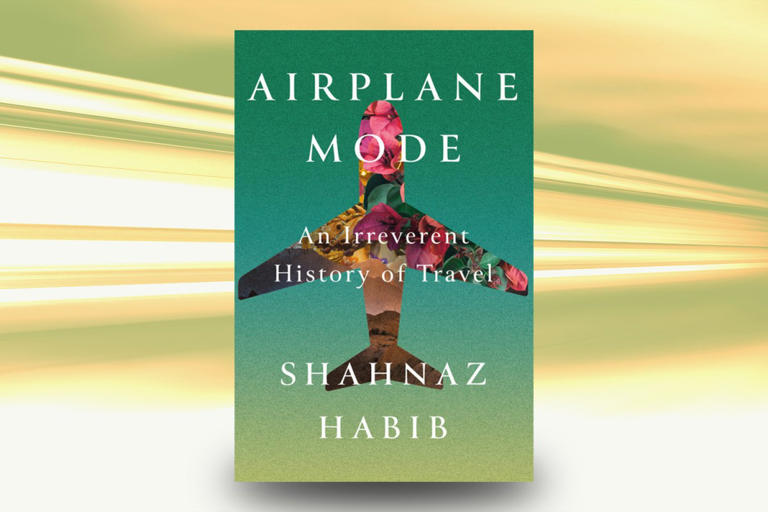

- Literature & Fiction
- History & Criticism

Fulfillment by Amazon (FBA) is a service we offer sellers that lets them store their products in Amazon's fulfillment centers, and we directly pack, ship, and provide customer service for these products. Something we hope you'll especially enjoy: FBA items qualify for FREE Shipping and Amazon Prime.
If you're a seller, Fulfillment by Amazon can help you grow your business. Learn more about the program.

Download the free Kindle app and start reading Kindle books instantly on your smartphone, tablet, or computer - no Kindle device required .
Read instantly on your browser with Kindle for Web.
Using your mobile phone camera - scan the code below and download the Kindle app.

Image Unavailable

- To view this video download Flash Player
Follow the author

The Meaning of Travel: Philosophers Abroad Hardcover – March 3, 2020
- Print length 272 pages
- Language English
- Publisher Oxford University Press
- Publication date March 3, 2020
- Dimensions 7.8 x 1.1 x 5.4 inches
- ISBN-10 019883540X
- ISBN-13 978-0198835400
- See all details
Customers who viewed this item also viewed

From the Publisher

Editorial Reviews
About the author, product details.
- Publisher : Oxford University Press; Illustrated edition (March 3, 2020)
- Language : English
- Hardcover : 272 pages
- ISBN-10 : 019883540X
- ISBN-13 : 978-0198835400
- Item Weight : 11.2 ounces
- Dimensions : 7.8 x 1.1 x 5.4 inches
- #80 in Nature Literature Criticism
- #5,065 in Travelogues & Travel Essays
- #43,245 in Philosophy (Books)
About the author
Emily thomas.
Discover more of the author’s books, see similar authors, read author blogs and more
Customer reviews
- 5 star 4 star 3 star 2 star 1 star 5 star 54% 24% 15% 4% 3% 54%
- 5 star 4 star 3 star 2 star 1 star 4 star 54% 24% 15% 4% 3% 24%
- 5 star 4 star 3 star 2 star 1 star 3 star 54% 24% 15% 4% 3% 15%
- 5 star 4 star 3 star 2 star 1 star 2 star 54% 24% 15% 4% 3% 4%
- 5 star 4 star 3 star 2 star 1 star 1 star 54% 24% 15% 4% 3% 3%
Customer Reviews, including Product Star Ratings help customers to learn more about the product and decide whether it is the right product for them.
To calculate the overall star rating and percentage breakdown by star, we don’t use a simple average. Instead, our system considers things like how recent a review is and if the reviewer bought the item on Amazon. It also analyzed reviews to verify trustworthiness.
- Sort reviews by Top reviews Most recent Top reviews
Top reviews from the United States
There was a problem filtering reviews right now. please try again later..
Top reviews from other countries
- Amazon Newsletter
- About Amazon
- Accessibility
- Sustainability
- Press Center
- Investor Relations
- Amazon Devices
- Amazon Science
- Sell on Amazon
- Sell apps on Amazon
- Supply to Amazon
- Protect & Build Your Brand
- Become an Affiliate
- Become a Delivery Driver
- Start a Package Delivery Business
- Advertise Your Products
- Self-Publish with Us
- Become an Amazon Hub Partner
- › See More Ways to Make Money
- Amazon Visa
- Amazon Store Card
- Amazon Secured Card
- Amazon Business Card
- Shop with Points
- Credit Card Marketplace
- Reload Your Balance
- Amazon Currency Converter
- Your Account
- Your Orders
- Shipping Rates & Policies
- Amazon Prime
- Returns & Replacements
- Manage Your Content and Devices
- Recalls and Product Safety Alerts
- Registry & Gift List
- Conditions of Use
- Privacy Notice
- Consumer Health Data Privacy Disclosure
- Your Ads Privacy Choices
- History of Travel
- Our Journey Begins
- Expanding Empires
- Age of Discovery
- The Modern Era
A Brief Visual History of Travel
Written by will jones & designed by cormac scanlan.
Humanity's journey
If there is one thing which has defined human nature throughout history it is our fidgety, irrepressible impulse to move, to discover and cross new frontiers, to adapt to new environments, to appease that same unquenchable curiosity which prompted our earliest ancestors to swing down from the treetops and start exploring the jungle floor six million years ago.
Populating the Planet
A two million year journey begins.
Our story, the history of travel, begins here, with our early ancestors, specifically the type of human known to science as Homo erectus , which lived from about two million years ago up until about 150,000 years ago. Homo erectus was remarkably unique and sophisticated in a number of ways: this was the first type of human to control fire and one of the first to use stone tools. And although we now know the species originated in East Africa, the first fossil discovered was in 1891 in Java, an Indonesian island some 5,000 miles away as the crow flies.
Of course, Homo erectus wasn’t a crow and it couldn’t fly, and although there is some evidence to suggest the species created basic rafts, it certainly didn’t invent anything which could cross thousands of miles of Indian Ocean. The only plausible answer, which has been confirmed by other fossil finds in the last century, is that Homo erectus saw fit to gradually leave Africa and colonise other parts of the world, notably the landmasses of Europe and Asia.
The first of the great human migrations had begun, and so too the history of travel.
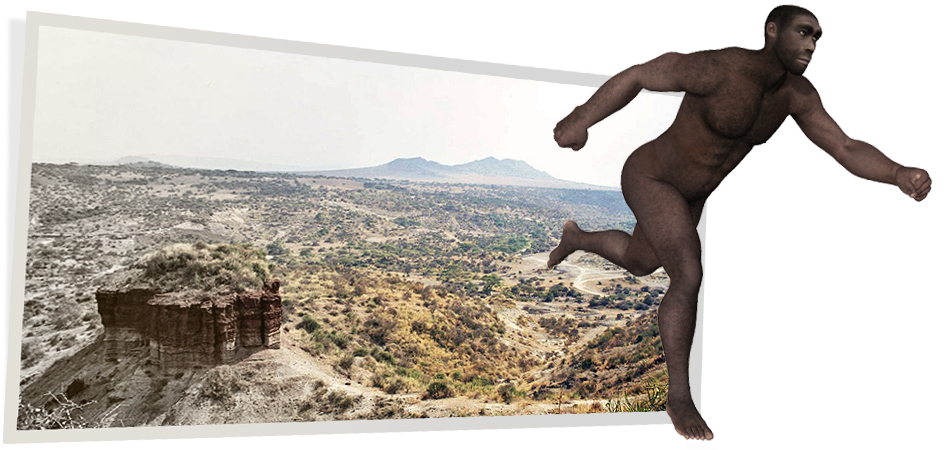
It’s a peculiar thought that the human race once comprised several different species: our dazzling egos rarely permit us to imagine any other life form being remotely similar in terms of intelligence – even our own family, so to speak. But the fact is there were many, and all are now extinct apart from one: Homo sapiens , from which every human alive today is a direct descendant.
Like other human species, Homo sapiens – that’s us – originated in Africa, with the earliest fossils dating to approximately 200,000 years ago. And like Homo erectus , we migrated out of Africa and began colonising other parts of the world, with the first intrepid explorers flying the nest about 70,000 years ago.
Unlike Homo erectus , we travelled much further, most notably to Australia and the Americas, which meant that by about 10,000 years ago every major inhabitable landmass on Earth supported human life.
Our willingness to travel and explore had allowed us to populate the planet.
If a small and tenuous population of protohumans had not survived a hundred slings and arrows of outrageous fortune (and potential extinction) on the savannas of Africa, then Homo sapiens would never have emerged to spread throughout the globe. Stephen Jay Gould
The Rise of Civilisation
Settling down in the age of innovation.
Ironically, the next phase in the history of travel was sparked by people remaining in one place, abandoning the nomadic, hunter-gatherer lifestyle which had served its purpose so well for hundreds of thousands of years.
The reason for this was the invention of agriculture, otherwise known as the Neolithic Revolution, arguably the most important development in human history to date. It would go on to evolve independently in locations around the world, but the first example we know of was about 10,000 years ago in an area called the Fertile Crescent, which on today’s maps encompasses parts of Egypt, Israel, Jordan, Lebanon, Syria and Iraq.
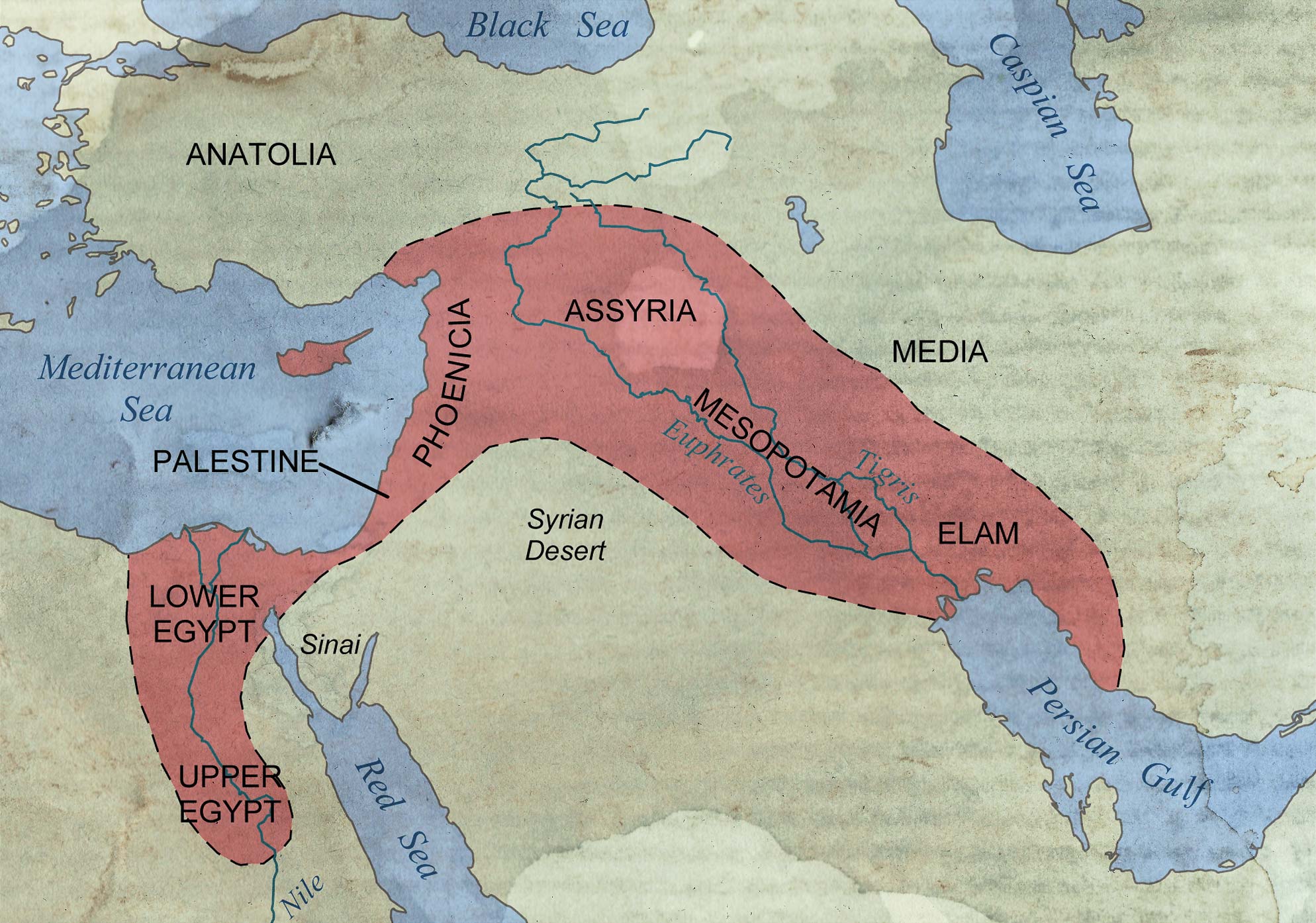
Map of the Fertile Crescent
The domestication of plants and animals removed the need for people to roam endless landscapes in search of food and water. Small groups of nomadic hunters, free from competition, were able to join together into single, settled societies, which were the seeds of civilisation as we know it.
Suddenly there was a surplus of food, people and, ultimately, time. Humans were no longer just surviving; they were living.
The implications of this were vast, but one particular way which affects our story is the innovation of new technologies which enabled us to better move around.
The most beautifully simple and obvious invention ever conceived by the human mind evolved, like most things, from something less sophisticated.
Rolling into a new era of travel

The use of logs as rollers dates back deeper than we’ll ever know, but the modern wheel – that is, built with spokes, attached to an axle and used specifically for transport – seems to have emerged around 5,000 years ago.
To thank for this we have the people of the Indus Valley Civilisation, who inhabited parts of present-day Afghanistan, Pakistan and India, and formed one of the three earliest civilisations; the other two were Ancient Egypt and Mesopotamia.
Like any good idea, this one quickly spread, though without decent roads to travel on, the world’s oceans and rivers would continue to provide the best surface for long distance journeys.
A sailing vessel is alive in a way that no ship with mechanical power ever can be. Aubrey de Sélincourt
The Sailboat
Embracing the winds of change.
No one knows precisely when the first boats were invented, but the sailboat – a significant improvement on, say, a dugout canoe – probably came into use around the same time as the modern wheel.
The Mesopotamians are credited with its invention, and in any case certainly benefited from it, using it to develop a flourishing trade with neighbouring territories and cementing their place in history as one of the world’s most successful civilisations.

Mesopotamian Sailboat

Mesopotamian flood myth
The sail boat would continue to evolve and develop, and some of the great voyages throughout history would never have been achieved were it not for this type of vessel. It allowed people to traverse vast distances in a way which simply would never have been possible by land.
Other ancient civilisations, such as the Egyptians and Sumerians, would continue to use the sail boat to both establish trading posts and to begin exploring the wider world. Eventually this would culminate in the first mini age of discovery, with Ancient Greek and Carthaginian explorers like Hanno, Nearchus and Hippalus making extraordinarily ambitious voyages to places as far east as the Indian subcontinent and as far north as the British Isles.
Civilisations continued to grow and multiply, and so too did the concept of travel as a means to trade and explore...
Happily for our story, the emergence of written language opens the way to find out more about individual explorers from these ancient times, as opposed to deriving general anthropological trends from archaeological evidence.
Classical Explorers
Voyagers from the ancient world.
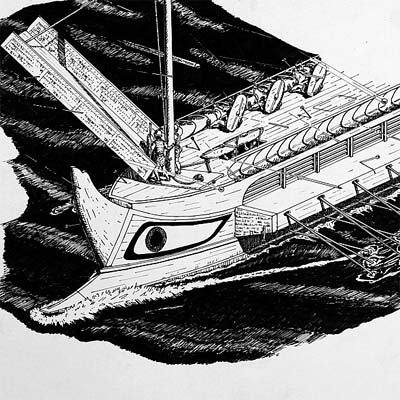
Hanno the Navigator
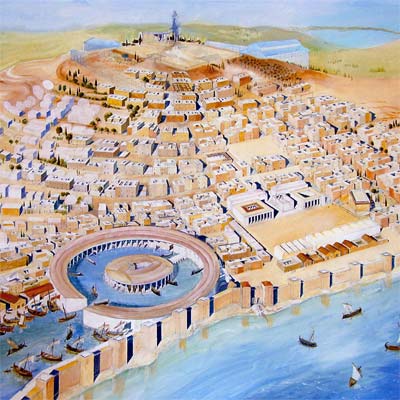
Himilco the Navigator
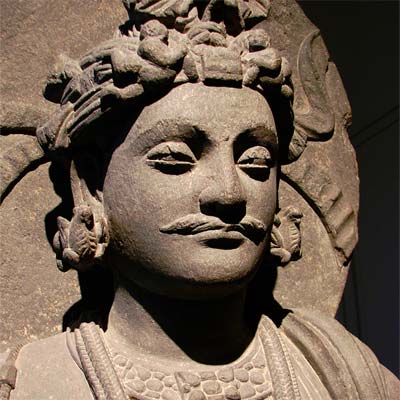
Scylax of Caryanda

Eudoxus of Cyzicus
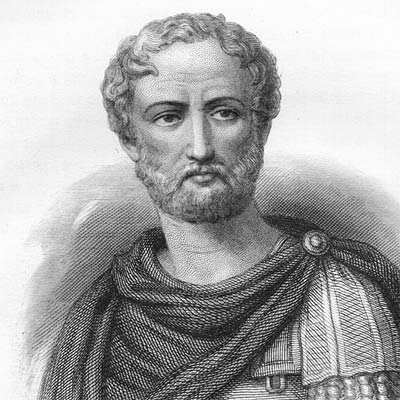
Mapping the Ancient World
The manifestation of knowledge.
Although exploration in the ancient world offered few guarantees, if voyagers were fortunate enough to return with their lives, they could also be sure to return with at least one invaluable commodity: knowledge.
The world was an enormous jigsaw puzzle which had to be painstakingly put together, piece by piece, a practice which we know today as cartography – the making of maps.
Depending on how loosely the word ‘map’ is defined, arguably the earliest known example can be found in the caves of Lascaux, near Bordeaux in France. Some of the pre-historic rock art within these caves depict star constellations, which throughout history have provided direction and helped people to navigate. The earliest known printed examples of star maps are the work of a Chinese astronomer called Su Song, who lived in the 11th century.
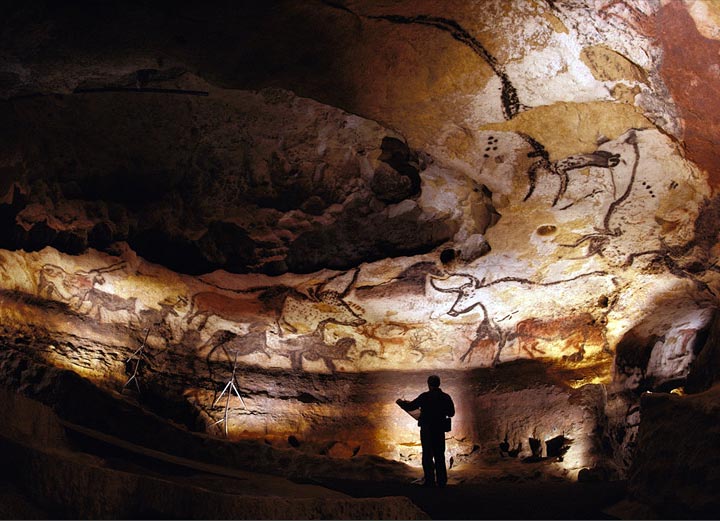
Lascaux rock art
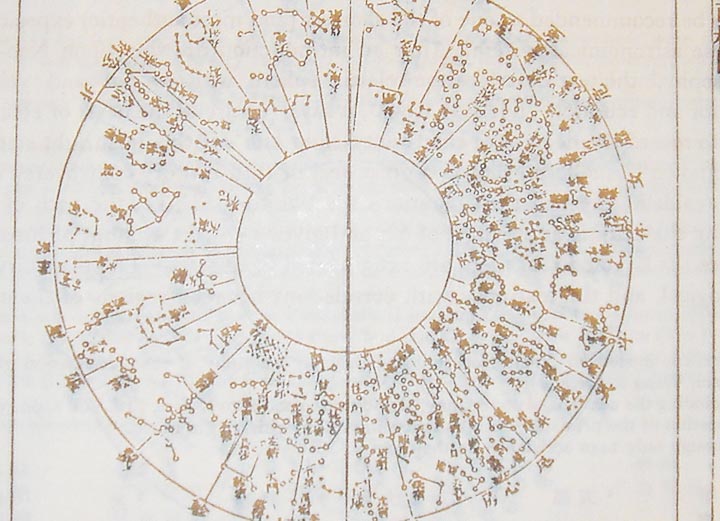
Su Song's star map
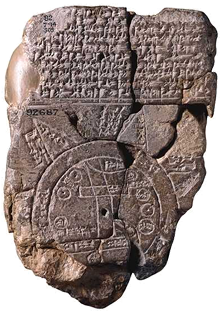
The first maps of planetary geography are difficult to date; there is little consensus regarding precisely when they emerged, and indeed whether some examples are even maps of real terrain as opposed to mythical lands.
It’s generally agreed the earliest surviving attempt at a world map is an engraved clay tablet from the ancient civilisation – and shown from the perspective of – Babylonia, dated to around the 6th century BC.
As time wore on and knowledge of the world increased among civilisations, maps grew from rudimentary reckonings to increasingly accurate depictions on much larger scales. A cartographer called Anaximander is credited with producing the first map (of which no evidence remains) showing the entire world as known to the Ancient Greeks, and his efforts were improved upon over the next few centuries by figures like Hecataeus, Herodotus and Eratosthenes.

Early maps by Hecataeus and Herodotus
In the 2nd century AD the Greco-Egyptian geographer Claudius Ptolemy wrote his Geography , which compiled everything the Romans knew about the world at the time, and was fervently translated by knowledge-hungry civilisations for the next thousand years.
The stars may have given humans direction, but direction alone was not enough: we needed to know what we could expect to find in any given direction, and maps answered that need.
When I trace at my pleasure the windings to and fro of the heavenly bodies, I no longer touch earth with my feet. I stand in the presence of Zeus himself and take my fill of ambrosia. Ptolemy
While the early civilisations of the Mediterranean Basin and Western Asia were developing successful trading economies and societies, spurred on in the knowledge that the more they travelled the greater their influence would become, something was stirring in the east...
Out of China
Wayfaring dynasties of the east.
In the far east of present-day China, on the banks of the Yellow River, a new civilisation had arisen of its own accord, and by about 220 BC it had been unified into a single kingdom – the Qin dynasty.
The first Emperor, one Qin Shi Huang, had rather grander aspirations than establishing colonies and trading posts. He decided he wanted to live forever, so sent his minions off into the East China Sea with the unenviable task of locating the secret of immortality.
The most famous of these voyagers was a man called Xu Fu, who duly went about fulfilling the request in the company of 3,000 virgin children. Between 220 and 210 BC Xu Fu made two expeditions. He returned from the first empty handed. He didn’t return at all from the second one, and is presumed to have lived out the rest of his days on the islands which we now know as Japan.
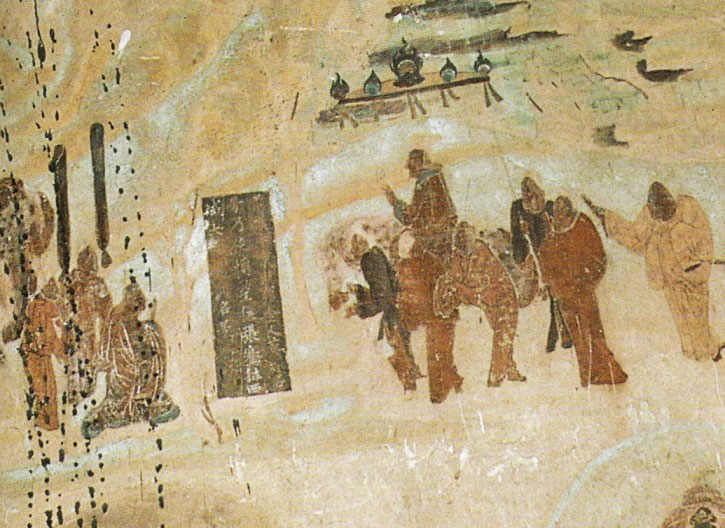
The Qin dynasty was followed by the Han dynasty, one of the rulers of which – Liu Bang – had slightly more grounded ambitions with regards to the outside world. Eager to know what lay in the lands to the west, in 138 BC he dispatched a man called Zhang Qian to find out and report back with information.
Little did Zhang Qian know, but his resulting journey into the heart of Asia would lay the foundations for one of the most important overland trade routes in human history: the Silk Road.
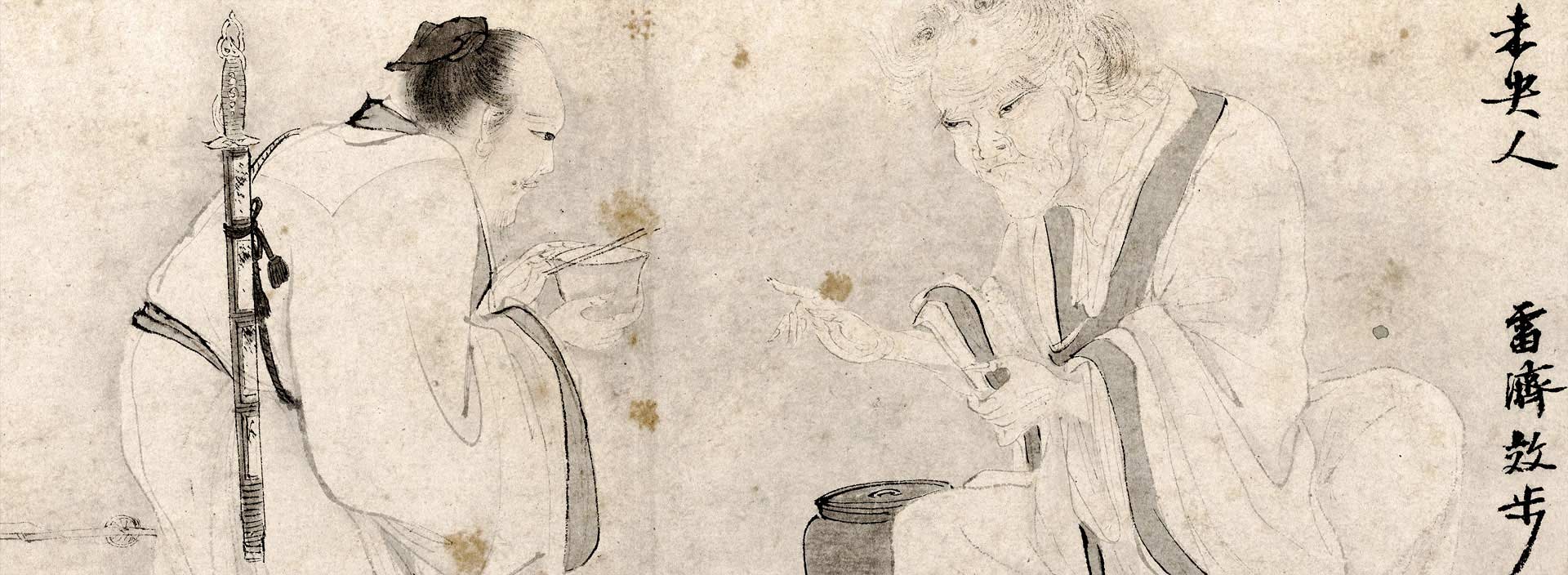
Qian's travels opened the door between Eastern and Western civilisation, and the world would never be the same again.
Civilisations to Empires
Expanding to colonise the planet.
As we have seen, many thousands of years ago some humans began to abandon their nomadic existence, settling down into small communities to farm the land rather than roam it. Some of these communities developed into societies. Some of these societies developed into civilisations. And some of these civilisations developed into empires.
Travel led to knowledge, to trade, to unfathomable riches. Ultimately it led to power.
Many empires had sprung up by the start of the first millennium, but there was one in particular that dominates the history books, just as it dominated much of the Western world during its existence: the Roman Empire.
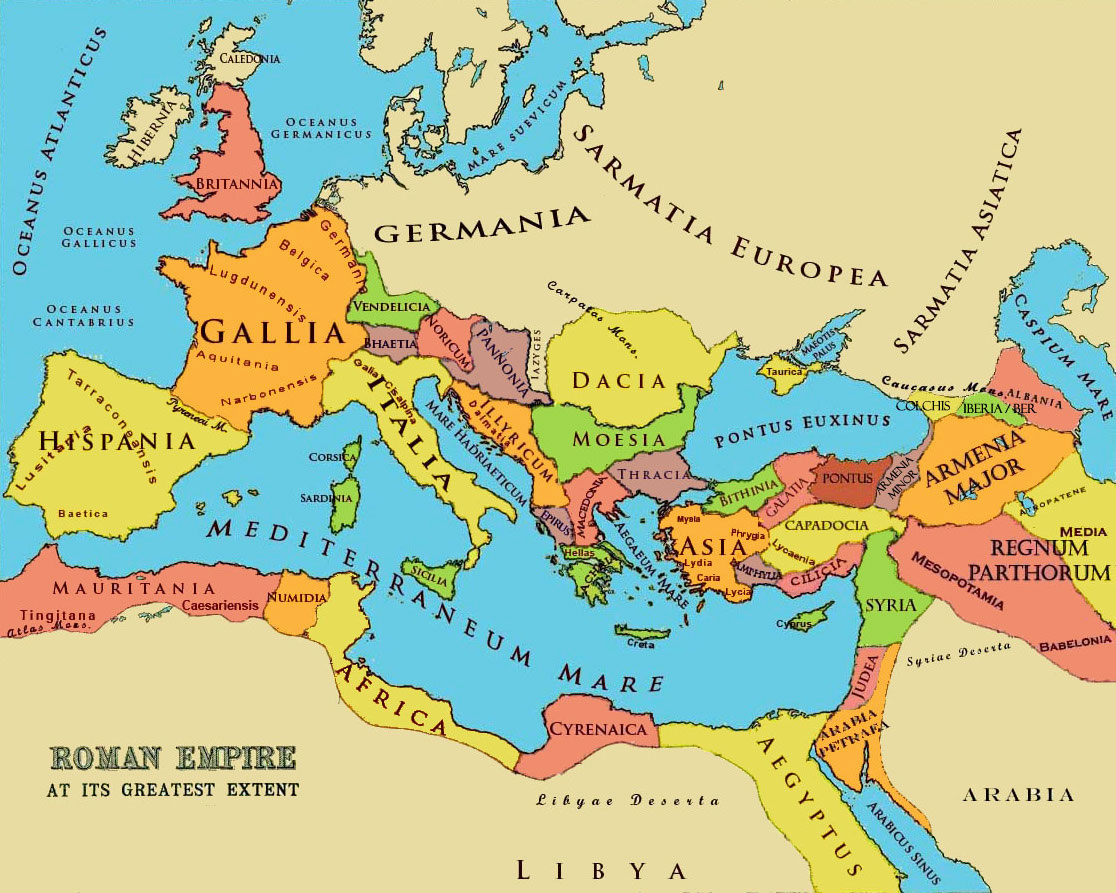
Map of the Roman Empire
As you might imagine, the Roman Empire – the size of which at its height in the 2nd century was unprecedented – cost a fair bit to run. This meant trade was essential, which in turn meant travel was essential, both within and outside the borders.
Furthermore, the Romans weren’t exactly famous for their shy and retiring nature: they were quite partial to a bit of conquest here and there, meaning a decent army was essential. As well as conquering new lands, the army was responsible for protecting territory already gained, which meant soldiers needed to be able to travel through the empire with ease, which in turn meant good infrastructure was essential.
It is a rough road that leads to the heights of greatness. Seneca
All Roads Lead to Rome
Stitching the empire together.
The Romans did not invent paved pathways. Civilisations the world over, from the Incas to the Celts, developed these independently. The Romans were not the first to build roads to link settlements. The Minoans, for example, constructed a 50km road through the mountains of Crete in 2000 BC, more than a thousand years before Rome even existed.
The Romans were the first, however, to build long distance roads on a massive scale, and this made their empire the mightiest the world had ever known.
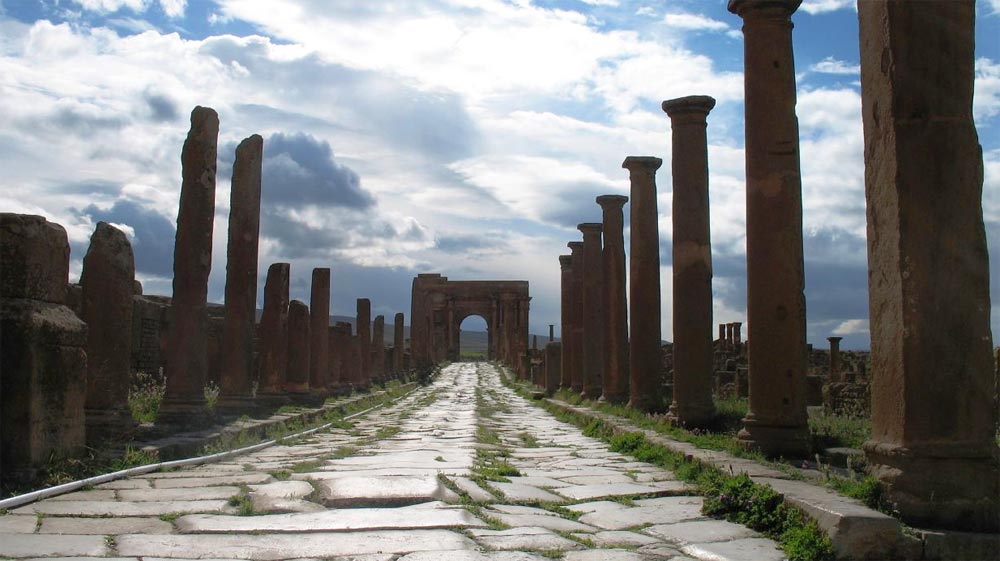
An ancient roman road
Rome was the hub, and great highways radiated out from the ancient city like spokes on a wheel, stitching the entire empire together, from the grassy hillocks of northern England to the burnt deserts of Saudi Arabia.
The Romans were so prolifically effective at facilitating travel within their empire that many of their roads are still clearly visible to this day, and others form the literal foundations for major routes still in use.
This expansive network was clearly helpful for the army, and traders who needed to transport goods, but others benefited too. Super-wealthy Romans built holiday villas in places like Pompeii, Baiae and Capri, and used them for vacations, marking the beginning of leisure travel and development of seaside resorts.
And then there were the early pilgrims, whose impressive journeys introduced an entirely new type of travel.
Religion points to that area of human experience where in one way or another man comes upon mystery as a summons to pilgrimage. Frederick Buechner
The Pilgrims
Pious walks of faith.
Whatever your religious convictions, or absence thereof, the vast majority of modern academics agree that Jesus existed as a historical figure. The general consensus among historians is that he was born around 5 BC and was probably a Jewish rabbi who preached his message in Nazareth in Israel, and was almost certainly crucified by the Romans in Jerusalem when he was about 33.
He also sparked the beginnings of Christianity, which by the 4th century had become the dominant religion of the Roman Empire. It was around this time that early Christians began making the first pilgrimages to sites associated with Jesus in the Holy Land.
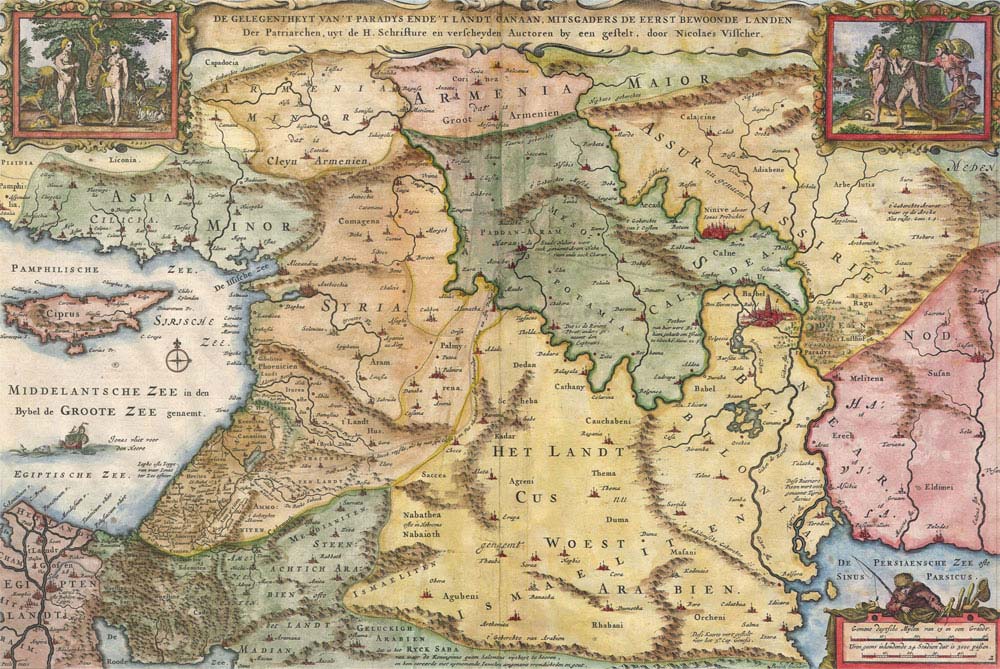
Map of the Holy Land
One of the earliest we know of was undertaken by the Pilgrim of Bordeaux, an anonymous character who travelled from France to Jerusalem and back again from 333-334 AD. He wrote about his journey in the form of an itinerarium , an ancient type of map used by the Romans to navigate their extensive road network.

Modern Day Jerusalem
The 6th and 7th centuries saw the birth of Muhammad and subsequent rise of Islam, and Mecca in modern-day Saudi Arabia became a focal point for Muslims to make a pilgrimage to.
This particular pilgrimage is called the Hajj , which means 'to intend a journey', and takes place in the last month of each Islamic year. The Hajj is compulsory for all physically and financially capable Muslims to carry out at least once in their lifetime to demonstrate their commitment to Islam.
Of the 15 million Muslims who visit Mecca annually, over 2 million arrive for the Hajj , creating the largest annual gathering of people anywhere in the world.
The best known of the many rituals Muslims are required to complete on arrival is to walk counter-clockwise around the Ka’aba, a cube-shaped building in the middle of Al-Masjid al-Haram – the holiest and most sacred mosque in Islam.
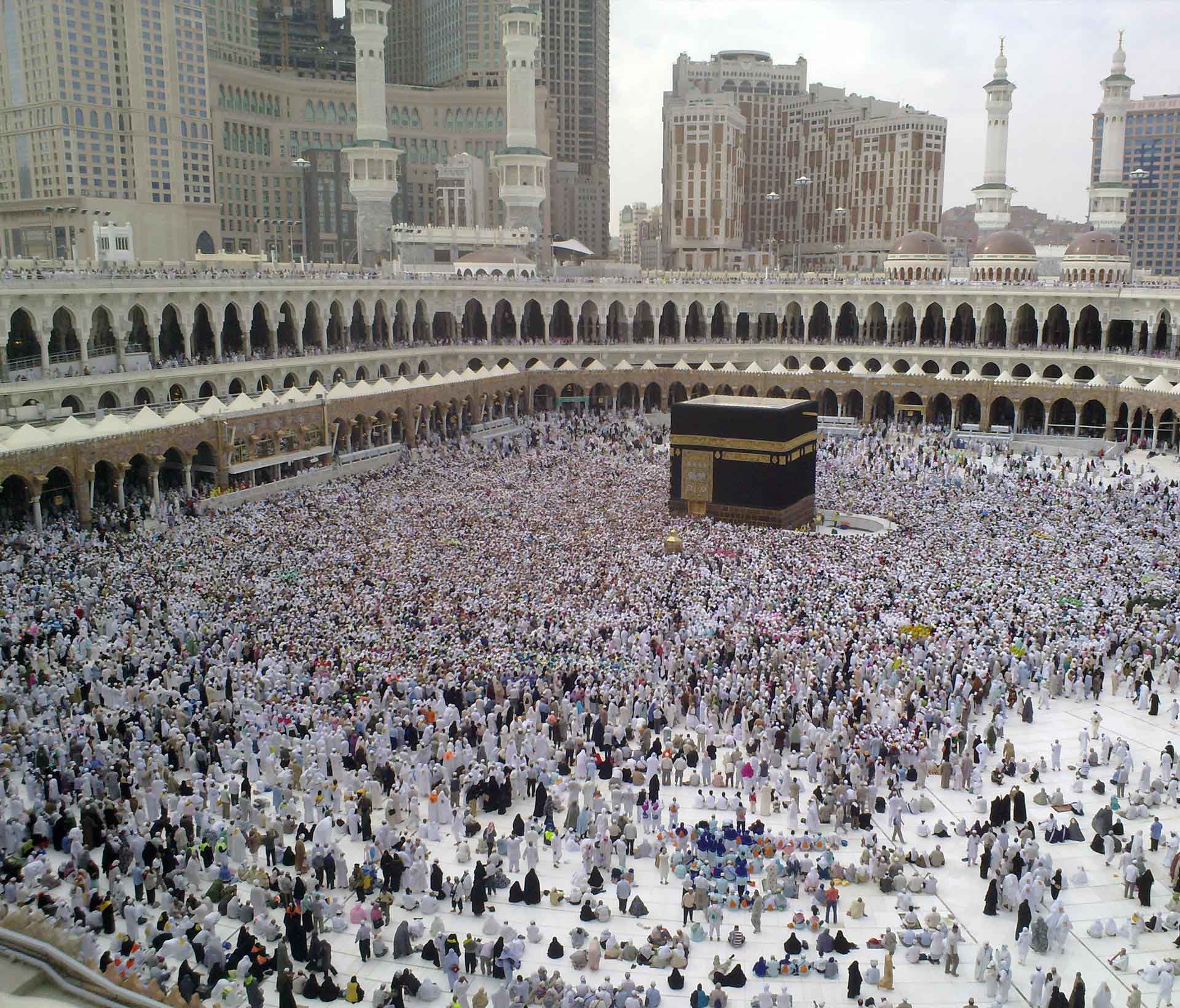
Modern Day Mecca
Just as Mecca is the holiest city in Islam, Varanasi is the holiest city in Hinduism. People have lived there for more than 3,000 years, making it one of the oldest continually inhabited cities in the world, and older than most world religions, including Christianity and Islam.
For hundreds of years Hindus have been converging in this sacred city to bathe in the River Ganges, which to them is an incredibly sacred body of water.
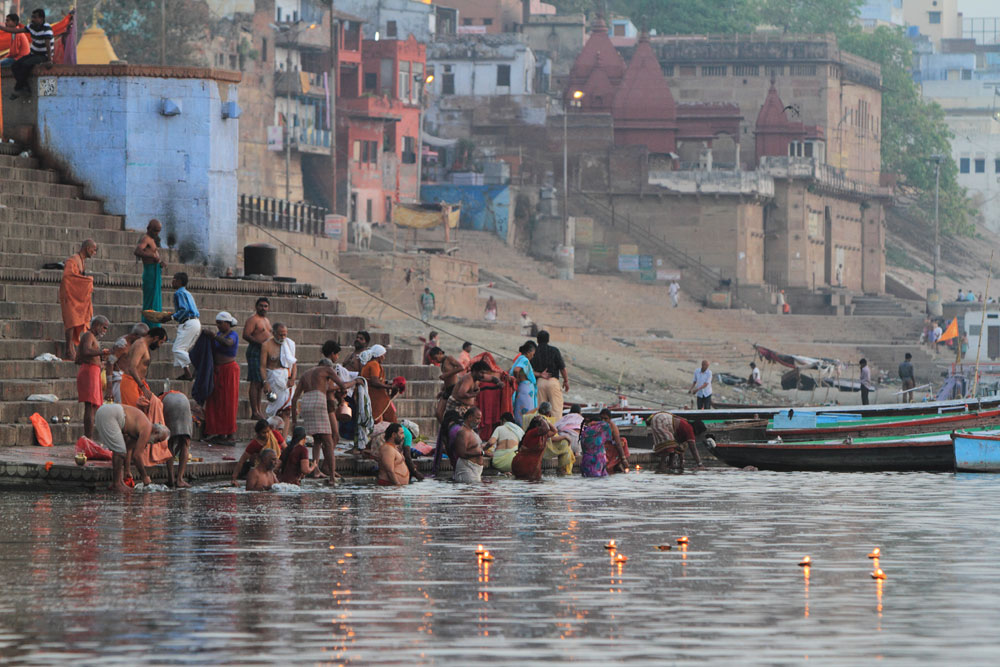
Bathing in Varanasi
Hindus believe that to bathe here cleanses all sins and releases one's soul, so some terminally ill Hindus travel here to die, making this particular pilgrimage a one way journey for many.
The city is famous for its ghats, a series of steps which lead down to the riverfront. There are almost 100, and while most are used by bathers, some are reserved for public cremations, which take place throughout the day.
Each individual pilgrimage is a very special type of travel: one geared towards spiritual betterment and inspired by faith.
The man that walks his own road, walks alone. Old Norse Proverb
Viking Voyagers
The seafaring scandanavians.

Lindisfarne Castle
One summer’s day in 793, a small population of monks on the tiny island of Lindisfarne, a monastery just off the northeast coast of England, saw a fleet of boats emerge on the horizon.
The monks wouldn’t have seen this type of vessel before. These boats were made from wood. They were long, narrow and shallow; their sterns and bows arched up symmetrically from both ends. The sterns were topped with carvings of snarling heads.
The boats had small cloth sails but were mainly propelled by teams of oarsmen sat on chests containing their worldly possessions.
The oarsmen were Vikings and their boats were called longships, which just happened to be ruthlessly effective at transporting would-be invaders into the heart of unsuspecting settlements, either from the ocean or rivers.

A Panoramic View of Lindisfarne
The monks on Lindisfarne on that summer’s day in 793 were about to become the first victims of what would be a 300 year Viking assault on settlements all over Europe.

There are lots of myths about the Vikings – horned helmets being a classic – but one indisputable fact is that they were prolific seafaring travellers who completed a series of incredible journeys from their Scandinavian homelands.
The Roman Empire had collapsed in the 6th century and this created a power vacuum throughout Europe, the Middle East and North Africa. The thousand years of chaos that followed are broadly known as the Dark Ages.

Long distance land travel became very difficult: what had once been a vast empire through which citizens and traders could move freely was now divided into hundreds of tribal territories, devoid of any central power structure. Trade and communication between distant lands suffered greatly as a result.
The Vikings realised that sea travel was the most viable way to connect with the rest of the world, be it for trade, settlement or just good old fashioned rape and pillage.
Indeed, the Vikings were no strangers to a bit of pillage. These Norse warriors plundered coastal and riverside settlements for hundreds of years, getting as far east as Istanbul and as far south as the north coast of Africa, crashing down like tsunamis upon vulnerable populations time and again.
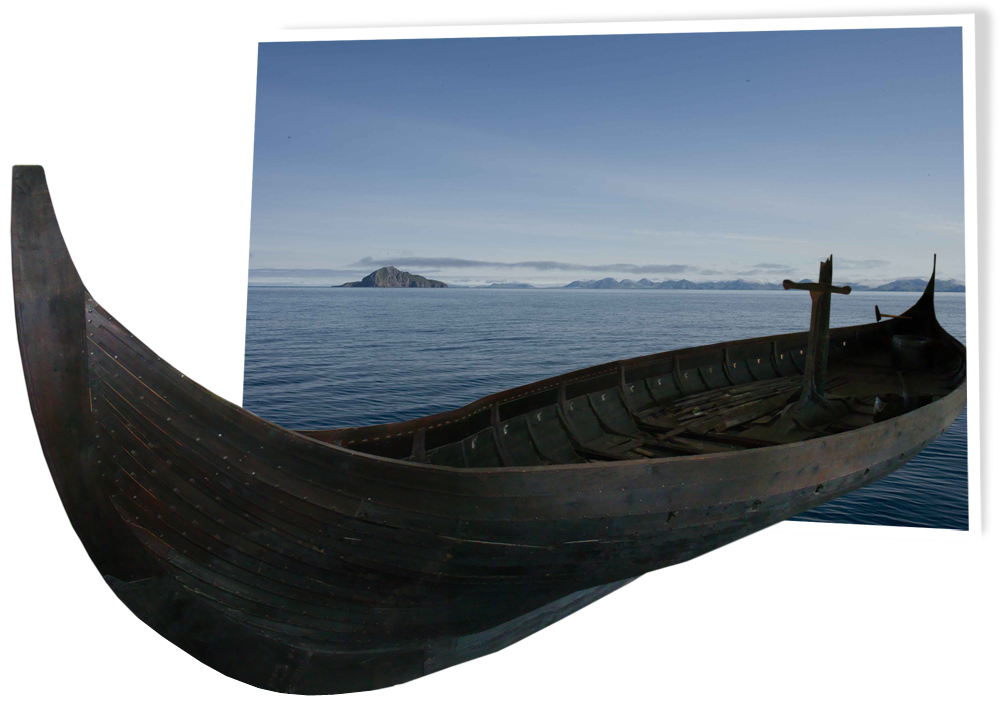
One contemporary British chronicler gave an indication of the fearsome reputation the Vikings quickly established:
Never before has such terror appeared in Britain as we have now suffered from a pagan race. The heathens poured out the blood of saints around the altar, and trampled on the bodies of saints in the temple of God, like dung in the streets.
One Viking leader, Ivar the Boneless, was remarkably brutal. He was what other Vikings called a ‘berserker’, which meant he was one of a special few who went into a trance-like frenzy during battle (this is where the English word ‘berserk’ originates from). On one occasion Ivar dispensed with a captured English king by strapping him to a tree and shooting arrows at him until his head exploded.
On another, he killed a rival Viking leader by snapping his ribs at his spine and pulling them out so they resembled wings, then wrenching the victim’s lungs out through the gaping cavity in his back. This particular method of execution became known as the Blood Eagle.
The Vikings as explorers were exceptional, even when they didn’t mean to be: many of their most impressive discoveries were accidental. On one occasion, a Viking called Naddodd drifted off course on his way from Norway to the Faroe Islands, and ended up on Iceland. He didn’t much care for the climate and left, but he was followed by one Ingolfr Arnarson a few years later, who visited with the aim of settling.
As the story goes, Ingolfr, upon sighting land, cast two wooden pillars into the sea, vowing to settle between wherever they washed up. He reached the coast, scoured it for the pillars, found them and set up camp. Today this settlement is called Reykjavik.
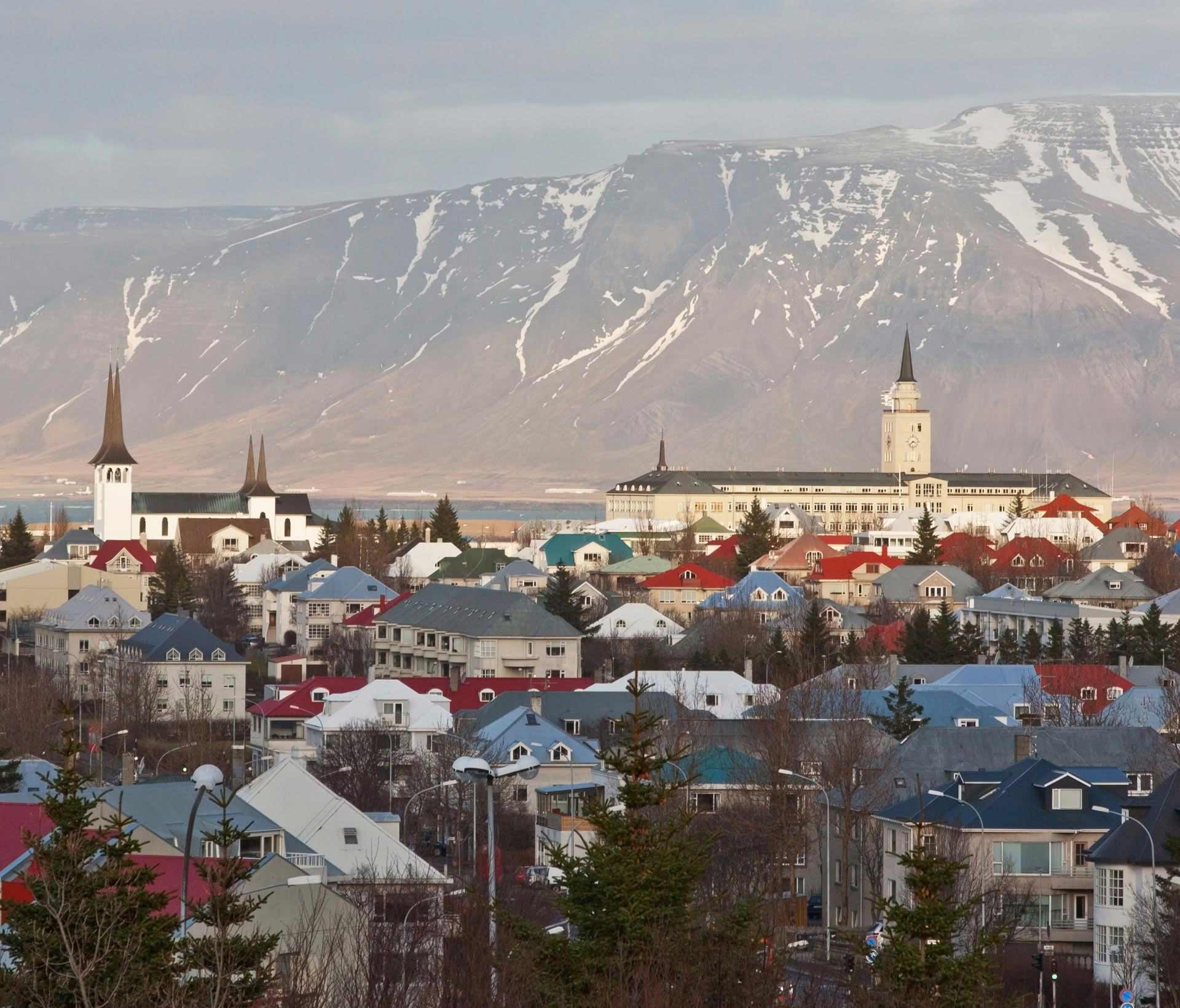
Reykjavik, Iceland
The Vikings were also the first Europeans to travel to North America – not, as every school child will tell you, Christopher Columbus and his crew. About 100 years after Iceland was settled, some Vikings travelled even further west, ending up on Greenland, where a couple of colonies were established.
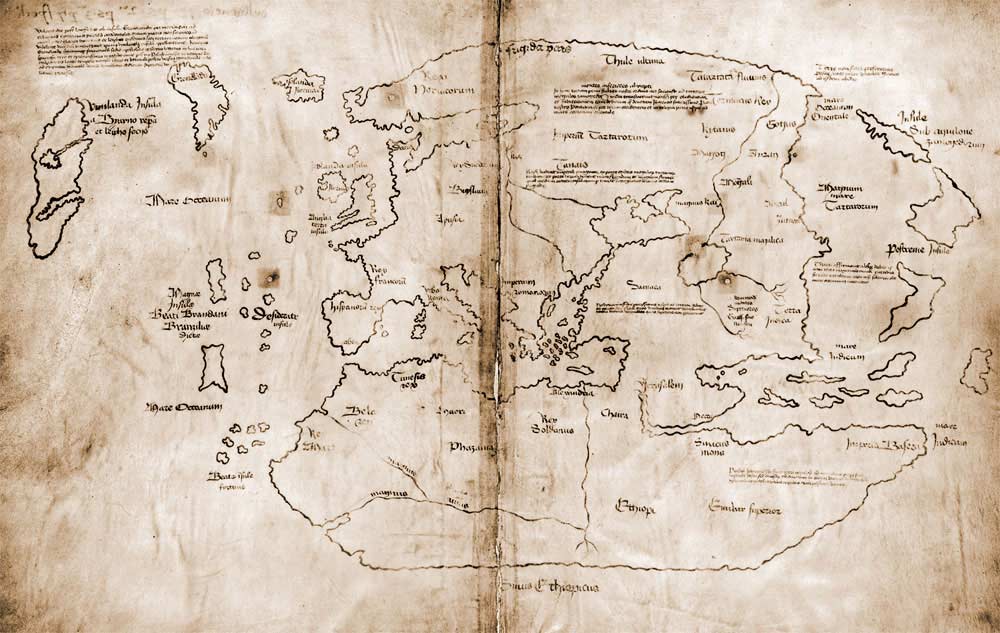
Map of Vinland
Soon after, a Viking captain called Bjarni Herjolfsson was blown off course on his way to one of the new Greenland colonies, and sighted the North American continent (but didn’t land). He was soon followed by another Viking, Leif Erikson, who did land and established a small settlement in the northern reaches of Newfoundland: he called it Vinland.
Although the Newfoundland settlement didn’t last long, Leif secured his place in history by being the first European to set foot in North America.
He would not be the last.
The ink of a scholar is more holy than the blood of a martyr. Muslim Hadith
The Islamic Golden Age
Muhammad and the muslim monopoly.
After the collapse of the Western Roman Empire, the Eastern Roman Empire – also known as the Byzantine Empire – enjoyed an initial period of relative peace, though soon became embroiled in a series of exhausting wars with its neighbour, the Sasanian Empire.
The confrontations culminated during the first two decades of the seventh century into a final conflict which crippled both powers both economically and militarily.

Calligraphic representation of Muhammad's name
It was around this time that a man called Muhammad, born in the city of Mecca in modern-day Saudi Arabia, began claiming he was having conversations with higher beings. He started preaching the resulting revelations and gradually amassed an army (literally) of followers, who under his leadership conquered Mecca, which along with the rest of the region swiftly converted to a new religion: Islam.
By the time Muhammad died in 632, he had unified the Arabian Peninsula both politically and religiously, and this marked the beginning of a golden age for the Muslim world.
Over the next century, the Muslims swept through the Middle East, Northern Africa and parts of Southern Europe, invading and claiming territory from the weakened Byzantine and Sasanian empires, and establishing their own empire – or caliphate – which by 750 had become the largest the world had ever seen.
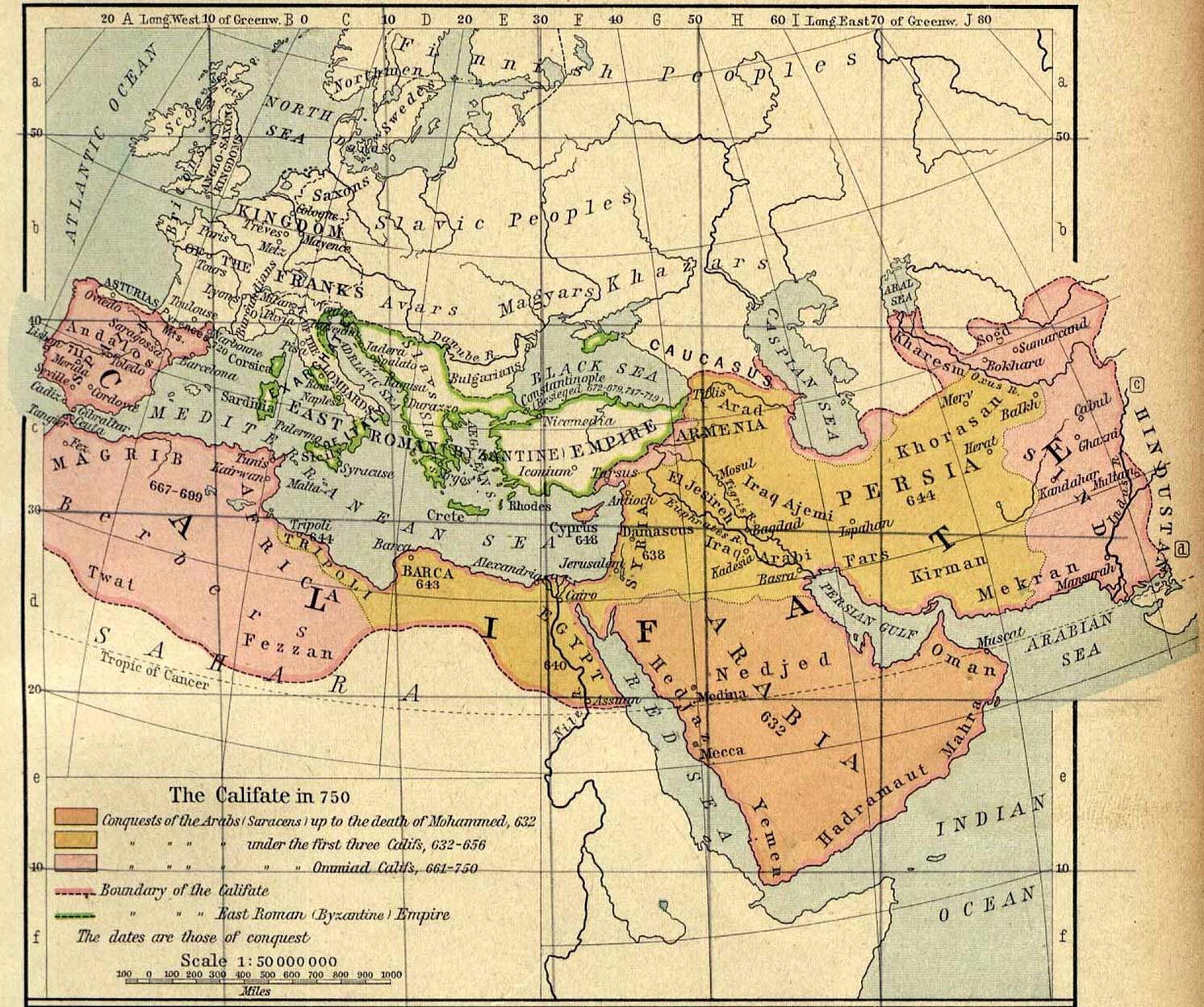
Map of the Umayyad Caliphate
The Islamic caliphate fostered remarkable ambitions and was extraordinarily progressive, even by today’s standards.
Most major cities featured hospitals which were open 24 hours a day and which by law had to provide free healthcare for citizens and foreigners alike, regardless of wealth or status – and mental illness was taken just as seriously as physical ailment. Freedom of expression was the norm, and religious tolerance was widespread, with high level government positions being awarded on merit to Christians, Jews and Muslims alike. Education flourished with the emergence of leading learning centres, like the University of al-Qarawiyyin in Morocco, widely regarded to be the oldest in the world and certainly the first to issue degrees.

Arabic Manuscript Depicting the Story of Bayad and Riyad
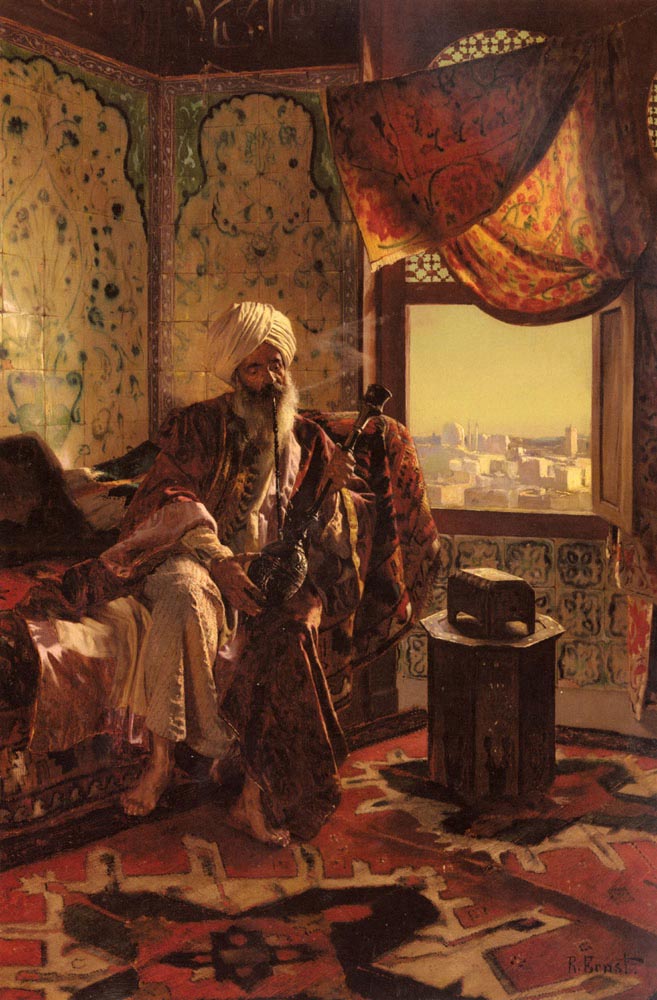
Rudolf Ernst's Painting 'Smoking the Hookah'
Above everything, the Muslims craved knowledge; they sought to expand their minds as much as they did their territories.
One of the key tenets of the Islamic Golden Age was the efforts of scholars to translate into Arabic everything that was known about the world, be it regarding medicine, architecture, philosophy, astronomy, mathematics, science, or any other subject. And they absorbed this knowledge from peoples past and present; the Greeks and the Romans, the Indians and the Chinese, the Persians and the Phoenicians, the Mesopotamians and the Egyptians.
As well as fervently translating and documenting all that was known about the world, the Muslims travelled throughout it as far as they feasibly could, establishing trading posts and connecting with foreign lands. The empire ran on a merchant economy, the foundation of which was the vastly lucrative trade routes which ran from the far east of China to the far west of northern Africa and the Mediterranean.
The Muslim empire was the beating heart of the global market; everything either began there, passed through there, or ended up there. Traders travelled far and wide, both disseminating and returning with new inventions, technologies, ideas, foods, goods, and every other conceivable thing that contributes to the makeup of human society.
Naturally, the success and influence of the Muslim empire did not go unnoticed by other world powers, and the first two or three centuries of the second millennium would mark its decline, with major threats emerging from both the west and the east.
Enter upon the road to the Holy Sepulchre; wrest that land from the wicked race, and subject it to yourselves. Pope Urban II
The Knights of Christ
Crusading into a holy war.
Emile Signol's Depiction of the Taking of Jerusalem
I am the punishment of God. If you had not committed great sins, God would not have sent a punishment like me upon you. Genghis Khan
Mongols on the Move
Genghis khan and the silk routes.
While the Muslims were busy fending off the last of the Crusaders from the west, a greater and far more ominous power was rising in the east.

Genghis Khan
By the start of the thirteenth century, a Mongolian man who went by the name Temujin had succeeded in unifying the nomadic tribes of northeast Asia into a single dynasty.
The man became known as Genghis Khan and his dynasty developed over the next few decades into the Mongol Empire, which at its greatest extent in 1279 covered almost 25% of the planet’s land surface.
To this day the Mongol Empire remains the largest contained land empire in the history of the world.
It was also one of the shortest-lived, fragmenting into warring factions a mere 150 years after it emerged, but for those few decades of stability an unprecedented freedom of movement and degree of safety for travellers and traders existed throughout the vast territory.
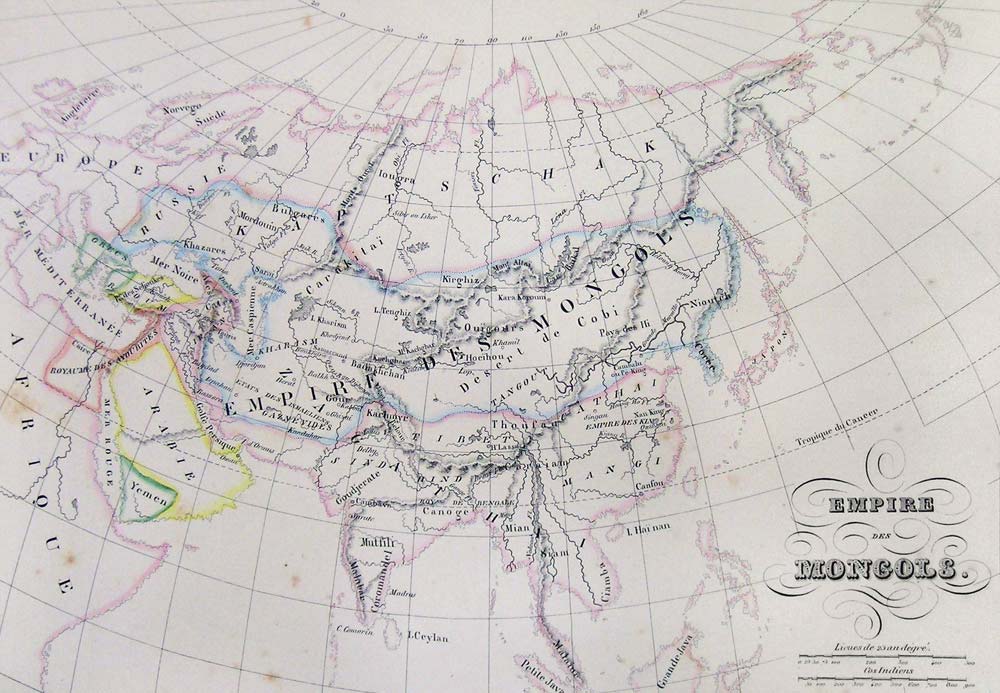
Map of the Mongol Empire
Historians have termed this period of stability the Pax Mongolica – the literal Latin translation is ‘Mongol Peace’ – and it meant the Silk Road, the collective name for the ancient land trade routes linking Europe and Asia, was fully re-established after centuries of fragmentation and being fraught with danger.
“A maiden bearing a nugget of gold on her head can wander safely through the realm,” was a common saying at the time.

The Merchant of Venice
Venetian Rustichello da Pisa must have scarcely been able to believe his luck. While languishing in a Genoese prison in 1298, probably for his part in a battle between Venice and Genoa (in which Venice lost), he was given a new cellmate who went by the name Marco Polo, a fellow Venetian who had been imprisoned for similar reasons.
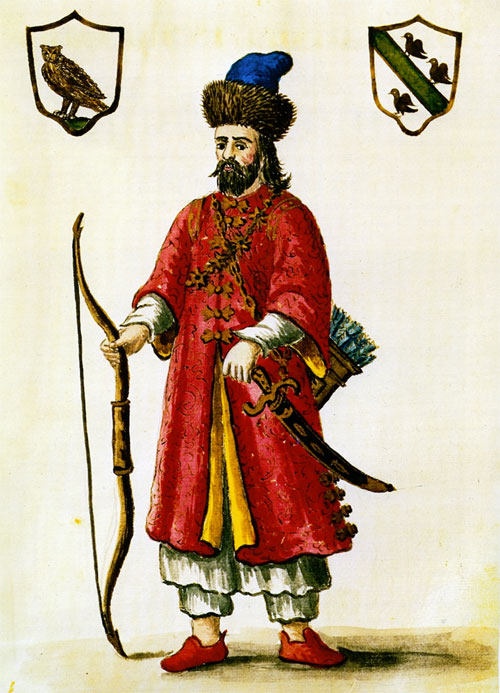
Pisa was an Italian romance writer with an insatiable interest in the East, which is exactly where Polo, a Venetian merchant, had just experienced one of the most epic adventures of all time: a 24 year roam through lands that held practically mythical status to Europeans at the time.
Marco was born in Venice in 1254 into a family of wealthy and influential jewel merchants. When he was six years old, his father and uncle, Niccolo and Maffeo, left Venice and travelled first to Constantinople (Istanbul) and then further east into the Mongol Empire, where they set up trading posts and met Kublai Khan, the Mongol ruler of China.
Intrigued by Christianity, the emperor urged the two merchants to go back to Europe and return with scholars who could better explain the religion and European society in general. Niccolo and Maffeo arrived back in Venice in 1269 and two years later set off again for the East, this time with two missionaries and the teenaged Marco in tow.
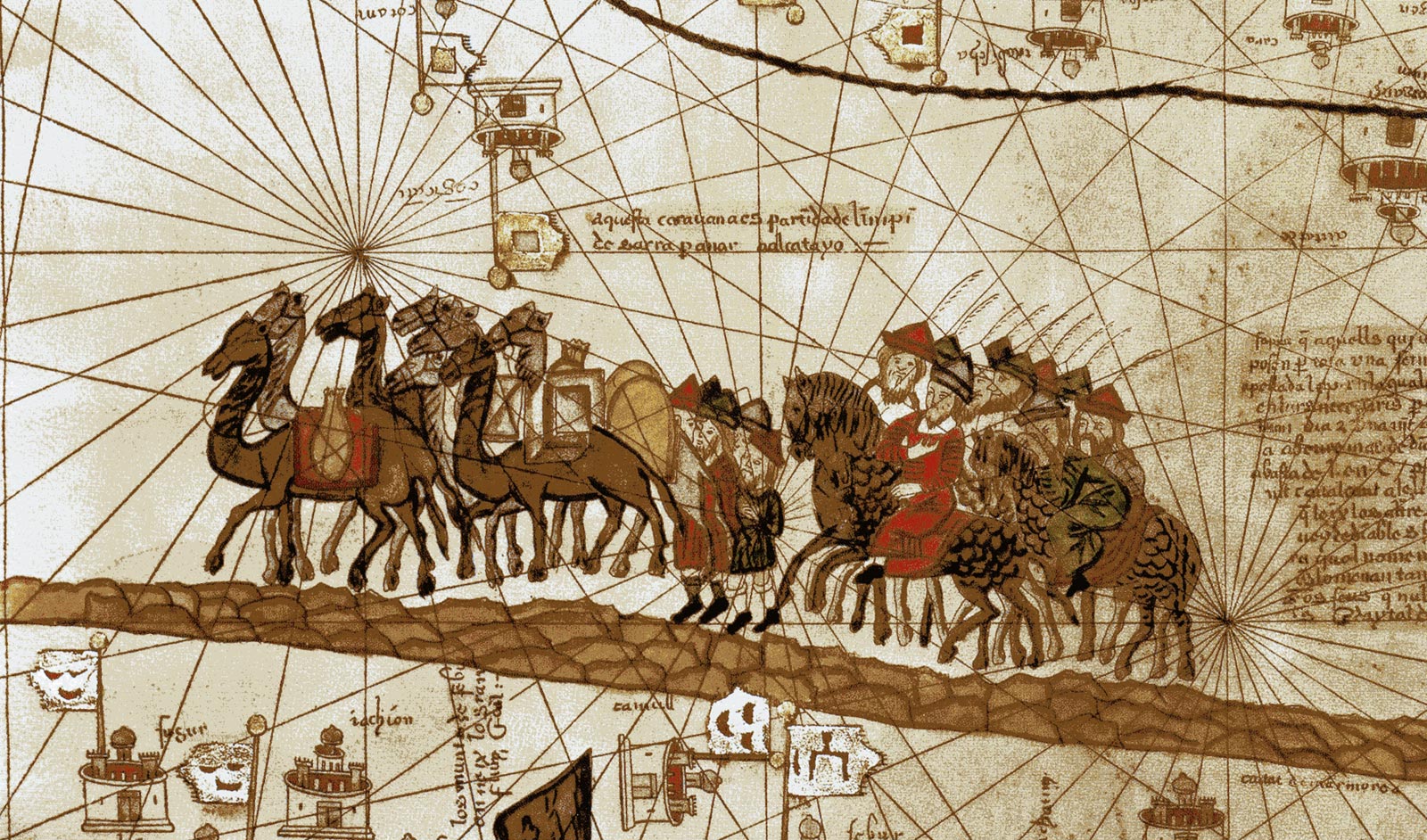
The caravan of Marco Polo traveling to India
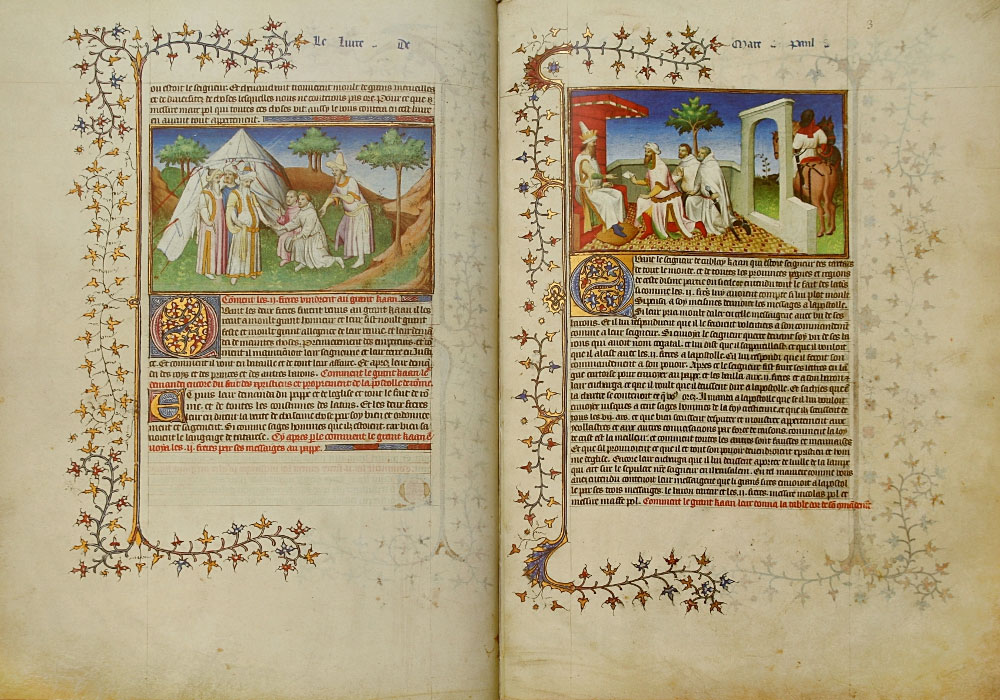
Book of the Marvels of the World
I have not told half of what I saw, for I know I would not be believed. Marco Polo
The Age of Discovery
The old world meets the new.
Back on the misty horizon that is the beginning of this history, you may remember reading about an explorer from Ancient Greece called Eudoxus, who lived in the 2nd century BC. He was the first to try to sail around the African continent, an endeavour which ultimately failed and led to his death. Amazingly, it would be 1500 years before someone successfully completed the journey.
That person came in the form of Vasco da Gama, a Portuguese explorer who in 1498 became the first European to circumnavigate Africa and reach India. It was an enormous achievement, one preceded by many years of failed attempts, hundreds of shipwrecks and thousands of lost lives.
To understand why the Portuguese – and soon after the Spanish, English, French and Dutch – were so obsessed with finding a sea route to Asia from Europe we have to consider the state of the world at the time.
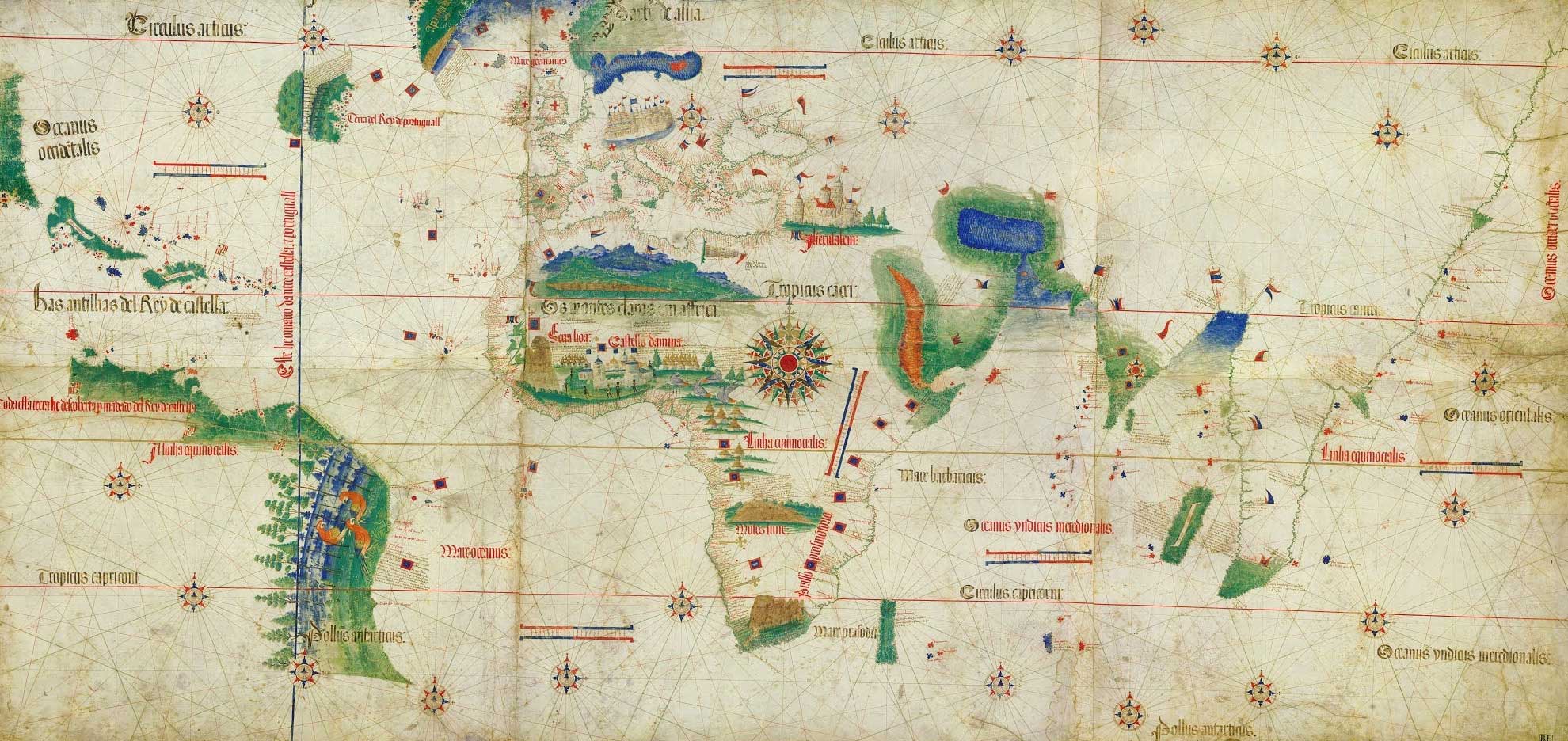
The Cantino Planisphere, A Portuguese World Map from 1502
The Western Roman Empire was long gone and the Eastern Roman Empire had been gradually overcome by the Islamic Ottomans, culminating with the fall of Constantinople (now Istanbul) in 1453. Muslims now controlled land access from Europe to Asia, making trade with the Far East – the lifeblood of many European economies – expensive and dangerous.
Of all the phenomenally valuable commodities from the Far East, spice was the most lucrative and sought after: it was used for many things in medieval Europe, including cuisine, medicine, perfume and rituals. The Portuguese knew that if they could find a way to bypass the traditional land trading routes and the expensive middle men, they could gain a serious foothold in the spice trade, which would lead to untold fortune.
And so it was, the Age of Discovery began, and with it a scramble among European powers to explore the world.
circa 1460 – 1524
As we have seen, in 1498 Vasco da Gama, a Portuguese explorer, became the first European to sail around Africa and reach India. The momentous implications of this journey cannot be emphasised enough. Vasco da Gama filled a colossal gap in European maritime knowledge and opened up a whole new era of travel.
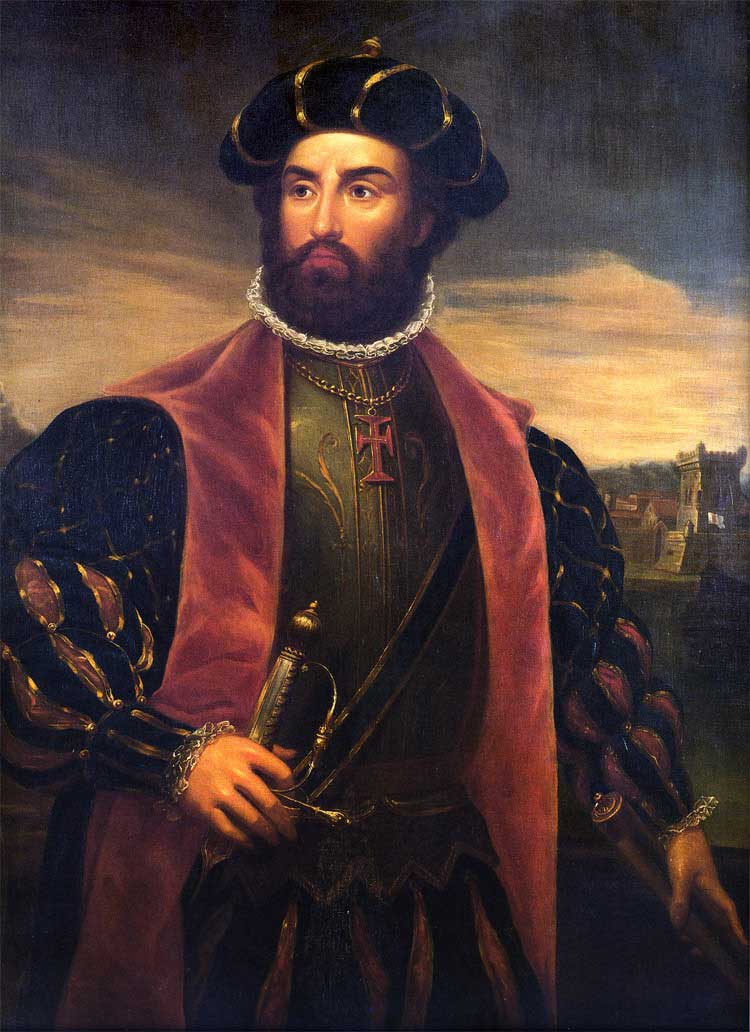
Vasco da Gama
The entire voyage took almost two years, during which time da Gama lost two of the four ships in his fleet and more than half of the 170 crew. But he returned a hero, having discovered the fabled Indian spice routes. In the decade that followed, the Portuguese would travel even further east, eventually discovering and conquering the source of the trade, the Spice Islands themselves (today the Maluku Islands) in Indonesia.
It should be said, for the record, that Vasco da Gama, for all his navigational prowess, was a man of exceptional cruelty. Driven by his desire to establish Portuguese dominance in the region, he dealt with anyone he viewed as competition – and those he didn’t – with ruthless violence. On one occasion he intercepted a ship in the Indian Ocean with 400 unarmed pilgrims on their way to Mecca.
After looting the boat and locking the men, women and children below deck, he set fire to the ship and burned them all alive. An eye witness described how da Gama was unmoved after looking through the porthole to see panic-stricken mothers holding up their babies and begging for mercy.
1451 – 1506
While the Portuguese were tentatively scoping their way along the coast of Africa looking for a way around to Asia, the Spanish were looking to the west. They had the same ambitions as the Portuguese – to tap into the spice trade, albeit from a different direction.

Christopher Columbus
Christopher Columbus, an Italian explorer, was the man hired by the Spanish monarchs to find the route.
Contrary to popular belief, Columbus and his contemporaries knew that the world was round, not flat, so to seek Asia travelling west across the Atlantic was not an unreasonable strategy.
What Columbus didn’t know about was the existence of the American continents. No one knew about them. So when Columbus sighted land during his first voyage in 1492 he assumed he had discovered the other side of Asia, which is how the Caribbean gained its misnomer of the West Indies.

The New World
The land Columbus found – he would return another three times in his lifetime – quickly became known as the New World, and word spread throughout Europe like wildfire.
Columbus never did make it to Asia and he wasn’t the first European to reach the Americas (as you may remember, a Viking expedition travelled there hundreds of years previous), but he was the first European to establish regular contact with the new lands, and for this he became one of the most important figures in the history of the world.
1480 – 1521
One obvious yet incredibly challenging journey that still had to be made was a full circumnavigation of the planet. This challenge was given to the Portuguese explorer Ferdinand Magellan, hired by Spain, who in 1519 set sail across the Atlantic with the same goal as Columbus: to find a westerly route to the Spice Islands, from which he could carry on in the same direction all the way back to Europe, thus completing a full loop.
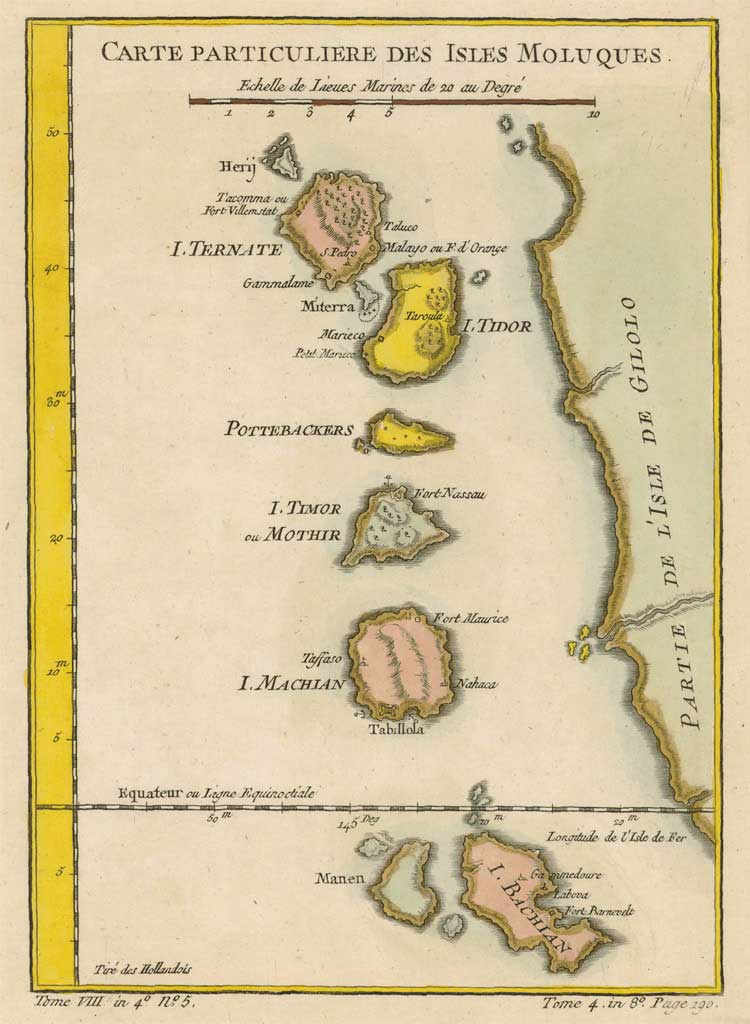
Map of the Maluku Islands
The voyage was unsurprisingly tortuous, and by the time the fleet eventually found its way to the Pacific after crossing through the southern tip of South America — now known as the Straits of Magellan — there had been mutinies, storms and wrecks. Still, the remaining men pushed on across the Pacific and found their goal: the Spice Islands.
For Magellan, this was the region where his journey ended. He decided to try and convert the inhabitants of Mactan, an island in the Philippines, to Christianity, and when the leader of the island refused, Magellan returned with the intention to attack. The resulting battle didn’t go well for the captain: he was incapacitated by a bamboo spear and subsequently hacked to death by the locals.
Some of his men survived and carried on the journey, now under the leadership of a man called Juan Sebastian Elcano, and by 1522 arrived back in Spain. Of the five ships and 270 men that originally set sail three years before, one ship returned with just 18 survivors.
1603 – 1659
By the turn of the seventeenth century the coasts of most of the world’s significant landmasses had been mapped to varying degrees of accuracy, but there was one major omission: the 3 million square miles of land that we now know as Australia.
Medieval Europeans suspected the existence of a great continent, mainly based on the theory that a certain amount of land in the Southern Hemisphere was needed to balance out the land in the Northern Hemisphere. But no one had ever actually seen it.
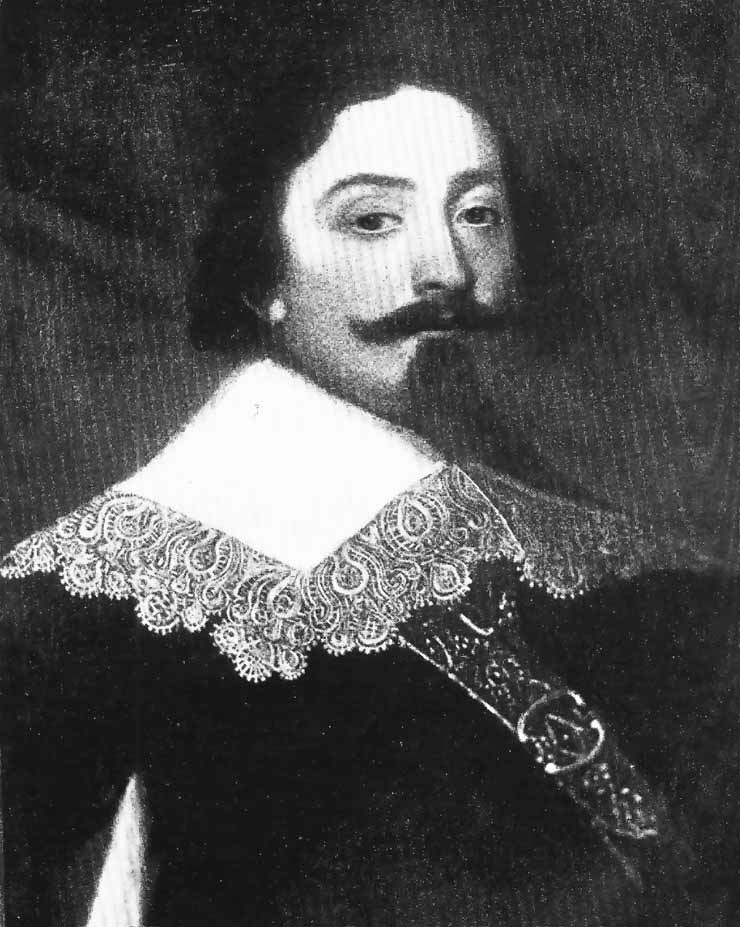
Abel Tasman
He soon departed back to Asia, though, and another 40 years would pass before someone saw fit to delve a little deeper. That person was a Dutch explorer called Abel Tasman, who between 1642-44 became the first explorer to circumnavigate Australia.
Tasman also became the first explorer to reach Tasmania (his namesake), New Zealand and many of the Pacific Islands, including Fiji. He was sufficiently interested enough in Australia to afford it the name New Holland, loosely claiming it for the Dutch, but neither he nor any of his compatriots ever settled there.
The voyages and explorations that cumulated in the Age of Discovery changed the world forever.
Worlds Collide
The columbian exchange.
The Age of Discovery began with Portugal trying to tap into the lucrative spice trade and ended with a global mingling of cultures, foods and technologies on a scale never seen before. Historians have termed this meeting of the Old and New Worlds the Columbian Exchange, after the explorer who was the first to establish regular contact.
The extent to which people benefited from the Columbian Exchange really depended on where they were born. Generally speaking, the march towards globalisation was enormously advantageous to European powers and mostly cataclysmic for everyone else.
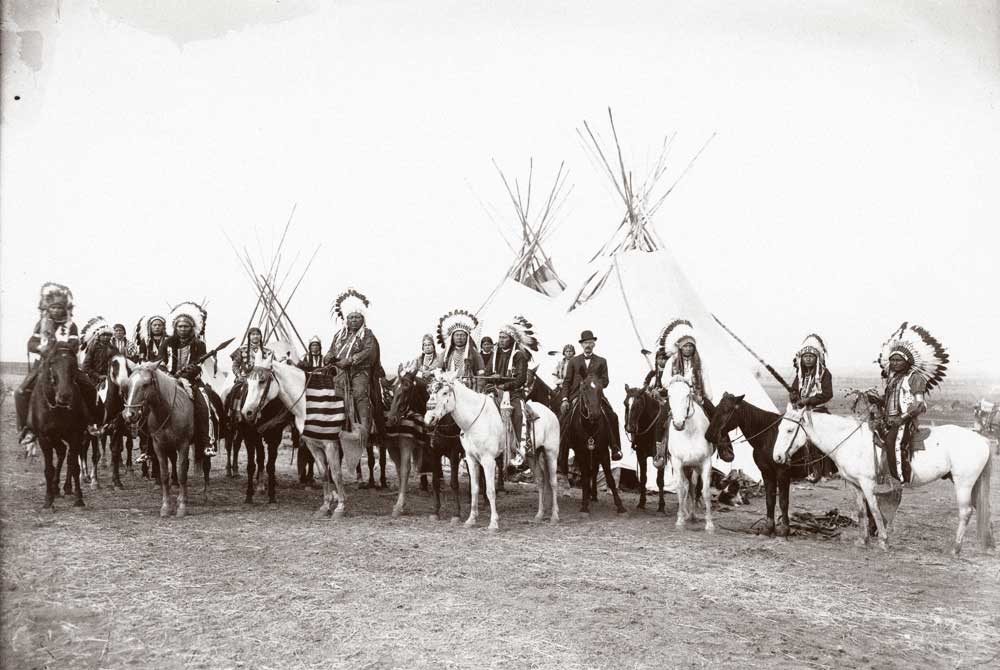
Native American Indian Tribe
Diseases like small pox and measles had always been a problem for Europeans and Asians, but after countless generations many had developed a natural immunity. Native Americans, however, had no immunity whatsoever, and these diseases absolutely decimated their populations. Conservative estimates claim that 85-95% of these peoples had been wiped out by Old World diseases within 150 years.
This meant there was practically no resistance to European powers seeking to establish colonies in the Americas. When these colonies had been established, people were needed to work in the fields of the new lands, and for this resource Europeans turned their attention to Africa. And so began the Atlantic slave trade.
One of the many, many consequences of the Age of Discovery and Columbian Exchange was that Europe became phenomenally rich – and remains so to this day.
In all parts of the Old World, as well as of the New, it was evident that Columbus had kindled a fire in every mariner's heart. That fire was the harbinger of a new era, for it was not to be extinguished. Charles Kendall Adams
Antiquity Revived
The renaissance blooms.
As we learnt earlier, after the collapse of the Roman Empire, Europe was plunged into what historians have termed the Dark Ages, one of the many lowlights of which was the Black Death, which wiped out half the continent's population.
Perhaps understandably, by the time European powers had finally gathered themselves and achieved some stability they began looking back to the ancient civilisations of Rome and Greece with an air of nostalgia.

View of Florence from the Piazza Michelangelo
The renewed interest in classical civilisations – combined with a surplus of wealth – sparked a cultural movement called the Renaissance. It sprouted in Florence before blossoming throughout Italy and then the whole of Europe, and at its essence was a revival of European art and literature inspired by classical models.
It was this cultural movement that set the scene for the first ever gap years.
Lads on Tour
The birth of the gap year.
Starting in the mid 17th century, young male English aristocrats began travelling across the Channel to explore France, Italy and other countries on the continent. Money was no object and they would hire guides and carriages as and when they needed them.
The aim was to build on their classical education, to see the architectural skeletons of the Ancient Greek and Roman worlds with their own eyes, to mingle with the high society of their European neighbours, to study first-hand the grand masterpieces being created by men like Leonardo da Vinci and Michelangelo, to perfect their foreign languages and etiquette, to commission paintings and sculptures which they could bring home as souvenirs – proof of their broadened horizons and connections.
These men became known as the Grand Tourists and their journey was called the Grand Tour. The itinerary depended on the whims of individual travellers but the compulsory destinations were Paris, Florence and Rome, where anything up to a year would be spent in each.

For about 200 years the Grand Tour was a privilege only available to the fabulously wealthy. However, as industry developed, the possibility to travel both domestically and internationally widened enormously for those lower down the social ladder.
Industry Arrives
And the railroad sparks mass movement.
The Industrial Revolution began in Britain in the mid 18th century and spread throughout Europe and North America over the next few decades.
The ways in which it changed society are practically infinite but as far as our story is concerned one of the most interesting developments was that of the railroad.

Train in Temecula, 1888
The main cities of Europe were already reasonably well-connected by actual roads, but railways offered a considerably cheaper, quicker, safer and more comfortable alternative.
Britain was the first to recognise the infrastructural advantages of railways and by 1850 – just 20 years after the first intercity track opened – there were an astonishing 7,000 miles of railroads stitching the country together.

Group including Isambard Kingdom Brunel (far right)
The rest of Western Europe soon emulated Britain’s lead and by the turn of the 20th century trains completely dominated long distance land transport, and remain to do so in most countries around the world.
The birth of the railroad marked a colossal leap forward in making travel accessible to the masses and it wasn’t long before someone capitalised on the new infrastructure.
Many people even to this day claim that train travel is the best way to get around. It’s relatively cheap, it allows travellers to absorb the scenery through which they move and it offers the kind of comfort impossible to find on planes and busses. It is also an incredibly safe form of travel.
The industrial revolution has brought different peoples in such close contact with one another through colonisation and commerce that no matter how some nations may still look down upon others, no country can harbour the illusion that its career is decided wholly within itself. John Dewey
Brits Abroad
Leisure travel launches.
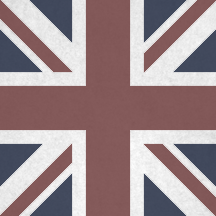
One summer’s day in 1841 a man called Thomas Cook was walking to a meeting in Leicester, England. The meeting was hosted by his local temperance society, part of a wider movement which campaigned for moderation of alcohol intake. Members believed alcohol abuse was the root cause of most of the social problems in Victorian Britain.
Cook later recalled from that walk: “The thought suddenly flashed across my mind as to the practicability of employing the great powers of railways and locomotion for the furtherance of this social reform.”
Upon reaching his meeting, Cook suggested to the members that for their next get-together, which was 12 miles away in the town of Loughborough, he charter a train to get them there and back, and provide everyone’s lunch, too. The idea was met with great approval, so Cook negotiated a deal with Midland Counties Railway Company. Each passenger would be charged a shilling for return tickets and food, and Cook would receive a percentage of the total figure made.
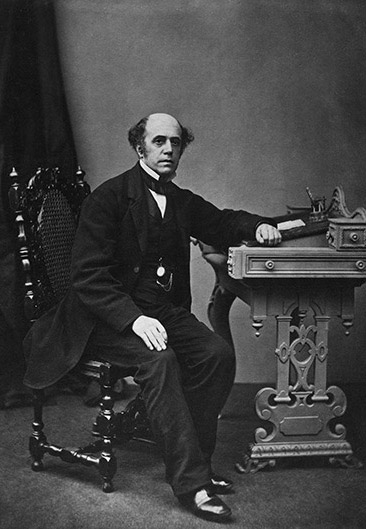
Portrait of Thomas Cook
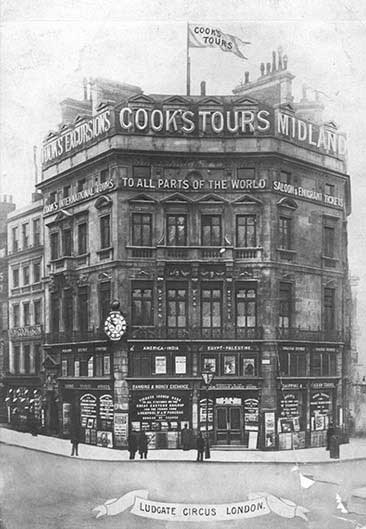
Thomas Cook head offices at Ludgate Circus, London
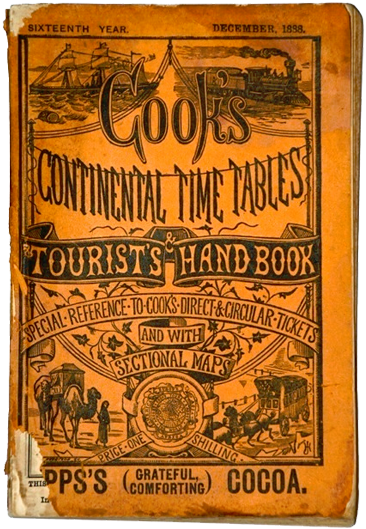
1888 Thomas Cook Handbook
The concept was simple. Everyone was a winner. The railway company was happy to get so many seats filled up in one booking.
Thomas Cook was happy because for arranging the excursion he received a share of the profits. And the passengers were happy because they didn’t have to go to the bother of organising their journeys. Or lunch. Everything was taken care of in one handy package.
Cook could never have known it, but the thought that flashed across his mind on that summer’s day in 1841 planted the seed for what is today the world’s fastest growing industry, one which sees more than a billion people cross international borders every year, and one which is worth more than a trillion dollars to the global economy: tourism.
Buoyed by the success of that initial outing, Cook continued for the next few years to organise similar excursions, in the process inadvertently becoming the world’s first travel agent. It wasn’t long before he saw the potential for leisure travel and started putting together tours of Scotland, and then eventually overseas trips to Europe, Egypt and the States.
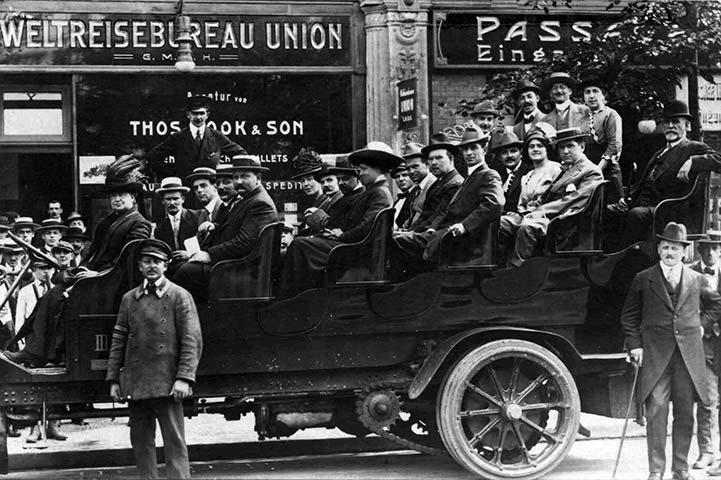
Thomas Cook coach
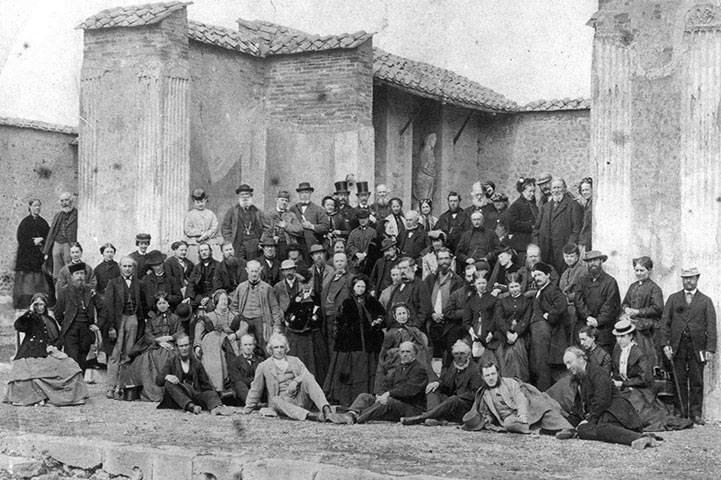
Thomas Cook tour party
Unlike the Grand Tours of the 17th and 18th centuries, these trips were available to a much wider range of people, namely the newly created middle classes.
Thomas Cook died in 1892 and his sons and grandsons continued to run the family business, which by the turn of the twentieth century had offices in Australia and New Zealand and had organised over 3 million trips.
And that was just the beginning.
Titanic Ships
Steaming the seas.
Transport to travel is what armies are to conquest: the better the former the easier the latter.
The introduction of railways marked an enormous leap forward in facilitating mass transit but it wasn't the only invention to emerge from the fires of the Industrial Revolution.
Hot on the heels of the new locomotives were enormous ships capable of carrying people en masse across oceans in relative comfort for the first time in history. Unlike their predecessors these ships were made from steel, not wood, and powered by steam, not wind.
The American-built SS Savannah is often cited as the first steamship to make a transatlantic crossing, from Georgia to Liverpool in 1819, but this is a slightly misleading accolade. The ship was a hybrid of a sailing ship and steamship, and it only actually used steam propulsion for a tiny portion of the trip. Furthermore, during the historic crossing, the ship was completely devoid of passengers: so novel was the new design that people simply mistrusted it and not a single ticket was sold.
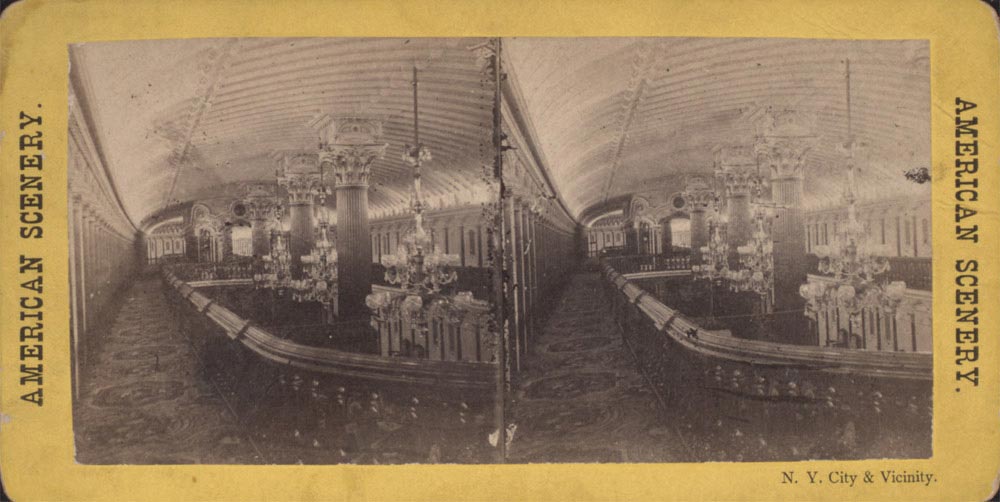
Interior view of a steamship
Still, the scene was set and with constantly improving technology it would only be a matter of time before steam-powered engines replaced sails universally.
The most important thing was that a regularly scheduled transatlantic crossing was fast becoming a reality; the Old and New Worlds were being connected on a scale that just a century earlier would have been unimaginable.
One of the most famous – or infamous – ships of this age was the aptly named RMS Titanic, the colossal passenger liner which struck an iceberg in the North Atlantic in 1912 on her maiden voyage to America, and crashed onto the ocean floor soon after. More than two thirds of the 2,224 souls on board perished in the freezing waters.
The Titanic, like many of the great ships of the time, was more than just a vessel: it symbolised a new life in a new world. The late 19th and early 20th centuries saw millions of people from Europe emigrate to the United States – the New World – in search of a better life, something that became known as the American Dream.
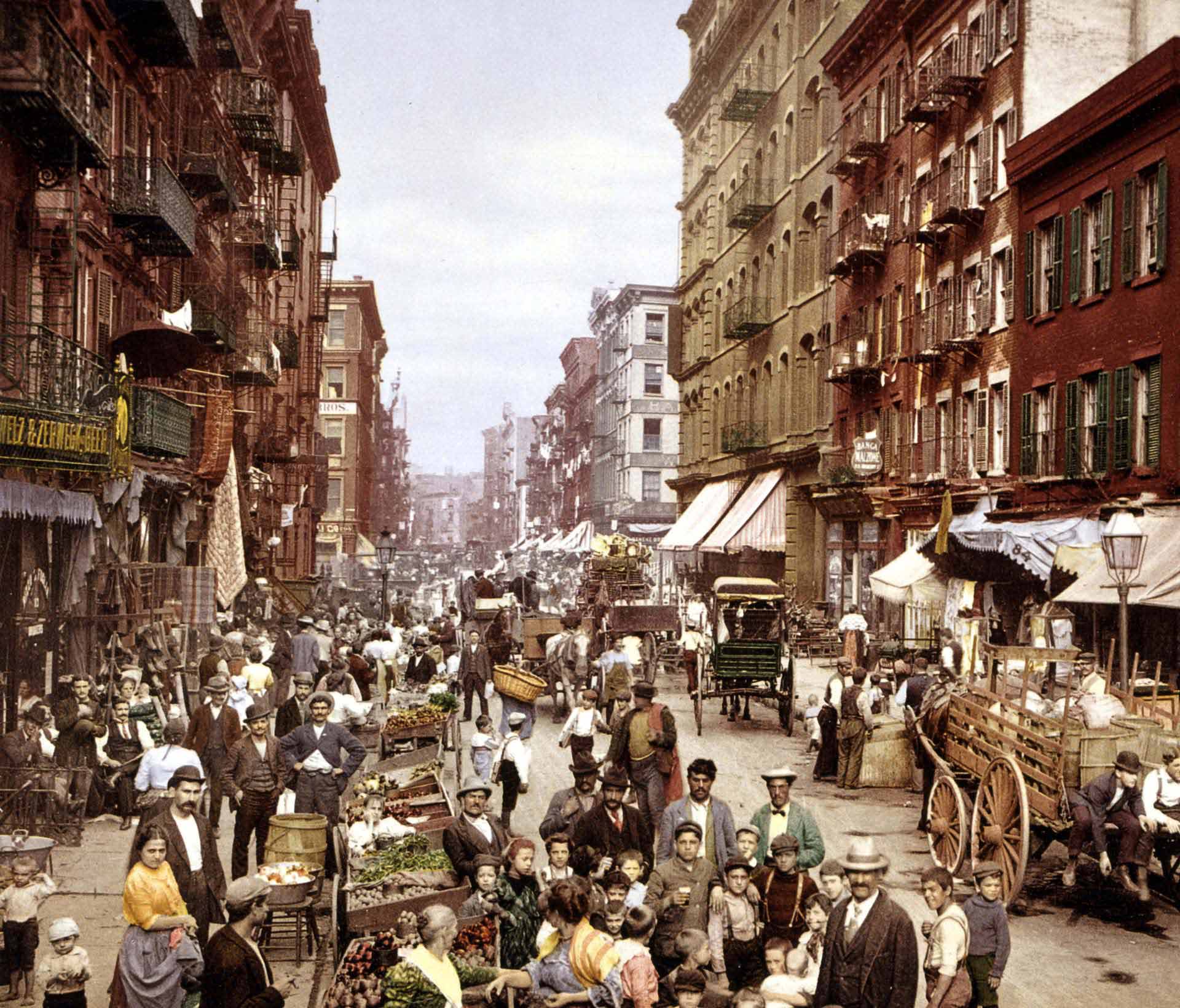
Soaring the Skies
A new era of travel takes off.

The Wright Bros. in 1876
One evening in 1878 in the town of Richmond, Indiana, USA, a father brought home a toy for his two young sons, Orville and Wilbur. The toy was made from paper, bamboo and cork, and resembled what we might recognise today as a basic helicopter.
The father threw the toy into the air and, speaking many years later, the brothers recalled: “Instead of falling to the floor, as we expected, it flew across the room till it struck the ceiling, where it fluttered awhile, and finally sank to the floor.”
Orville and Wilbur – better known today as the Wright Brothers – were utterly entranced by this thing. They played with the toy relentlessly and when it broke, instead of pestering their father for a replacement they just built a new one.
The boys turned into men and as they grew bigger and stronger so did their homemade toys, and a week before Christmas Day in 1903 they completed the first ever heavier-than-air human flight in their newly invented flying machine. It lasted 12 seconds, reached an altitude of ten feet and covered a distance of 37 metres.
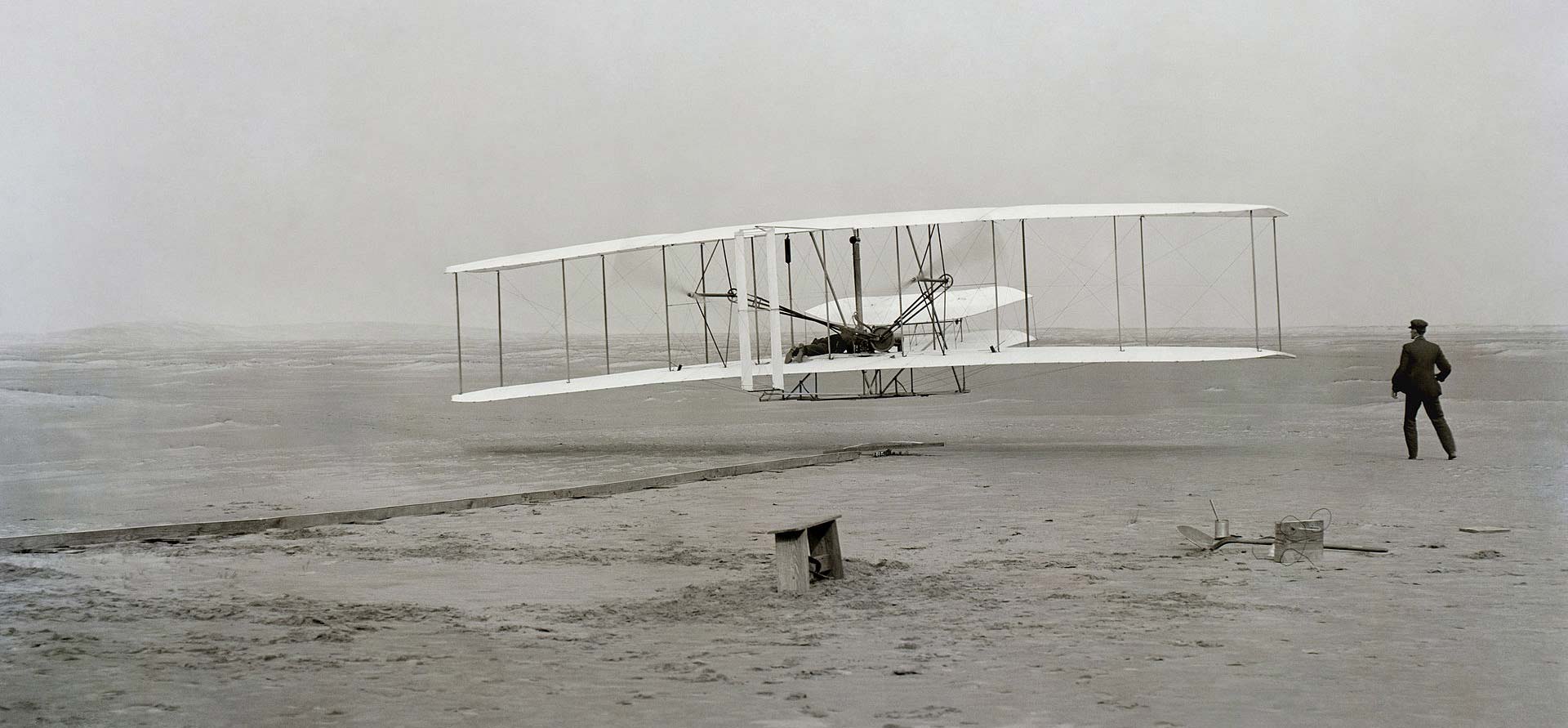
First successful flight of the Wright Flyer I, 1903
The heavier-than-air point is important. For thousands of years humans have been launching themselves into the skies using gliding contraptions with varying degrees of success. But what the Wright Brothers had achieved was to invent something which actually powered through the air rather than simply resting on its currents.
It was a remarkable technological breakthrough, one which is still being fervently honed and improved to this day, though its basic principles remain the same. Humans had found a way to travel across land, they’d found a way to travel across water, and now they had found a way to travel through the air.
The first half of the 20th century was marked by two world wars, and the military potential of planes was lost on no one. This led to flying technology and the production of aeroplanes accelerating at a blistering pace, and by the end of the Second World War there was a surplus of disused military aircraft.
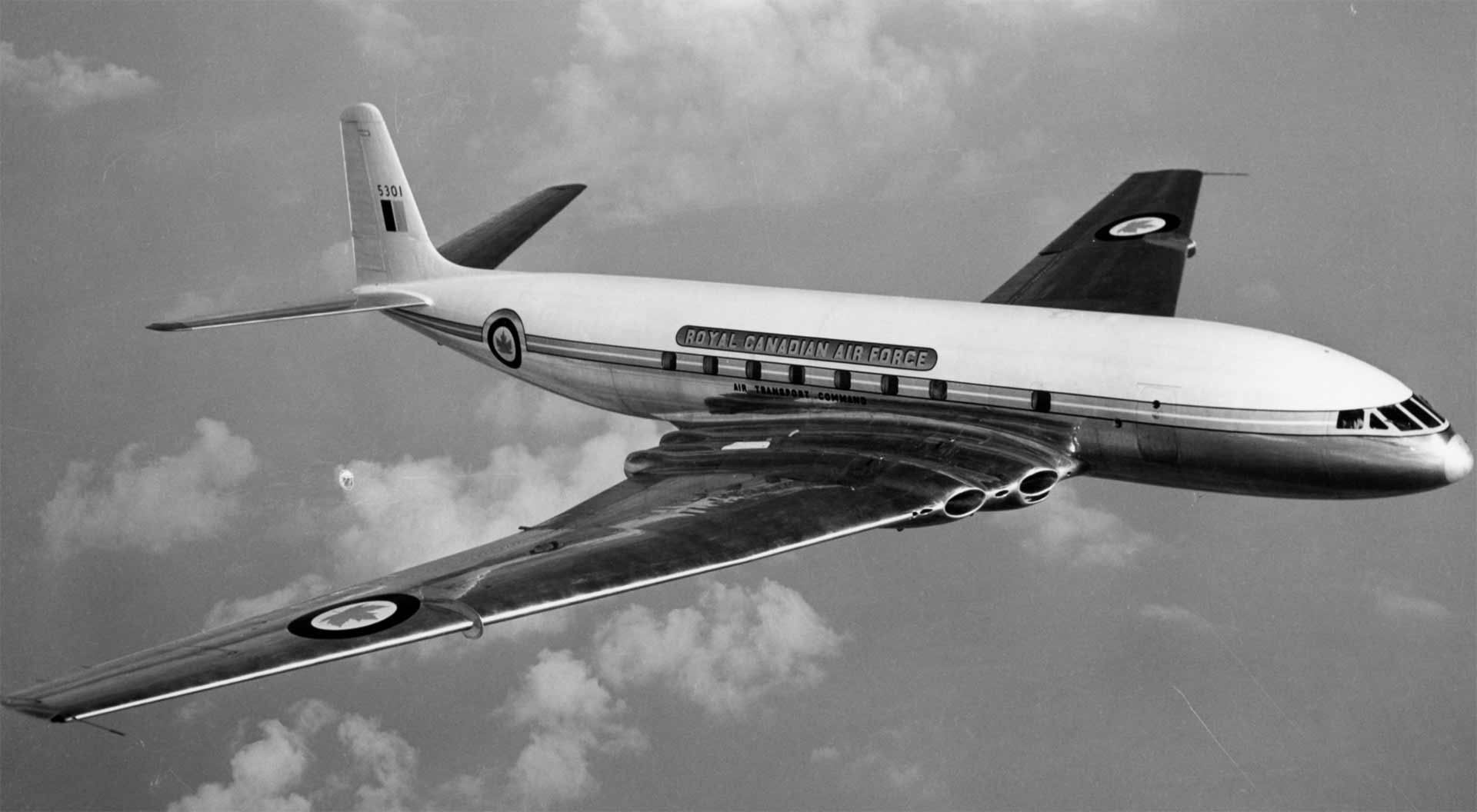
De Havilland Comet Aircraft
The larger bombers were converted into commercial aircraft, which started a whole new industry, and soon planes for the first time were being built solely to transport passengers en masse.
The first was the de Havilland DH 106 Comet, which was developed in Hertfordshire in the UK, and launched its commercial service in 1952. Alas, the design was flawed, and after several planes breaking up mid-flight the service was retracted.
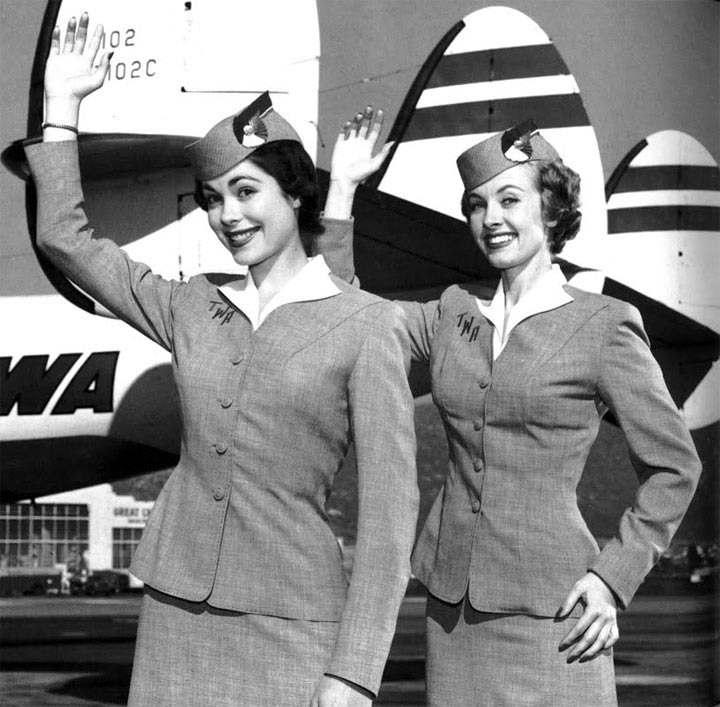
1950s air hostesses
Although the Comet was brought back into service after some much-needed adjustments, it would be a company called Boeing that saw enduring success with its commercial aircraft. Boeing was already well-established as a plane manufacturer, having developed a name for itself making military aircraft during World War II.
When the war ended Boeing turned its attention to passenger aircraft and in 1958, barely half a century since the Wright Brothers’ first tentative flight, launched its 707 model. One of the routes the new jet flew was New York to London, and 1958 was the first year that more passengers travelled to and from America by air than by ship.
A new era of travel had begun. Our era.
The desire to fly is an idea handed down to us by our ancestors who looked enviously on the birds soaring freely through space on the infinite highway of the air. Wilbur Wright
H i p p i e s & H o l i d a y s
Entering a revolutionary era.
As you may remember, the first circumnavigation of the planet – an expedition led by Ferdinand Magellan – took three years. You can now do it in less than three days.
The jumbo jet has turned the world into a village. And it’s becoming ever-more affordable to visit. Nowadays it’s not unusual to pick up flights that come in cheaper than the train ticket to the airport. Overseas holidays are now part of mainstream culture – at least for those lucky enough to have been born in one of the world’s wealthy countries – and as noted earlier, tourism is the fasted growing industry in the world.
Plane travel wasn’t always affordable. That’s a relatively new development. Back in the 1950s, when commercial air travel was just taking off, it was prohibitively expensive for most.
Despite this, the late '50s through to the '70s marked a golden period in the age of travel, a period which was the precursor to today’s gap years. In a domestic sense, the emergence of the personal automobile gave enormous freedom at home, and in an international sense, bus travel became very popular.
Life is a journey. It revolves around the decisions you take, the experiences you have on the way, and the reflections you make on what you’ve achieved. Tom Griffiths
Young backpackers from Europe and America began travelling overland from Europe to the Indian subcontinent on what quickly became known as the Hippy Trail.
Most began in London or Amsterdam, travelled east via Greece to Turkey, continued through Iran, Afghanistan and Pakistan, before ending up in Goa, India or Kathmandu, Nepal, and in some cases, right down to Thailand.
Some were seeking spiritual enlightenment, some were keen to sample as much hashish as possible, some simply wanted an adventure, but all had one thing in common: a desire to be on the move for as long and as cheaply as possible.
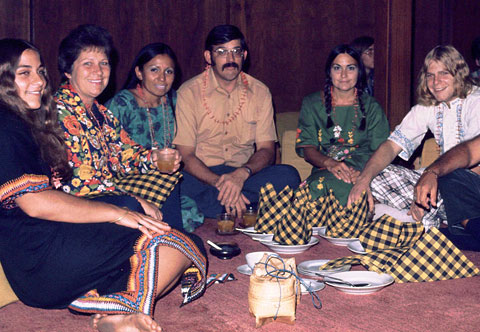
Hippies in Thailand
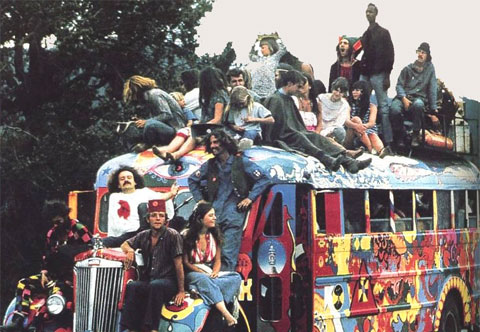
Travelling the hippie trail
Due to its cost, flying was out the question, so the only option was to travel overland. Companies quickly sprung up to cater for these young intrepids.
One of these companies was started by a young Australian called Graham ‘Skroo’ Turner, who while working in the northeast of England purchased an old double decker bus and decided to drive to Morocco in it – as you do. The seats quickly sold and off they went. Turner would go on to drive all the way to Kathmandu, and his first company, Top Deck Travel, was born. The young entrepreneur went on to form Flight Centre, which today is one of the world’s biggest and most successful travel companies.
Although the steadily dropping price of flying meant many began to opt for that form of transport, overland journeys remained popular, and other companies sprung up in the wake of Top Deck, including Dragoman in 1981 and Oasis Overland in 1997.
Early Dragoman bus tour
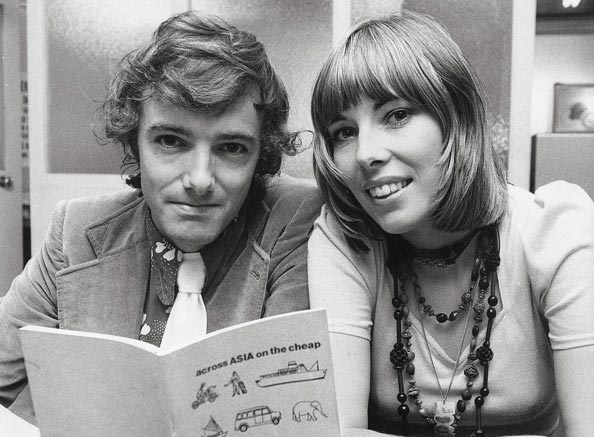
Tony & Maureen Wheeler
In the same year that Turner bought his bus, Tony Wheeler and his girlfriend Maureen headed out to Asia on the Hippy Trail and decided to write a guidebook for others following in their footsteps.
They called their guide Asia on the Cheap , and it would be the first book published under the newly-formed Lonely Planet, which today is the largest travel guide publisher in the world.
Travel guide books remain an essential item for many travellers on the road, but with the digital age there had to be an online space for backpackers, too.
The first to realise this were Tom Griffiths and Peter Pedrick, and in 1998 they founded gapyear.com. For the first time there was a platform that not only gave essential advice for those planning a gap year, but also provided a place for backpackers to connect with each other digitally.
The Final Frontiers
Extremities of the planet and beyond, pushing the boundaries.
There are many limits within our world, but one thing which knows no bounds is our collective curiosity.
Our destiny as a race is to explore, to travel, to turn over every rock in our universe. The great voyages of the Age of Discovery marked a golden age for travel, and inspired the confidence needed to keep going.
The world had begun to take shape on our maps and in our minds, but enormous blank spaces remained. Victorian explorers like David Livingstone and Henry Morton Stanley delved into the wild, uncharted heart of the African continent, while explorers like Robert Burke and William Wills traipsed across the burnt, bewildering vastness of the Australian Outback.
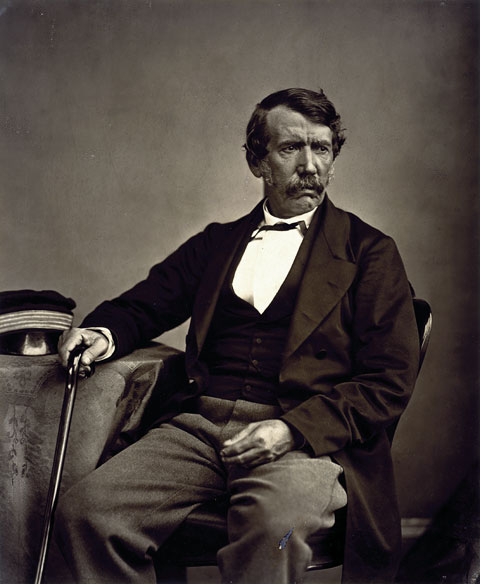
Portrait of David Livingstone
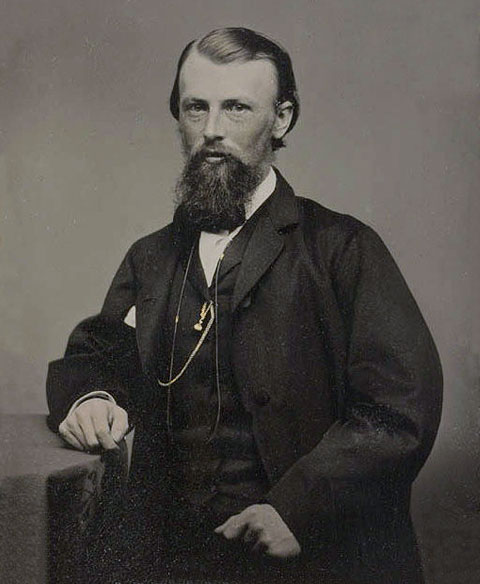
Portrait of William Wills
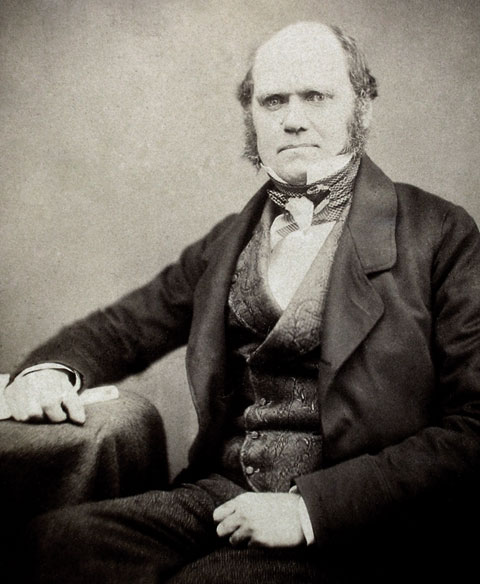
Portrait of Charles Darwin
In 1831 a young naturalist called Charles Darwin set off on a five year circumnavigation of the planet, during which time he would become entranced by the world’s geology and biology, and many years later reveal his theory of evolution by natural selection.
The last century has seen the world’s attention drawn towards the extremities of the planet; the deepest oceans, the highest mountains, the bitter polar regions. And eventually beyond our watery little world, into Space itself.
Poles Apart
To the ends of the earth.
The polar regions of our planet caught the attention of explorers in the late 19th and early 20th centuries, a period when navigational and transport aids were becoming sophisticated enough to offer a glimmer of a chance against the ferociously harsh elements that characterise the North and South poles.
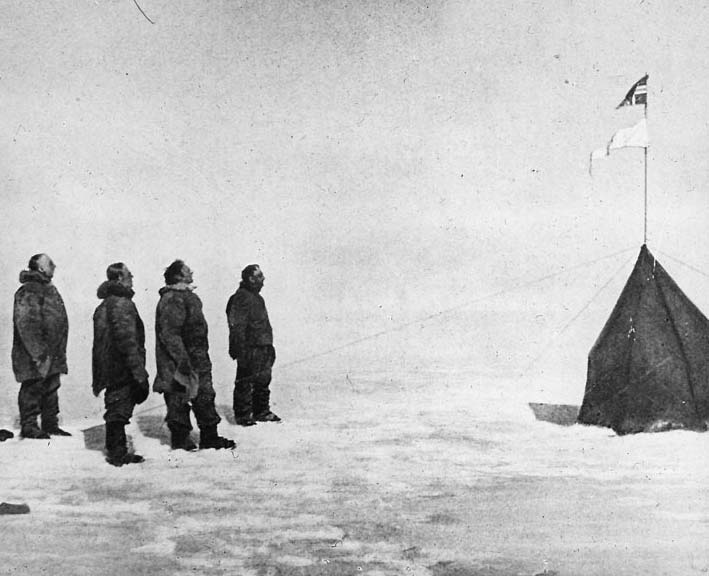
Roald Amundsen reaches the South Pole, 1911
Since as early as the 1500s explorers had been trying to discover the Northwest Passage, a sea route which linked the Atlantic and Pacific oceans via the Arctic Ocean, but it wouldn’t be until 1903 that a Norwegian called Roald Amundsen was able to fully navigate the treacherous route.
Amundsen was prolific. His Northwest Passage expedition alone was enough to secure him legendary status as an explorer, but incredibly he would also go on to be the first man to reach both the South Pole, in 1911, and the North Pole, in 1926.
Portrait of Roald Amundsen
History rarely remembers those who came second, but a special mention should be afforded for Robert Falcon Scott, a British explorer who led an expedition which was trying to reach the South Pole before Amundsen.
When they arrived on 17 January, 1912, they discovered to their crushing dismay Amundsen’s team had won the race by 34 days and already departed.
Scott and his men began the gruelling return journey but were never seen alive again: their frozen, emaciated bodies were discovered in a tent ten months later.
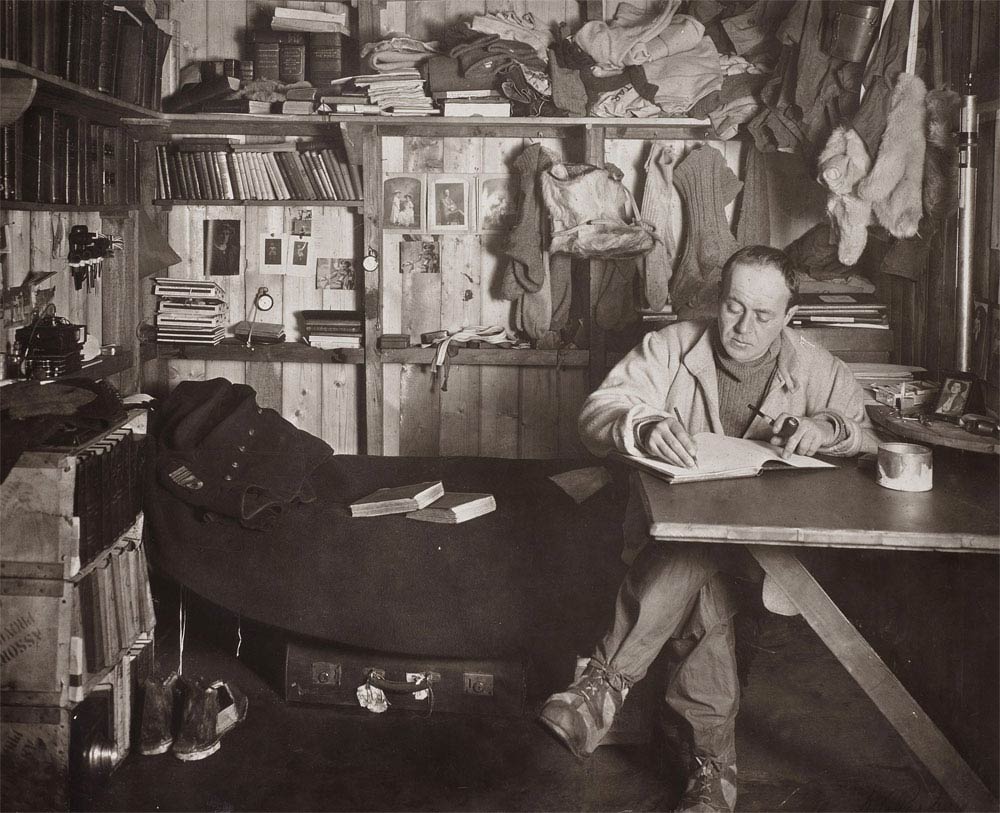
Robert Falcon Scott in his Cape Evans hut, 1911
Amazingly, almost half a century would pass before humans once again reached the South Pole overland, an achievement which came in the form of the Commonwealth Trans-Antarctic Expedition. One of the members of this team was one Edmund Hillary, who had secured his place in world history five years before when he summited a certain mountain in the Himalayas.
The group, which comprised a team of New Zealanders, led by Hillary, and British, led by Dr Vivian Fuchs, not only reached the South Pole, but also became the first to traverse the continent of Antarctica overland. This accomplishment would not be repeated until 1981, when Ranulph Fiennes and his Transglobe Expedition became the first to make an overland circumpolar navigation of the planet.
Mountains High
On top of the world.
The conditions at the top of Everest, the highest mountain in the world, read like a weather forecast from an alien planet: 200mph winds, brutally cold temperatures, a disquieting deficiency of breathable oxygen.
In 1953 Edmund Hillary became the first man to summit the peak, along with Nepalese Sherpa Tenzing Norgay.
Unlike many of the great explorers discussed in this history of travel, Hillary wasn’t in search of trading routes, religious sites, a new place to live, fame and fortune, conquest or science; he simply climbed it because it was there. Which is as good a reason as any.

Mount Everest

Edmund Hillary and Tenzing Norgay
He would later say: “If someone starts out on a challenging activity, completely confident they’re going to succeed, why bother starting? It’s not much of a challenge.”
Hillary certainly had no guarantees of success, and few could deny the enormity of his challenge. Although his climbing gear was clearly adequate for him, it was thoroughly rudimentary compared to today’s standard of equipment. Even now, for every 10 people who successfully summit Everest, one person dies.
What makes Everest so incredibly dangerous is not so much the mountain itself – technically speaking, the terrain is fairly straightforward for experienced mountaineers – rather the extreme conditions in which its peak resides.
The portion of the mountain which is over 8,000 metres high is known as the Death Zone, due to the extreme temperatures and lack of breathable oxygen. This is so debilitating on the human body that the final mile to the summit usually takes climbers – typically people at the very peak of physical fitness – anything up to 12 hours to trudge. Frozen corpses are an eerily common sight in the Death Zone of Mount Everest.
Oceans Deep
To the depths of the abyss.
The deepest ocean on our planet is the Pacific, and the deepest part of the deepest ocean is the Mariana Trench, the floor of which sits almost seven miles beneath the surface. For context, that’s about the same distance a commercial airliner at maximum cruising altitude flies from the ground. More than 6,500 ft higher than Mount Everest.
The first people to fully descend into the abyss – all 35,797 ft of it – were Jacques Piccard and Don Walsh on 23 January, 1960. Piccard was a Swiss oceanographer and engineer, and Walsh was a US Navy Lieutenant.

Jacques Piccard and Don Walsh in their submersible
The bravery of Piccard and Walsh can scarcely be emphasised enough. The deepest point of the deepest ocean is – as far as humans are concerned – one of the most inhospitable places on our planet.
The weight of the water at that depth is scarcely comprehendible: for every square inch there are eight tons of pressure. If their submarine – it was called the Trieste – were to succumb to the immense forces bearing down upon it, the result would have been catastrophic.
At the 30,000 feet mark, one of the outer window panes on the vessel cracked, causing the vessel to shudder violently. This meant there was just a single pane of glass between the men and instant death thought, unaware of the damage, they decided to press on and continue their descent regardless.
Almost five hours after beginning their journey, Piccard and Walsh touched down on the primordial ooze that covers the floor of the Mariana Trench. Once there, they discovered the crack in the outer window pane, which meant they only spent 20 minutes at the bottom before heading back up.
Amazingly, before this feat, not even an unmanned vessel had reached the bottom of the Mariana Trench. When asked many years later why he didn’t just send a robot down there, Don Walsh said: “You gotta be there because that’s what we do.”
Beckoning Universe
Dipping our toes in the cosmic ocean.
And so to space, where with a big bang it all began.
Try to imagine the almost infinite nature of space and your mind will probably begin to flounder. Perhaps this is because everything on Earth, everything we have ever known, is finite, and our brains simply cannot comprehend anything but.
All life is finite, be it the life coursing through the wings of a gnat, the roots of a great oak or the arteries of a human heart. All inanimate objects are finite, even mountains, which rise and fall like great waves on the sea of time.
The Earth itself is finite: it once didn’t exist and there will be a time when it once more ceases to exist.
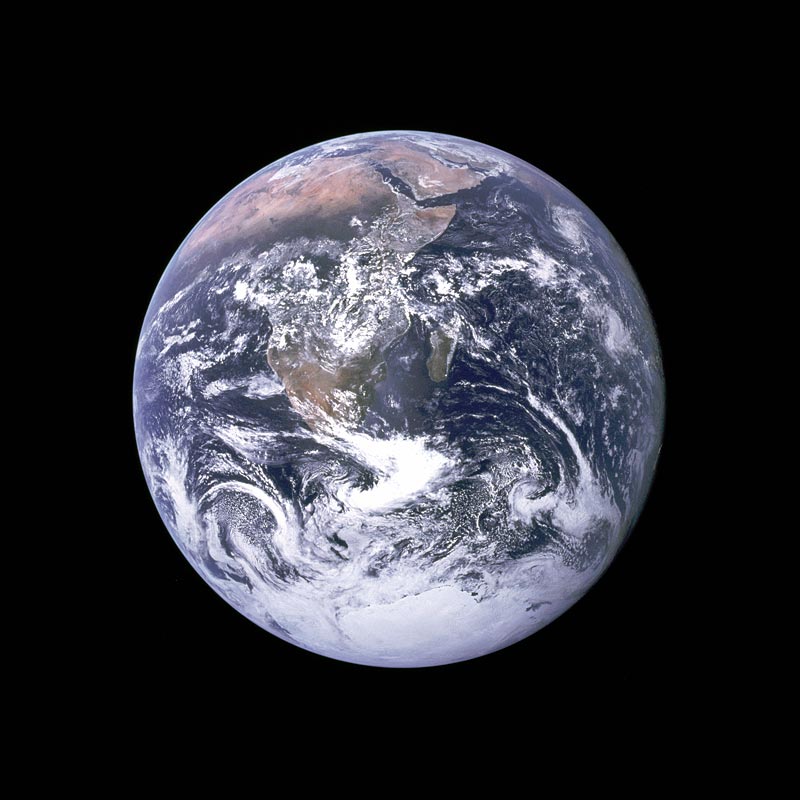
The Blue Marble, 1972
All travel on Earth is finite, too, owing to the very spherical nature of our little marble: move in any direction for long enough and you will eventually end up back where you started.
It took a long time, many thousands of years, to explore the lump of rock upon which we live, to find its limits, and our own in the process, but that is just the beginning of the history of travel.
The next age of discovery, an age which has already begun, will take place in space, and like space, will not be finite, but infinite.
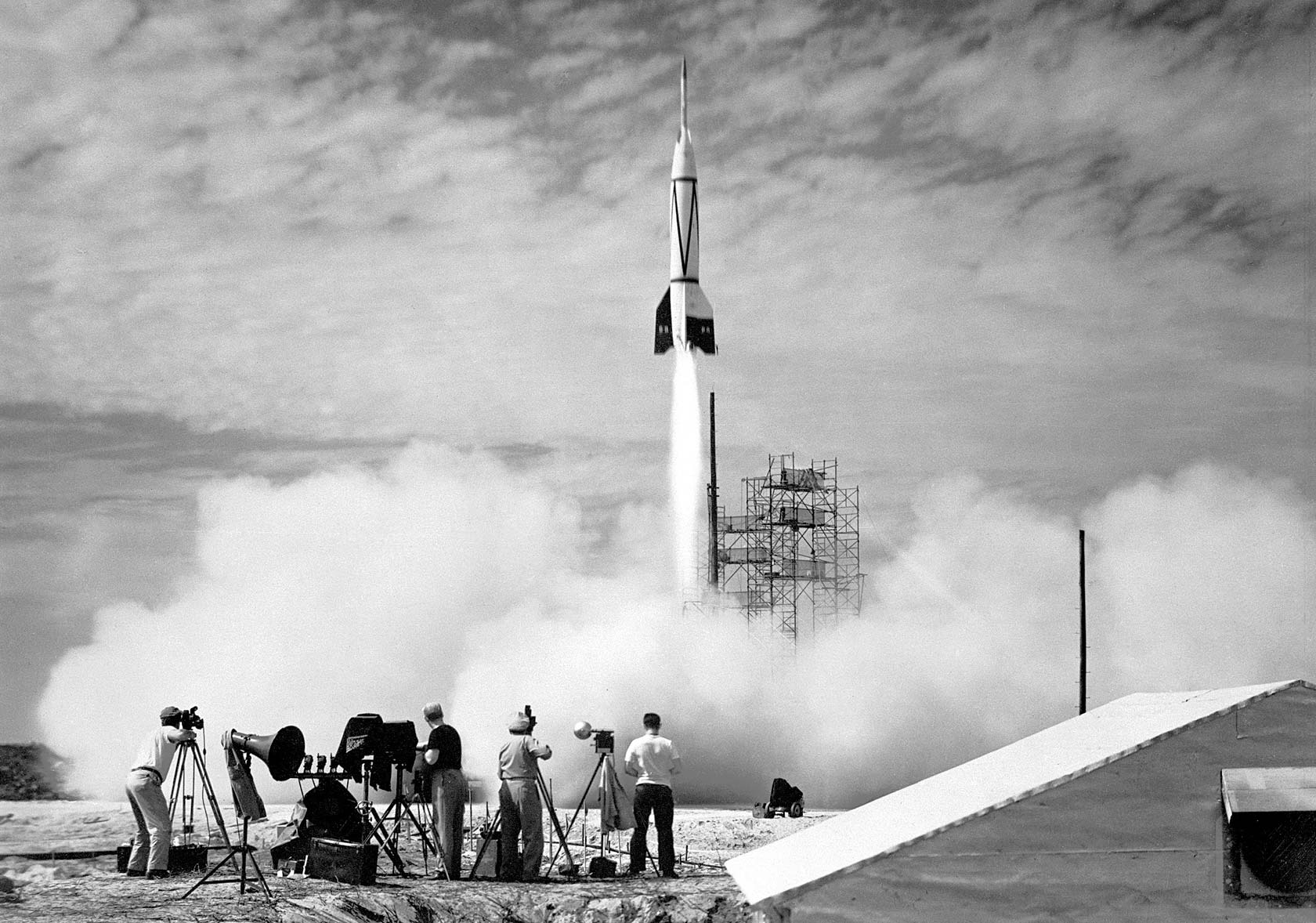
V-2 Rocket Launch
Tentative steps have been taken in the last few decades and, in a similar vein of irony to plane technology, some of the greatest creative advances have been inspired by the destructive urges spawned by war, both literal, in the case of World War 2, and ideological, in the case of the Cold War.
In 1942, at the height of the Second World War, Germany launched a successful test flight of the world’s first ballistic missile. It was called the V-2 rocket and, apart from being devastatingly destructive, these missiles were famous for being the first objects created by man to reach space. To the enduring dismay of the Allies, they would depart back to Earth soon after. But a technogical milestone had been achieved.
The Forefathers of Space Travel
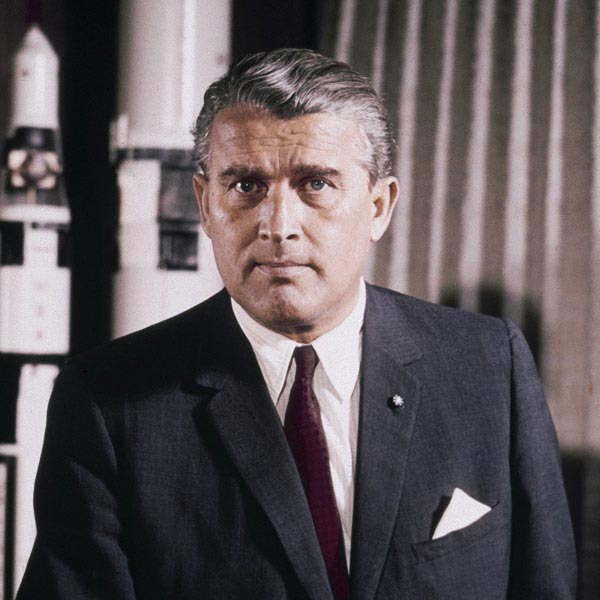
Wernher von Braun
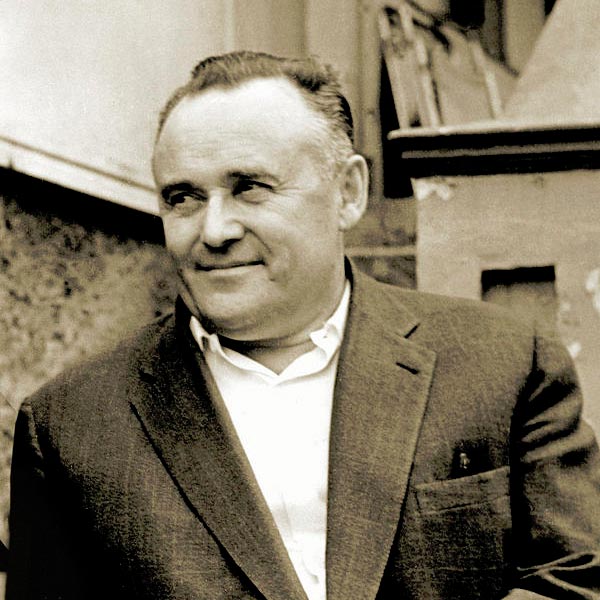
Sergei Korolev

US cut-away of the V-2
Even in an age when technology seems to advance at approximately the same speed as light, the idea of a human kicking up clouds of dust on the moon is still scarcely plausible. Perhaps this is because almost half a century has passed since the last moon landing (there have been six, though we only ever hear about one) or perhaps it’s because it really was such a giant leap for mankind.
Neil Armstrong, as you no doubt know, was the man who, while taking a small step, coined that phrase. The pressure of saying something clever to the world’s population at the precise moment of summiting the pinnacle of human achievement must have been immense.
We choose to go to the moon in this decade and do the other things, not because they are easy, but because they are hard. John F. Kennedy
The year was 1969, and the Cold War – the struggle for ideological supremacy between the USA and USSR, the super powers of the world – was in a state of permafrost.
Since the end of the Second World War a deep mistrust had grown like a cancer between the two nations, and they became embroiled in an endless game of one-upmanship, which had implications – potentially disastrous – for the entire planet. Though they inadvertently fought one another on foreign battle grounds, this war was mostly psychological; a battle of ideas and minds which often manifested itself in technological breakthroughs, and nowhere was this more pronounced than in space exploration.
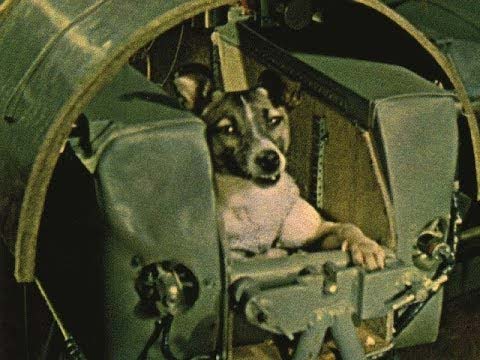
Until the 1969 moon landing, the Soviets had pipped the Americans to the post for most of the major milestones, leading the way in a space race they later claimed not to be part of.
In 1957 they launched Sputnik 1, which became the first ever satellite to orbit the Earth. Later that year they launched the first animal into orbit – Laika the dog – on board Sputnik 2.
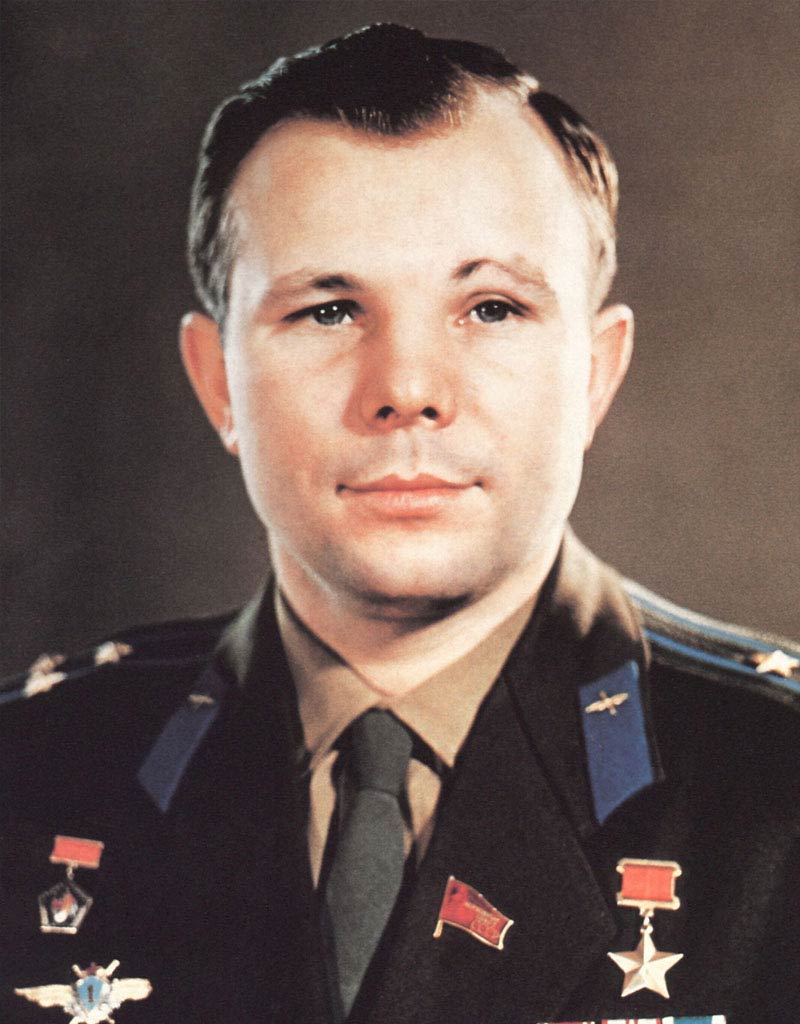
Yuri Gagarin

Valentina Tereshkova
In 1959 they launched Luna 2, which became the first manmade object to land on (or, to be more accurate, crash into) the moon. In 1961 the Soviets achieved the first human spaceflight; Yuri Gagarin orbited the Earth and returned safely, and a national hero. He was followed in 1963 by Valentina Tereshkova, the first woman in space, and in 1965 Alexey Leonov would become the first human to exit a spacecraft and conduct a spacewalk. He was to be the first of many.
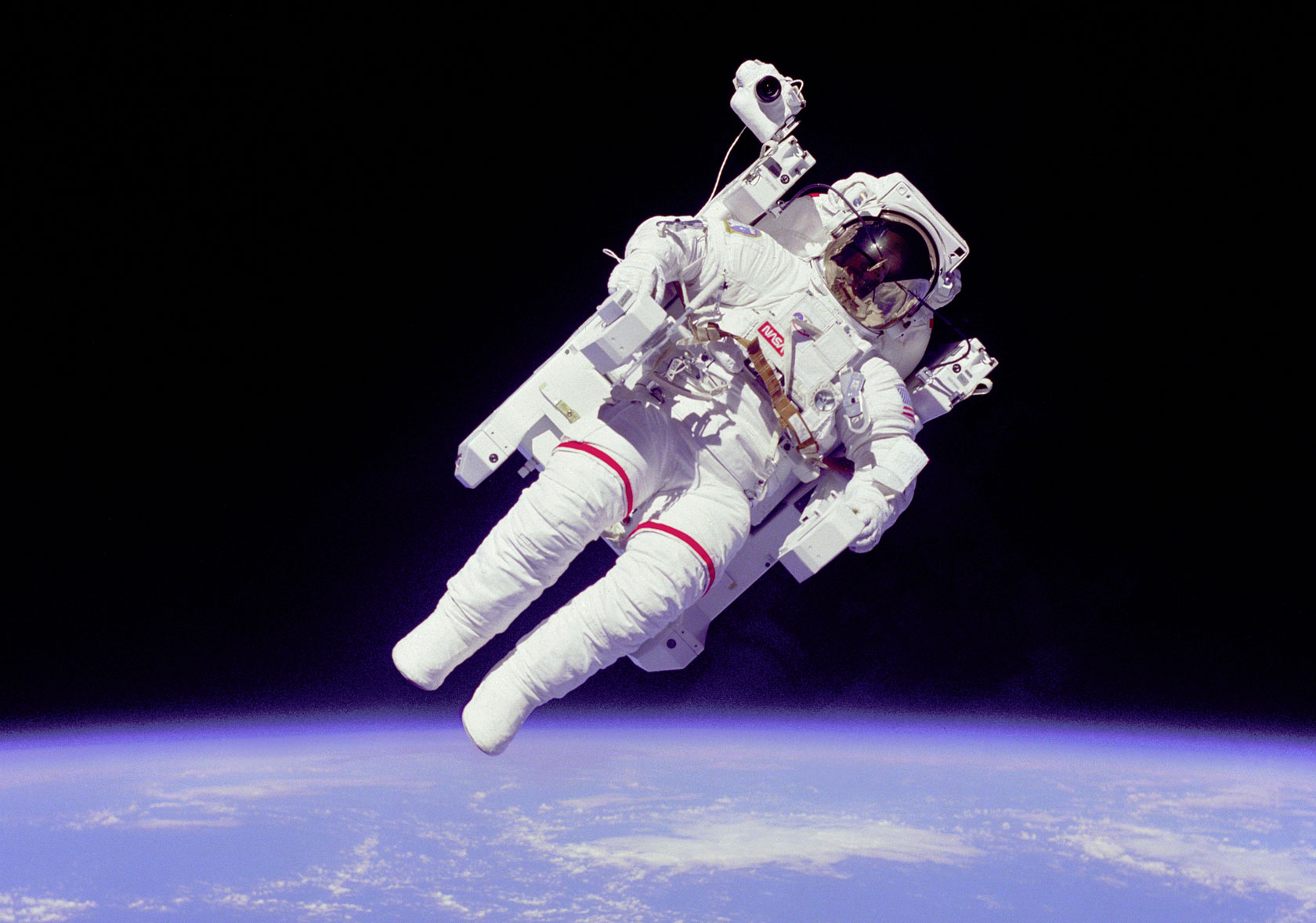
US astronaut Bruce McCandless on a spacewalk
After the USA had seized the ultimate prize – a man on the moon – the Space Race quickly declined, and the major exploratory advances in the last few decades have been made by robots.
There are many manmade probes cruising through space as you read this, but by far the farthest is NASA's Voyager 1 space probe.
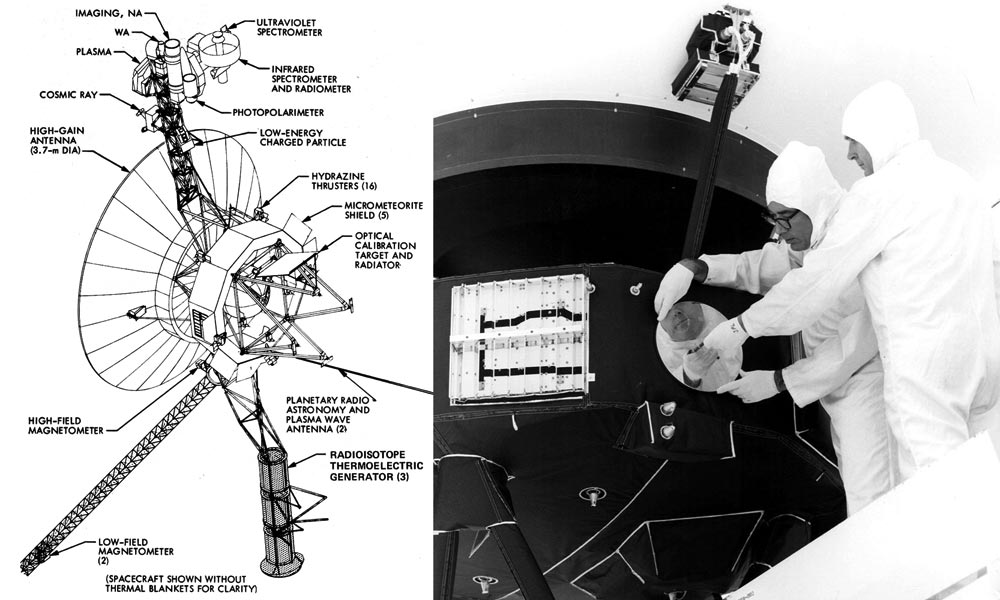
The planning and preparation of Voyager 1
The first Voyager probe was launched by the USA in 1977 and certainly lives up to its name: at the time of writing it is approximately 12 billion miles from the Sun, yet it has barely left the starting blocks on its vast journey to explore other star systems.
After 40,000 years of travelling through interstellar space, it will pass close to it's first star, Gliese 445, before continuing on it's epic journey through the Milky Way galaxy, at a speed of around 17 kilometers a second.

The Pale Blue Dot
The Pale Blue Dot is a photograph of Planet Earth, taken by Voyager 1, from 3.7 billion miles away, through the rings of Saturn, at the request of Carl Sagan. He reflected:
That's here. That's home. That's us. On it everyone you love, everyone you know, everyone you ever heard of, every human being who ever was, lived out their lives. The aggregate of our joy and suffering, thousands of confident religions, ideologies, and economic doctrines, every hunter and forager, every hero and coward, every creator and destroyer of civilization, every king and peasant, every young couple in love, every mother and father, hopeful child, inventor and explorer, every teacher of morals, every corrupt politician, every 'superstar,' every 'supreme leader,' every saint and sinner in the history of our species lived there - on a mote of dust suspended in a sunbeam.
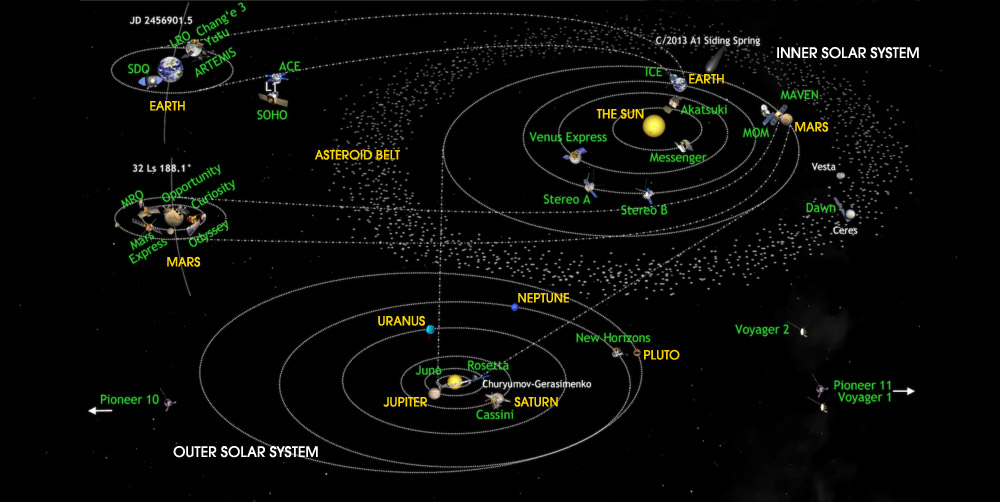
Diagram showing humanity's active space probes
A little closer to home – 350,000,000 miles, to be approximate – the Mars rover Curiosity has been diligently scouting out the Red Planet, which in all likelihood will one day be inhabited by humans (providing the species doesn’t obliterate itself first, of course), or at least play host to an intergalactic service station.

NASA's Mars Curiosity Rover Takes a Selfie
Most recently, the European Space Agency's extraordinary Rosetta mission saw a spacecraft land on the comet 67P/Churyumov-Gerasimenko, which is hurtling through space at 24,600 miles an hour. Mission manager Dr Fred Jansen described the final stage of the multi-million-mile journey as the equivalent of transferring one object from a speeding bullet to another.
The ESA mission is aptly named after the Rosetta Stone, an enormous, engraved slab of rock, and one of the greatest archaeological treasures ever discovered: it effectively translated what had been undecipherable Egyptian hieroglyphs, in the process completely revolutionising our understanding of the past.

ESA Mission Control in Darmstadt, Germany
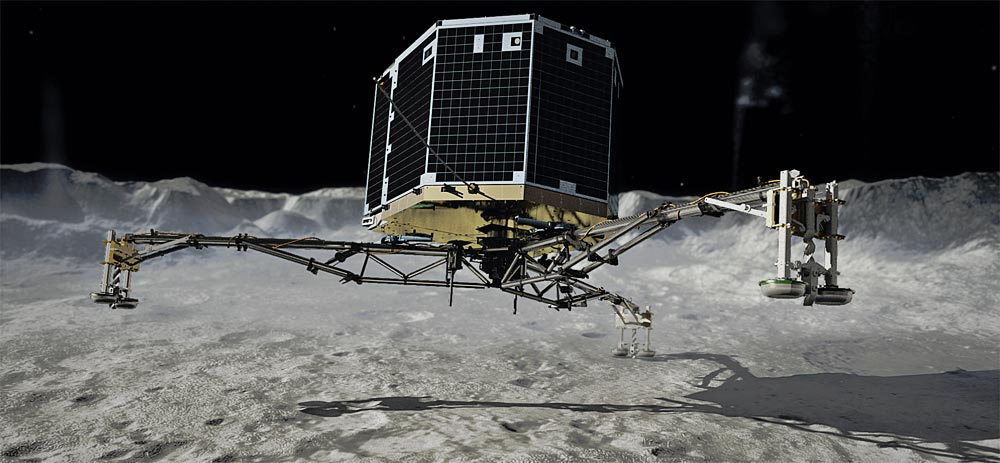
Artist's impression of the Philae landing
It is hoped that the Rosetta mission will provide something similar, except on a much grander scale. It is assumed that a comet probably provided Earth with its water, and possibly seeded life itself, meaning the information gained from the mission could answer the greatest mystery we have ever faced: the very nature of our existence.
Until now, space travel has only been available to trained astronauts. The next few decades, however, will see more and more people, beginning with the super-rich and gradually trickling down to the everyman, experience what it is to travel above the Earth’s atmosphere. One company striving to achieve this is Virgin Galactic, whose purpose is to “become the spaceline for Earth, democratising access to space for the benefit of life on Earth.”
The Future of Travel
Opening a window to the global village.
If you are reading this history of travel you have at least two things: a screen and an Internet connection. Your screen – you probably have more than one – is your window on the world, and you probably spend a significant portion of your waking life peering into it, and you’ve probably noticed that the view is getting better by the day.
The Internet has not so much touched the travel industry as it has hoisted it up, twirled it around, spun it upside down, and played bongos on its head. Inventions like the railroad and the aeroplane may have found a way over the physical barriers of travel, but the Internet simply transcended them. Never has our world been so instantly accessible, available and connected.
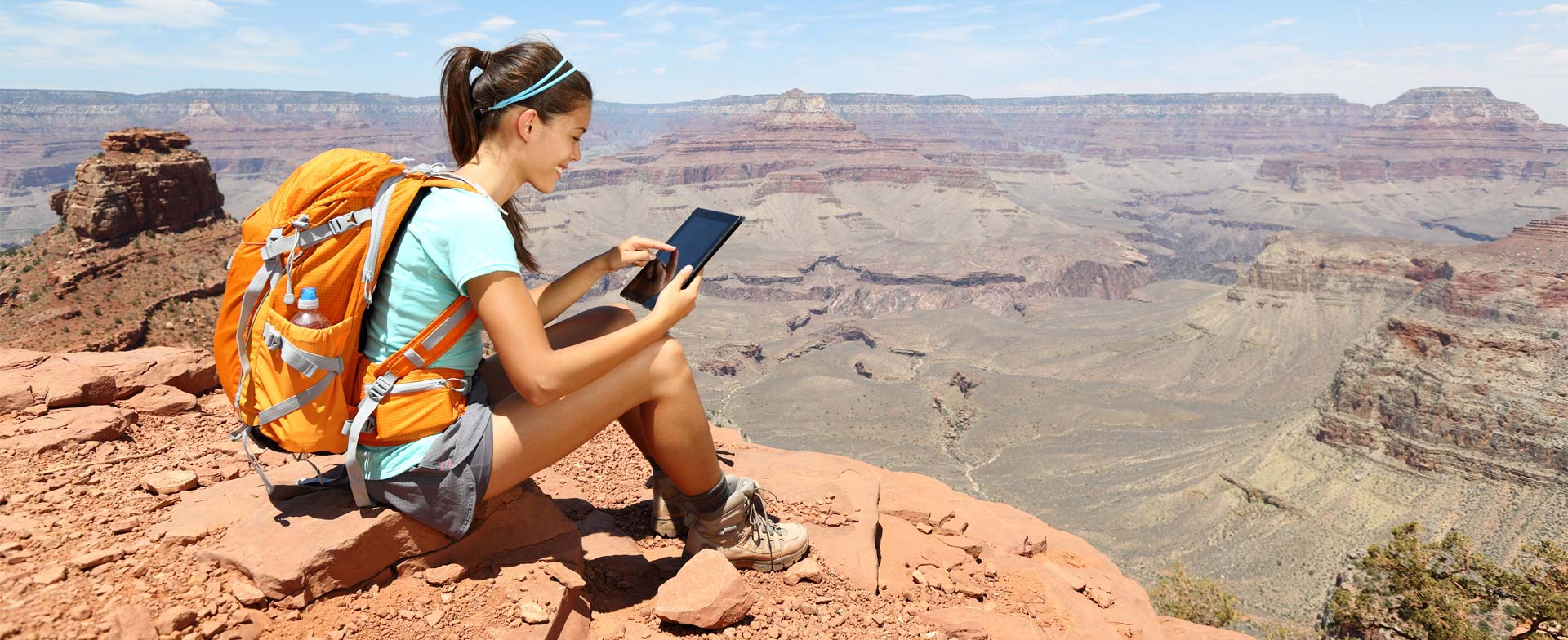
And yet for all this, it is more important than ever that we continue to travel. Our windows into the world are useful enough, but they give mere inklings of the real thing. Travel should be gregarious, not vicarious; technology should be used to enhance, not replace, our experiences.
We have come a long way. A very long way. Our fidgety, irrepressible impulse to move, to discover and cross new frontiers, to adapt to new environments, to appease that same unquenchable curiosity which prompted our earliest ancestors to swing down from the treetops and start exploring the jungle floor six million years ago, is as strong as ever.
And the only way to indulge it is to continue to travel.
- eTravel.com
- Car Rentals
- Travel Inspiration
- Write For Us

What is Heritage (Historical) Tourism?
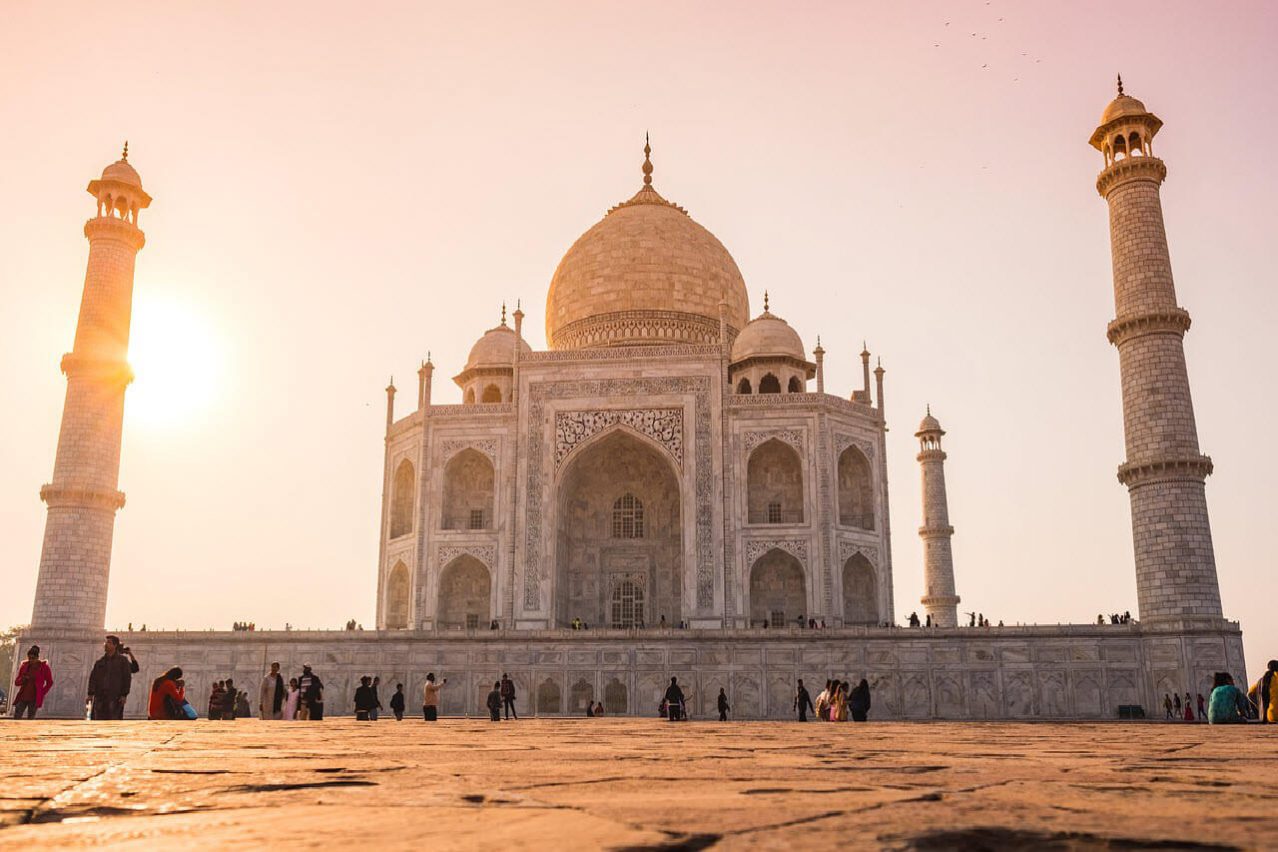
What is Heritage tourism?
Countries famous for historical tourism.

Category: Travel Industry
Save my name, email, and website in this browser for the next time I comment.
Get the best deals and helpful tips from eTravel.com
Travel History: Definition, Importance and How to Make Travel HistoryTravel History
These days everyone is searching about what is travel history, its importance and how can we make a good travel history, which can help us to get visa approval for USA, Canada or other high profile countries.
These days visa refusal rate of USA, Canada, and other developed countries are high. Some people get visa refusal due to lack of travel history. If you don’t have a good travel history or your passport is new and blank, then there is an excellent chance to get visa refusal. Here you know all about travel history in this article. Let’s start!
What is Travel History?
Travel history is a track record of a traveler/visitor past visits to outside of their home country. Whenever someone visits into a foreign country than he /she got an immigration stamp or a visa stamp on their passport, this records of stamps on the passport is called travel history. Travel history tells about all the recent visits of passport holder such as where he/she travel or when he/she travel.
A good travel history helps a lot to get visa approvals for developed countries like as USA, Canada and, United Kingdom. Travel history is not an essential or required document/condition for obtaining a visa, but if you made a good travel history, then it can increase your chance of visa approval.
Why is Travel History Important?
Travel history is a record of your visits where you travel in the past. Every councilor or country wants to know where you travel in the past because they think if you come in their country directly without visiting another country than there is a chance that you don’t go back your country.
Why they feel so because this happened in 1980 when there were not strong visas law as compares to today, and mass no of people went to western countries on a tourist visa, and they don’t come back to their country. As a result, conditions of immigration crises arise. To control or anticipate this immigration crisis, they made strict visa norms and rules which followed these days.
Now they check travel history before granting a visa. A good travel history assured to councilor that you are a genuine tourist or travel or your sole purpose of traveling is not immigration. If you want to make a strong impression on the visa officer, then make a good travel history first.
How to Make Travel History?
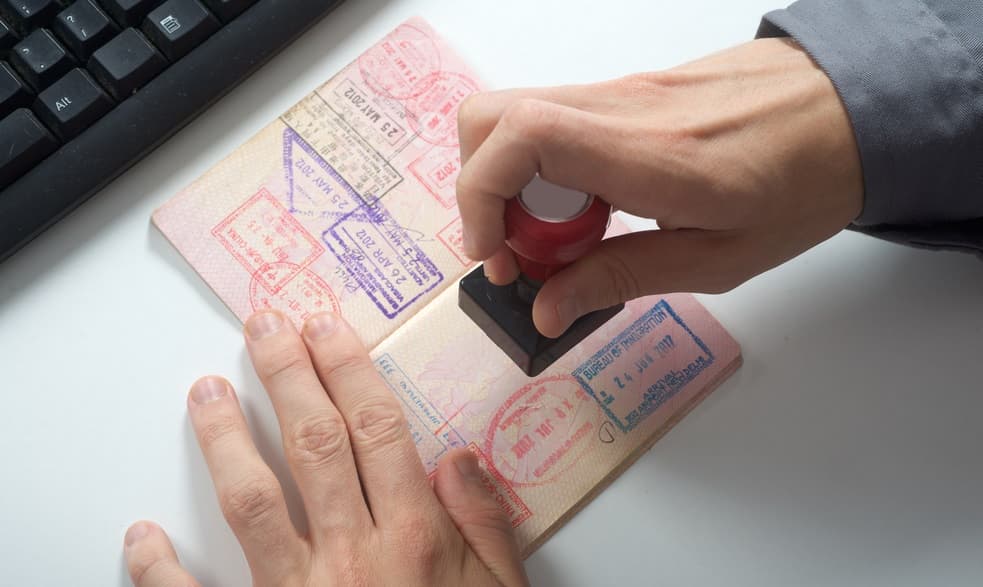
How can we create travel history and take care of some points which helps you to get the approval of visa? If you want to create travel history then starts with visa on arrival countries or E Visa countries. First, check the list of allowed countries which gives Visa on arrival or E Visa on your passport.
You can travel Mauritius, Seychelles, Cambodia, Philippines, Hong Kong. The benefits of visiting these countries are that you will enjoy here and also you will get an immigration stamp on your passport. The risk factor is zero.
Visiting five to six countries is suitable for creating a good travel history. If you visited these countries in a single trip than problems can arise. Make sure that you travel 1 or 2 countries in a single tour . Take a gap of 1 month or 2 months between your trip because it gives a positive sign that you are a genuine traveler and you don’t visit these countries only for creating travel history.
If you are applying for highly developed countries like the USA, Canada, UK and you visited in Thailand, Sri Lanka then there is a chance that you don’t get approval. Travel some prominent countries like Hong Kong, China, Russia, Seychelles before applying for a visa because it gives a good impression that you are a genuine traveler. You can increase your visa rating by following these points, and these will helps you in getting visa approval.
How to Check Travel History?

Travel history is vital for getting visa approvals of various developed countries like the USA, UK, and Australia. Travel history is a track record of your international visits to a foreign country. Every year people change their old passport to a new passport and forget about their recent visits to the countries. New passports are blanks so there is a possibility that they can forget about their many foreign visits and proper dates of travel.
It is not possible to search into their travel archive for old plane tickets; travel itineraries to arrange travel history in a systematic way. Even worse, they also forget their visa is still valid or not to the specific countries and when they travel to this country. Don’t worry; you can check your travel history through online and offline.
If you have your old passport, then there are not any problems because whenever you enter or exit from a foreign country, you got an immigration stamp on your passports. You can track your travel history by the help of visa stamps and immigration stamps.
If you change your old passport to new and you don’t have your old passport, then you can also track down your USA travel history online. Go to this link https://i94.cbp.dhs.gov/I94/#/home . It is the official website of US Customs and Border Protection.
Click on Need a History of Your Arrivals & Departures. Fill your details like name, date of birth, or passport no. After that click on next and you will get your travel history details. Print these results for further reference.

IMAGES
VIDEO
COMMENTS
The origin of the word "travel" is most likely lost to history. The term "travel" may originate from the Old French word travail, which means 'work'. [2] According to the Merriam-Webster dictionary, the first known use of the word travel was in the 14th century. It also states that the word comes from Middle English travailen, travelen (which means to torment, labor, strive, journey) and ...
However, when in the 1840s, an extensive network of railways was built, people started to travel for fun. Mid-19th century definitely marks a real beginning of modern tourism. It's the time when the middle class started to grow. And they have found a way to travel easily around Europe. It's coming by no surprise that the first travel agency ...
tourism, the act and process of spending time away from home in pursuit of recreation, relaxation, and pleasure, while making use of the commercial provision of services. As such, tourism is a product of modern social arrangements, beginning in western Europe in the 17th century, although it has antecedents in Classical antiquity.
A Brief History of Travel and Tourism. Culture. Utilizing the widest definition of the word, human beings have been travelling since the dawn of time. No matter one's beliefs about the creation of humans, everyone can agree our species began in some single locale, likely Africa or the Middle East, and 'travelled' outwards, settling new lands.
In the last decades of the 19th century, the upper social classes in England were so wealthy due to the income from the British Empire that they were the first to be able to afford trips to far-flung areas. (1) In 1854, the first travel agency opened. In 1869, one of the first group tours was launched. It included attendance at the opening of ...
Tourism and the history of travel Emily Thomas, The Meaning of Travel (New York: Oxford University Press, 2020); Xiaolin Duan, The Rise of West Lake: A Cultural Landmark in the Song Dynasty (Seattle: University of Washington Press, 2020); Bertram Gordon, War Tourism: Second World War France from Defeat and Occupation to the Creation of Heritage (Ithaca: Cornell University Press, 2018); Mia Bay ...
Thomas Cook, an English businessman, inspired those without tourism experience to take a leap and go on an adventure. Later, paid work leave established for many in the 20th century ensured that more families could take the time to travel. It was the biggest increase in tourism since the Grand Tour Era.
The idea that the Greeks did travel widely is evidenced in the archaeological record which shows such tangible and measurable indicators of contact between peoples as finds of trade goods and coinage, uniformity in artistic styles and cultural practices, and the spread of disease. Literature too, for example, scholarly works, plays, and ...
We can trace the origin of the modern concept of tourism back to the 17th century, when young nobles from western and northern European countries made what was called the Grand Tour - a trip around Europe (usually covering France, Germany, Italy and Greece with the main purpose of soaking up history, art and cultural heritage.
A philosopher's inquiry on travel may take different paths. Emily Thomas follows several in The Meaning of Travel, where she uncovers novel philosophical debates such as the ontology of maps or the ethics of 'doom tourism'.Perhaps unexpectedly for the reader, Thomas also offers accessible and engaging discussions on—mostly Early—Modern philosophy by connecting travel-related topics to ...
Tourism is one of the world's fastest-growing industries and a major foreign exchange and employment generation for many countries. It is one of the most remarkable economic and social phenomena. The word 'tour' is derived from the Latin word tornus, meaning 'a tool for making a circle.'. Tourism may be defined as the movement of ...
Modern air travel means €1 flight sales to practically anywhere, and budget airlines that can take you across the globe for as little as €50. But of course, this sense of limitless travel isn ...
Humans have always been on the move. Our skeletons and muscle structures have evolved to facilitate gathering our food, escaping from predators, and to satisfy our animal curiosity. As our brains grew larger, so did our inquisitiveness, and driven by different reasons, humans began to travel. The Early Explorers.
Main Body. Chapter 1. History and Overview. Learning Objectives. Specify the commonly understood definitions of tourism and tourist. Classify tourism into distinct industry groups using North American Industry Classification Standards (NAICS) Define hospitality. Gain knowledge about the origins of the tourism industry.
The following is a brief history of transportation, dating from the first vehicles 900,000 years ago to modern-day times. Early Boats . ... It didn't take long after air travel took off for humans to start seriously considering the possibility of going further up and toward the heavens. The Soviet Union surprised much of the western world in ...
That's one of the ideas at the core of Shahnaz Habib's thoughtful and thought-provoking new essay collection Airplane Mode: An Irreverent History of Travel. Throughout the book, Habib ponders ...
The terms tourism and travel are sometimes used interchangeably. In this context, travel has a similar definition to tourism but implies a more purposeful journey. The terms tourism and tourist are sometimes used pejoratively, to imply a shallow interest in the cultures or locations visited. By contrast, traveller is often used as a sign of ...
Travel entails wishful thinking. It demands a leap of faith, and of imagination, to board a plane for some faraway land, hoping, wishing, for a taste of the ineffable. Travel is one of the few ...
Part philosophical ramble, part memoir, The Meaning of Travel begins in the Age of Discovery in the sixteenth century, when philosophers first began thinking and writing seriously about travel It then meanders forward to encounter the thoughts of Montaigne on otherness, John Locke on cannibals, and Henry Thoreau on wilderness. On our travels ...
Jeff Greenwald. For nine months in 1994, the author hauled around a battery-powered laptop to file the world's first travel blog posts from around the world (Credit: Jeff Greenwald) Twenty-five ...
A two million year journey begins. Our story, the history of travel, begins here, with our early ancestors, specifically the type of human known to science as Homo erectus, which lived from about two million years ago up until about 150,000 years ago. Homo erectus was remarkably unique and sophisticated in a number of ways: this was the first ...
Historical or heritage tourism means traveling with the primary purpose of exploring the history and heritage of a place. It may mean simple sightseeing of renowned historical architecture, visiting local museums that document the past through artifacts, art, and literary remains, or even something as quaint as sampling authentic historical ...
Travel history tells about all the recent visits of passport holder such as where he/she travel or when he/she travel. A good travel history helps a lot to get visa approvals for developed countries like as USA, Canada and, United Kingdom. Travel history is not an essential or required document/condition for obtaining a visa, but if you made a ...
Travel. Earth. Video. Live. Audio. Weather. ... Routh has an extensive criminal history dating back to the 1990s. In 2002, he was convicted in Greensboro, North Carolina, for possession of a fully ...